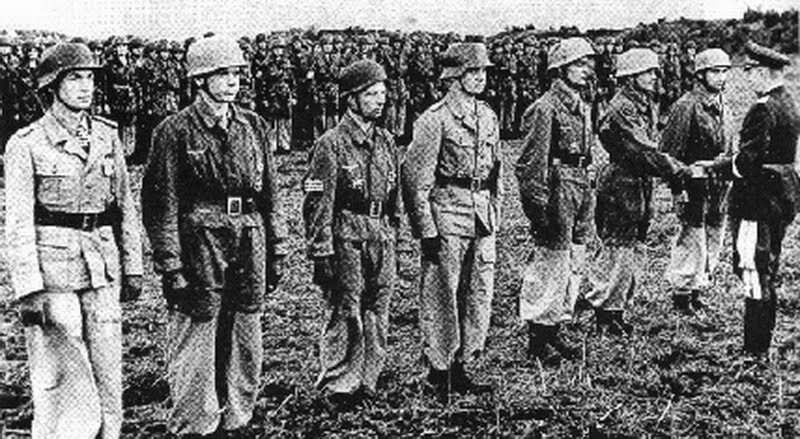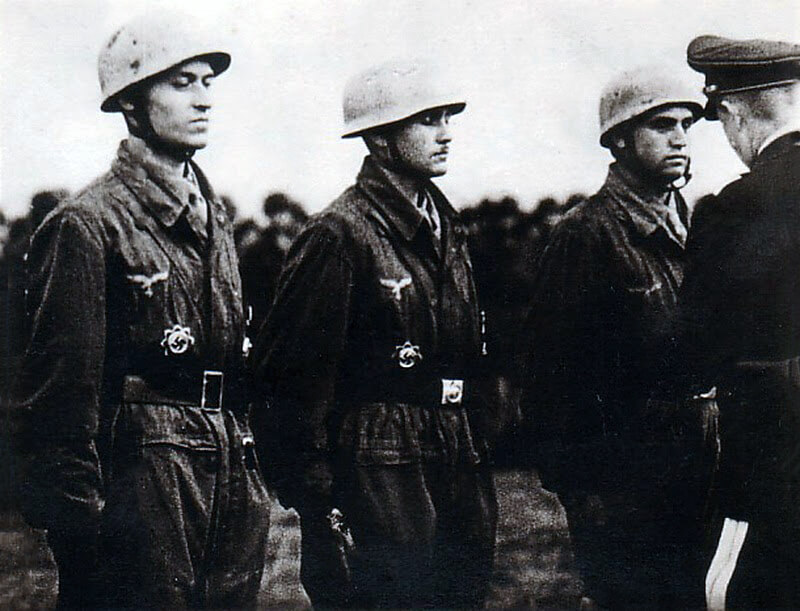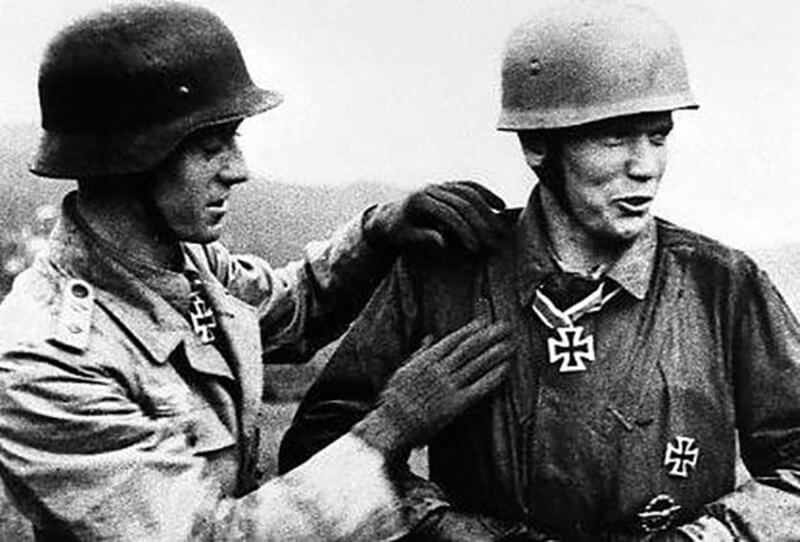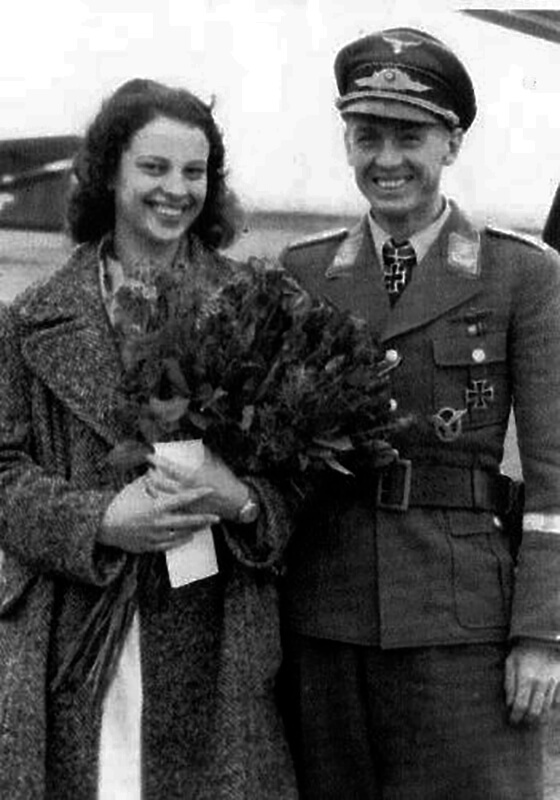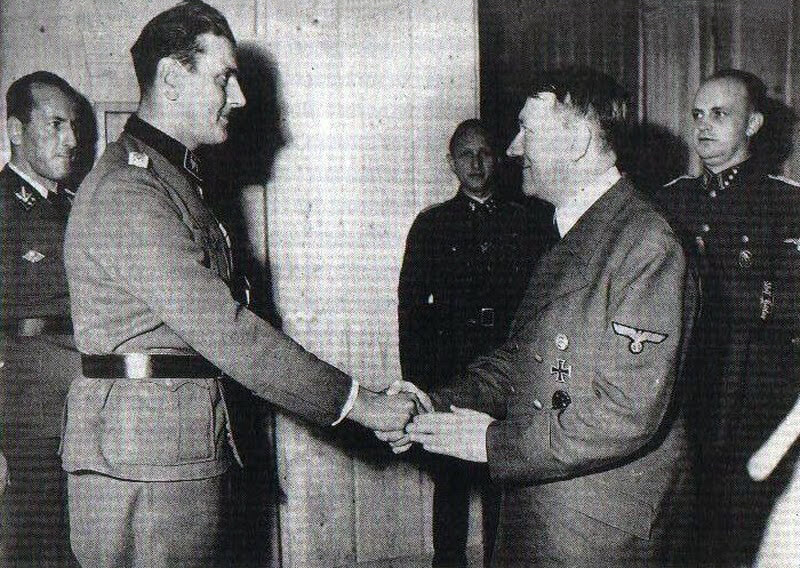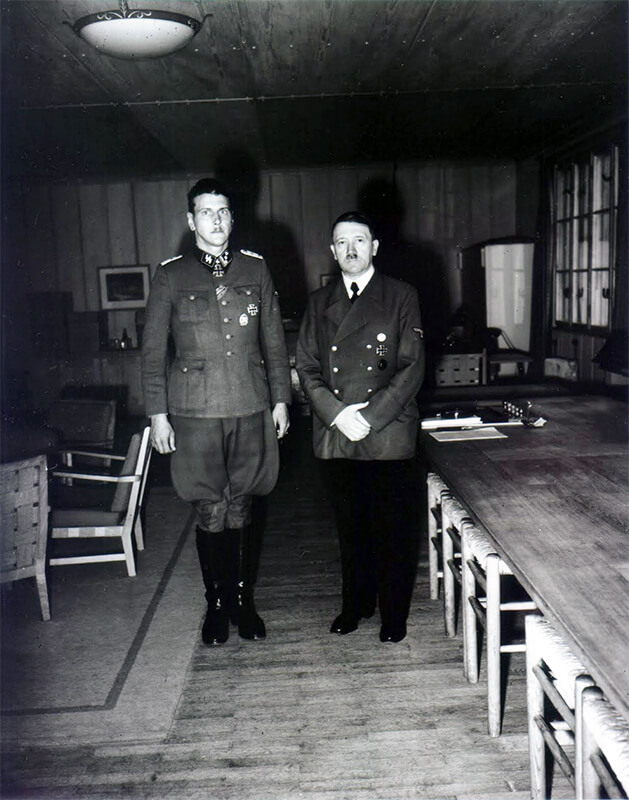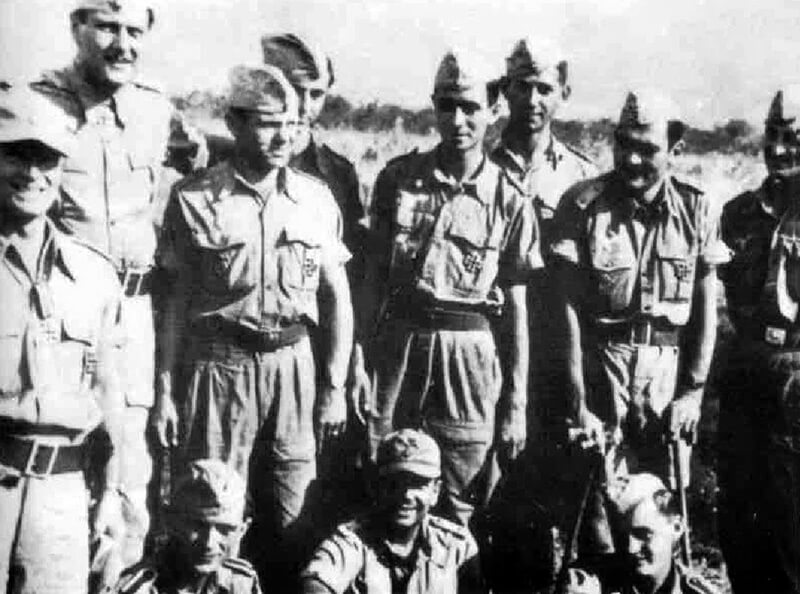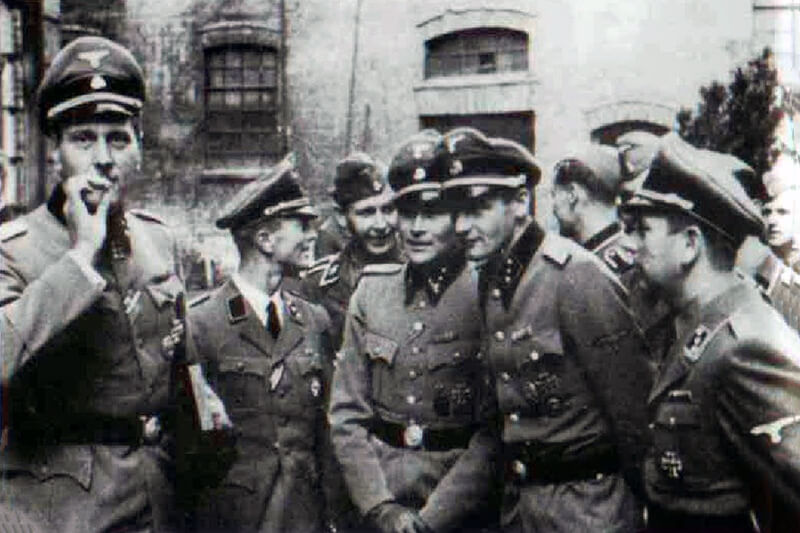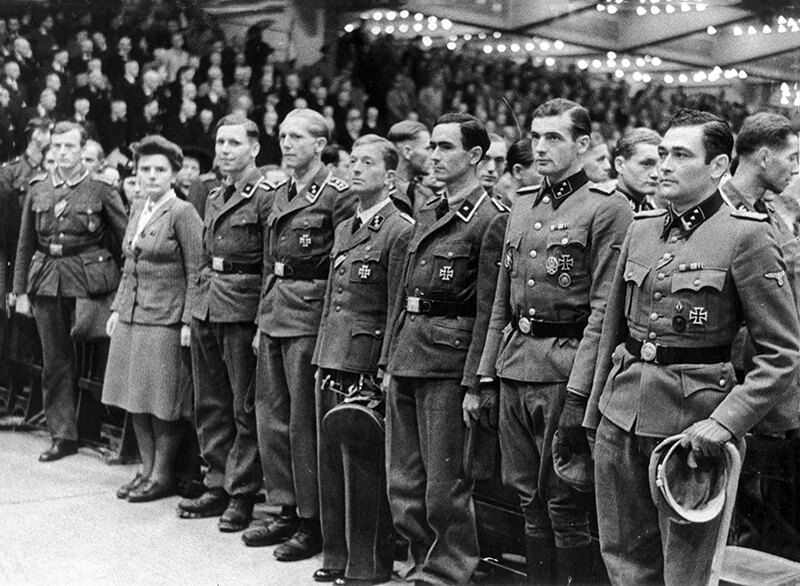| Page Created |
| April 13th, 2023 |
| Last Updated |
| March 2nd, 2024 |
| Germany |
 |
| Special Forces |
| Fallschirmjäger SS Sonderverband z.b.V. Friedenthal |
| September 12th, 1943 |
| Unternehmen Eiche |
| Objectives |
- Liberate the captured former Prime Minister of Italy, Benito Amilcare Andrea Mussolini.
| Operational Area |
Gran Sasso Area, Italy.
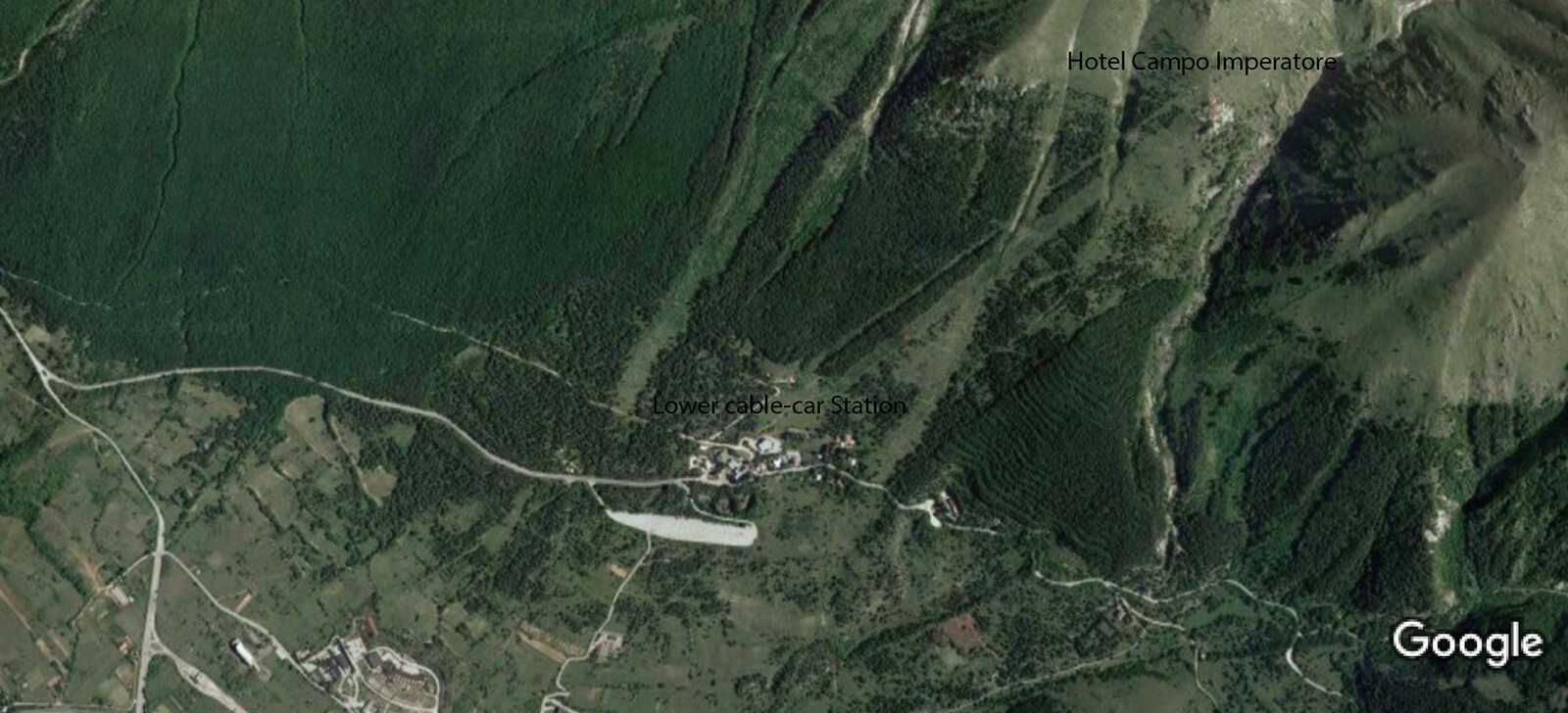
| Unit Force |
- Fallschirmjäger-Lehr-Regiment
- Stabskompanie
- 1. Kompanie
- 2. Kompanie
- SS Sonderverband z.b.V. Friedenthal
| Opposing Forces |
- Two hundred Italian Carabinieri policemen
| Operation |
| Italy Collapsing |
As 1943 begins, Italy finds itself on the brink of defeat in World War II. The collapse of the African front on November 4th, 1942, and the subsequent Allied landings in North Africa from November 8th to November 12th, 1942, leave Italy vulnerable to an Allied invasion. This situation is compounded by the defeat of the Italian expeditionary force in Russia and the continuous bombings in Italian cities, combined with food and fuel shortages, which lead to widespread demoralization among the Italian population. A growing majority of Italians now desire an end to the war and the breaking of their alliance with Germany. Italy’s dependence on German support is critical, especially to maintain control over Tunisia, their last stronghold in Africa.
During this challenging period, Italy’s leader, Benito Mussolini, believes that the Mediterranean theatre is vital for a turnaround in the war. However, his plans face a significant setback during a meeting with Adolf Hitler at Klessheim on April 29th, 1943. Hitler dismisses Mussolini’s proposal for a separate peace with Russia and refuses to move the German Army to the south. This refusal is a significant blow to Italian morale, as the Wehrmacht, losing faith in Italy’s resolve, declines to send reinforcements to Tunisia.
In this difficult situation, different groups – including the Royal Court, anti-Fascist parties, Fascists, and the General Staff – start to look for exit strategies from the war. Notable figures like Crown Princess Marie-José and members of the pre-Fascist elite begin to initiate contact with the Allies. However, following the Allies’ demand for unconditional surrender at the Casablanca Conference, these efforts face significant challenges.
The anti-Fascist parties, weakened by two decades of dictatorship, are largely inactive, awaiting guidance from King Victor Emmanuel III. The King’s reluctance to act is influenced by his personality, fears, constitutional doubts, and the potential fall of the monarchy regardless of the war’s outcome. He is also distrustful of those who suggest that the Anglo-Americans would be lenient towards Italy.
King Victor Emmanuel III continues to place his trust in Mussolini, hoping for a resolution to the crisis. Meanwhile, General Vittorio Ambrosio, the Chief of the General Staff, loyal to the King but opposed to the Germans, prepares for Italy’s possible defeat. He positions officials loyal to the King in key military roles and tries to repatriate Italian forces discreetly.
On February 6th, 1943, Mussolini conducts a major government reshuffle, the most extensive in the 21 years of Fascist rule. This includes replacing almost all ministerial positions in an attempt to address public dissatisfaction with the Fascist Party, but the reshuffle fails to have the desired effect. Among the new appointees, Undersecretary of Foreign Affairs Giuseppe Bastianini recognises the seriousness of the situation. Like Mussolini, he seeks peace between Germany and the USSR and aims to form a bloc of Balkan countries, led by Italy, to counterbalance German influence in Europe. On April 14th, 1943, Mussolini replaces the Chief of Police with Lorenzo Chierici, and five days later, appoints Carlo Scorza as the new Party secretary in a move to revitalize the Fascist Party.
| May 13th, 1943 |
The fall of Tunis signifies a crucial shift in the strategic balance. Germany, recognizing Italy’s importance as an outer bastion of the Reich, prepares for Unternehmen Alarich and Unternehmen Konstantin. These plans are intended to occupy Italy and the Balkan regions under Italian command, with the aim of taking control and disarming Italian forces ahead of their anticipated armistice with the Allies. In response, the Germans propose an increase in land forces in Italy. However, both Ambrosio and Mussolini resist, asking instead for more aircraft to preserve Italian independence.
In late May, pre-Fascist politicians Ivanoe Bonomi and Marcello Soleri meet with d’Acquarone and the King’s aide, General Puntoni, advocating for Mussolini’s arrest and the establishment of a military government. However, these meetings result in frustration due to the King’s lack of action.
| June 4th, 1943 |
Dino Grandi, president of the Chamber of Fasces and Corporations, meets with King Victor Emmanuel III. Despite his long association with Mussolini, Grandi envisions a post-Fascist Italy and proposes a plan to remove Mussolini and challenge the Germans. However, the King, bound by his constitutional role, insists on a formal process involving either the parliament or the Fascist Grand Council.
| June 11th, 1943 |
The Allied capture of Pantelleria the first Italian territory to fall, underlines Italy’s precarious position. Mussolini had heavily fortified the island, yet it succumbs to the Allies after just a week of intense bombardment, indicating the imminent threat of an Allied invasion of Sicily, Sardinia, Corsica, or Greece.
During this period, King Victor Emmanuel III starts considering withdrawing from the war. Influenced by Duke Pietro d’Acquarone, Minister of the Royal House, he is concerned about the future of the monarchy, as public opinion begins to turn against it due to the King’s inaction.
| June 19th, 1943 |
A significant cabinet meeting takes place, highlighted by Senator Vittorio Cini’s confrontation with Mussolini about finding a way to exit the war. Cini’s subsequent resignation signals a waning of Mussolini’s influence. Despite being warned about various plots, Mussolini remains dismissive.
| June 24th, 1943 |
Mussolini’s last major speech as prime minister further reveals his diminishing grip. His confused and incoherent rhetoric, particularly a misstatement about the Anglo-Americans occupying Italy, reflects to many Italians a deep-seated problem with their leader.
| June 30th, 1943 |
Politician Ivanoe Bonomi proposes three generals—Ambrosio, Marshal Pietro Badoglio, and Enrico Caviglia—as potential successors to Mussolini in a discussion with Crown Prince Umberto.
| July 4th, 1943 |
By now there are signs that the Crown is open to a change in government. Badoglio, a former Chief of the General Staff and a personal friend of Duke d’Acquarone, emerges as a leading candidate.
| July 10th, 1943 |
During the night the Allies start landing in Sicily, executing Operation Husky. Despite anticipating the invasion, the Italian forces, mirroring the situation in Augusta – Sicily’s fortified stronghold – offer only initial resistance before being overwhelmed. This quick collapse signals the impending loss of Sicily.
| July 15th, 1943 |
King Victor Emmanuel III meets with Marshal Pietro Badoglio. Badoglio, having expressed willingness to lead a coup with or without royal support, is informed by the King of his upcoming role as head of government. The King, opposing a political government, advises Badoglio against seeking an immediate armistice.
| July 16th, 1943, |
Giuseppe Bastianini, the Undersecretary, approaches Mussolini at Palazzo Venezia to present a telegram for Hitler, expressing dissatisfaction over the lack of German reinforcements. Mussolini approves the message and authorizes Bastianini to establish covert contacts with the Allies, with the stipulation of Mussolini’s non-involvement. Giovanni Fummi, a Vatican banker, is selected as the secret emissary, tasked with reaching London through Madrid or Lisbon. That evening, Bastianini meets with Cardinal Maglione, the Vatican Secretary of State, delivering a document outlining Italy’s position regarding a potential unilateral exit from the war.
Following the losses of Tunis and Pantelleria, a widespread belief settles over Italy that the war is essentially lost. The Sicilian landing further deepens this crisis. The Fascists are particularly shocked by the lack of resistance and begin to question Mussolini’s inaction. Italy is now at a crossroads, needing an institution capable of decisive political action.
Dino Grandi, one of the few Fascist leaders with a concrete plan, proposes deposing Mussolini, allowing the King to form a government devoid of Fascists, and confronting the German army in Italy. He hopes this could lead to a mitigation of the Casablanca declaration for Italy. Meanwhile, new Party Secretary Carlo Scorza, aligning with the hardliner Roberto Farinacci, envisions a total war strategy and the political preservation of Mussolini. Farinacci, working closely with the Germans, and Scorza, aiming for direct Party control, both support a totalitarian solution in partnership with Germany. Others, however, advocate for returning emergency war powers to the King. Farinacci finds himself increasingly isolated, with no moderate Fascist leader possessing enough influence to navigate the crisis.
| July 22nd, 1943 |
Among the available state institutions – the Party, the Chamber of Fasces and Corporations, the Senate, and the Grand Council – the Senate, with its remaining anti- or pre-Fascist members, and the Grand Council, where several are against Mussolini, emerge as potential platforms for action. A motion by 61 senators calling to convene the Senate, is thwarted by Mussolini, who alone can summon the Grand Council and decide its agenda.
In the critical days of July 1943, Sicily falls rapidly, laying bare the Italian armed forces’ inability to resist an invasion of the mainland without substantial German aid. Mussolini, aware of the dire situation, writes to Hitler requesting a meeting to discuss Italy’s plight. However, the letter is never sent, as Hitler, well-informed by his ambassador to the Vatican and Himmler’s agent Eugen Dollmann, pre-empts Mussolini’s move and asks for an immediate meeting due to concerns about Mussolini’s lack of action and the ongoing Italian military debacle.
| July 19th, 1943 |
Before this crucial meeting in Feltre, Vittorio Ambrosio, the Chief of Staff of the Italian Armed Forces, gives Mussolini a stark deadline: Italy must disengage from Germany within two weeks. The meeting takes place at Senator Achille Gaggia’s villa in Feltre. Here, Mussolini, Bastianini, and Ambrosio meet with Hitler and the generals of the Oberkommando der Wehrmacht. The German delegation, notably absent of high-ranking officials like Göring or Ribbentrop, signals a focus on military strategy. Ambrosio has meticulously prepared for this meeting, impressing upon Mussolini the urgency of exiting the war promptly.
The Germans, having lost confidence in the Italians, express interest only in occupying northern and central Italy themselves, while leaving the Italian army to fend off the Allies. They even propose that the Axis command in Italy be headed by a German general, such as Erwin Rommel. The meeting begins with Hitler openly criticizing the Italians for their weak military performance and demanding rigorous measures.
However, the meeting is abruptly disrupted with news that Rome is being heavily bombed by the Allies for the first time. Ambrosio and Bastianini urge Mussolini to communicate the need for a political solution to Italy’s situation to Hitler. Mussolini finds himself tormented by the decision of whether to abandon the alliance or continue the war. He struggles to assert himself in front of Hitler, feeling a sense of inferiority. Ultimately, the meeting, initially scheduled to last three days, is abruptly cut short by Mussolini, much to Hitler’s annoyance. After saying goodbye to Hitler in Belluno, Mussolini returns to Rome in his personal aircraft, witnessing the aftermath of the bombing.
In response to this inaction, Dino Grandi takes the initiative. During the evening, he departs from Bologna with a preliminary draft of his Order of the Day to be presented to the Grand Council. He reaches Rome the next day.
| July 20th, 1943 |
In the wake of the Feltre meeting’s failure and Rome’s first bombardment, Italy’s situation escalates rapidly. The day following Feltre, Mussolini engages in two significant meetings with Ambrosio. In their latter conversation, Mussolini divulges his intention to reach out to Hitler, acknowledging Italy’s need to exit the alliance. Ambrosio, still irked by the lost opportunity at Feltre, offers his resignation, but Mussolini declines it. Recognizing Mussolini’s diminished efficacy, Ambrosio resolves to activate his plans for a putsch.
Meanwhile, Dino Grandi and his ally, the Italian nationalist leader Luigi Federzoni, are gauging support for Grandi’s proposal within the Grand Council. They estimate that out of the 27 members, a handful supports it, several are against it, and the majority remains undecided. Grandi, aware that few of his colleagues can fathom the true consequences of his Order of the Day – which entails Mussolini’s ouster, the end of the Fascist Party, and a potential war against Germany – opts for a deliberately vague draft to keep it open to interpretation.
| July 21st, 1943 |
Mussolini, responding to the mounting pressure, instructs Scorza to summon the Grand Council. The invitation is issued the next day. Grandi, seizing the moment, explains his Order of the Day to Scorza, who concurs with its direction. However, when Scorza presents the Order of the Day to Mussolini, it is bluntly rejected as “not admissible and cowardly.” In response, Scorza clandestinely prepares an alternative Order of the Day, aiming to consolidate power within the Fascist Party.
| July 22nd, 1943 |
The following day, Mussolini reports to King Victor Emmanuel III about the Feltre meeting. According to accounts, Mussolini assures the King of Italy’s disengagement from the war by mid-September. This delay is partly due to ongoing negotiations with the Allies and Mussolini’s need to rationalize Italy’s impending defection. Despite the King’s agreement, he increasingly contemplates a putsch, particularly in light of Farinacci’s scheming to seize control and align Italy more closely with Germany. The King’s decision ultimately hinges on the Grand Council’s stance on Grandi’s Order of the Day.
On the same day, Grandi visits Mussolini under the guise of discussing a new book. Their meeting, initially brief, extends significantly. It’s apparent from their conversation that Grandi implores Mussolini to consider resigning to avert a national disaster. Despite Grandi’s persuasion, Mussolini remains defiant, pinning his hopes on a secret weapon he believes Germany is on the cusp of deploying.
In the meantime, modifications are made to Grandi’s Order of the Day by several key figures, clarifying the Grand Council’s constitutional authority to depose Mussolini. This action underscores the Duce’s governance under the King’s authority, as per the “Leggi Fascistissime” of 1925. The revised Order of the Day, now more direct in its implications, draws support even from Ciano, Mussolini’s son-in-law, who is unaware of the grave personal consequences this decision will entail.
In the days leading up to the critical Grand Council meeting, Grandi intensifies his efforts, contacting other members to rally support for his course of action. The stage is set for a momentous confrontation, one that will irrevocably alter the course of Italy’s history and the fate of its Duce.
| July 24th, 1943 |
At 17:00, the twenty-eight members of the Grand Council assemble in the parrot room, adjacent to Mussolini’s office in Palazzo Venezia. This meeting is unprecedented in the Council’s history: for the first time, neither Mussolini’s bodyguards, the Moschettieri del Duce, nor members of the “M” battalions are present in the Renaissance palace. Instead, the area is secured by fully armed Blackshirts.
Mussolini, choosing not to have a stenographer, ensures that no official record of the meeting is taken. Dino Grandi arrives at the meeting with two concealed Breda hand grenades, having revised his will and attended confession, prepared for the possibility that he might not leave alive.
Mussolini initiates the meeting by recounting the history of the supreme command and suggesting that its assignment to him had been influenced by Badoglio. He reviews recent war events and expresses readiness to move the government to the Po Valley, then asks the members to express their views on “il dilemma” – the choice between continuing the war or seeking peace.
De Bono, one of the two remaining living quadrumvirs, is the first to speak, followed by Farinacci and De Vecchi. Grandi then presents his document, concluding with a quote from Mussolini about sacrificing factions for the nation’s survival. Farinacci, in his turn, contends that the true betrayal is not of the constitution, but of Fascism itself. He calls for the elimination of democrats and liberals within the Party and the generals, proposing to unify the war direction with Germany under the King’s command.
After minor speeches, including one by Bottai, a Fascist intellectual, and Ciano, who debates the history of the alliance with Germany, the meeting extends into the night. At 23:30, Mussolini suggests postponing the meeting, but Grandi insists on a vote, emphasizing the urgency due to the ongoing sacrifices of Italian soldiers. This marks the first time a vote is called in the Council’s 20-year history.
Mussolini reluctantly agrees to the vote and suspends the meeting for 10 minutes. During this time, Grandi gathers signatures for his Order of the Day.
| July 25th, 1943 |
After further debate, Mussolini warns that approving Grandi’s Order of the Day could mean the end of Fascism and expresses doubt that this would satisfy the Anglo-Americans. He maintains his belief in victory and warns of consequences should the King not reaffirm his trust in him.
Despite Mussolini’s foreboding speech, Grandi counters, accusing Mussolini of blackmail and prioritizing loyalty to the nation. Scorza then surprises everyone by presenting his own Order of the Day, proposing to consolidate power within the Fascist Party.
As the discussion continues, Suardo withdraws his support from Grandi’s Order of the Day, suggesting a unification of the three documents. Ciano urges Farinacci to withdraw his Order of the Day in favour of Grandi’s, but Farinacci refuses. Bottai declares voting for Grandi a matter of honour.
After nine hours of debate, Mussolini closes the meeting at 02:00 and orders Scorza to conduct the vote. Scorza votes against Grandi’s Order of the Day, but Marshal de Bono’s “yes” vote sways the undecided. Grandi’s Order of the Day ultimately secures nineteen votes in favour and 8 against. Mussolini acknowledges the approval and asks who should inform the King. Grandi responds: “You”, leading Mussolini to remark, “You provoked the regime crisis”.
After the meeting, Mussolini remains with Scorza, discussing the legal standing of the Order of the Day and concluding that it is merely a recommendation to the King. Despite Scorza’s advice, Mussolini refuses to accept the Order of the Day. Before joining his wife at Villa Torlonia, he phones his mistress, Claretta Petacci, and expresses his despair: “We have arrived at the epilogue, the greatest watershed in history”; “The star has darkened”; “It’s all over now”. Scorza then accompanies Mussolini to Villa Torlonia, arriving at 03:00 in the morning.
In the early hours following the Grand Council meeting, Dino Grandi meets with Pietro d’Acquarone, discussing until 06:00. By 07:00, the King is informed of the meeting’s outcome. He quickly acts, notifying Badoglio that he will succeed Mussolini, with the transition planned for July 19th,1943.
Meanwhile, Mussolini starts his day unaware of the brewing storm. He finds a letter from Tullio Cianetti on his desk, withdrawing support for the Grandi Order of the Day. Mussolini, attempting to assert control, orders a search for Grandi at his Montecitorio office. Unbeknownst to Mussolini, Grandi is not in Rome, possibly evading involvement in armistice discussions with the Allies.
Amidst this, Mussolini requests an audience with the King to report on the previous night’s meeting. This request unsettles the King, who has already resolved to arrest Mussolini that day. The arrest is to be executed at 17:00 at Villa Savoia, orchestrated by General Castellano in collaboration with General Angelo Cerica, Commander-General of the Carabinieri. Lieutenant Colonel Giovanni Frignani oversees the arrest, with Captain Paolo Vigneri of the Carabinieri assigned to carry it out.
Before visiting the King, Mussolini meets with the Japanese ambassador, Shinrokuro Hidaka, who has been waiting for weeks. Mussolini requests that Hidaka ask Japan’s Prime Minister, General Hideki Tojo, to persuade Hitler to negotiate with Stalin, indicating Italy’s possible exit from the alliance. Later, Mussolini inspects bomb damage in the San Lorenzo quarter. His wife, Donna Rachele, cautions him against meeting the King, suspecting a betrayal. Mussolini, however, trusts in Victor Emmanuel’s friendship.
At Villa Savoia, Mussolini presents the King with the Grandi Order of the Day and Cianetti’s letter, arguing against its legal validity. However, the King insists on Mussolini’s resignation, appointing Badoglio as his successor. Mussolini, concerned for his future, is assured of his and his family’s security by the King. After the meeting, Captain Vigneri escorts Mussolini to an ambulance for safety, but they eventually proceed in his car to the “Podgora” army barracks, later transferring to the “Legnano” Carabinieri barracks in Prati.
Upon receiving news of Mussolini’s arrest around 19:30, the Germans immediately notify Berlin, inciting Hitler’s fury. Farinacci, one of the key Fascist figures, promptly visits the German embassy, where he is met by Generalfeldmarschall Albert Kesselring. Kesselring suggests that Farinacci join the armoured Division “M,” a unit of committed Fascists stationed at Monterotondo, near Rome. This division could potentially march on Rome to liberate Mussolini. However, Farinacci declines the offer and instead requests to be transported to Germany. He departs Italy by plane from Frascati, landing in Munich.
Following these events, communications are disrupted, and the new Chief of Police, Senise, orders the arrest of all gerarchi in Rome. The Ente Italiano per le Audizioni Radiofoniche (EIAR or Italian Body for Radio Broadcasting), linked to the Milizia Volontaria per la Sicurezza Nazionale (the Blackshirts), is isolated. Scorza, Secretary of the Party, is arrested but later released after pledging loyalty to the new government. The Milizia Volontaria per la Sicurezza Nazionale’s Chief of Staff, Lieutenant General Enzo Galbiati, advocates against action, pledging loyalty to both the Duce and the King. Despite some officers’ willingness to react, the Milizia Volontaria per la Sicurezza Nazionale is integrated into the Regio Esercito and disbanded.
The new Italian government under Pietro Badoglio has only one goal: to terminate the troublesome alliance with Nazi Germany and make peace with the Allies. The Duce is to be used as a bargaining chip in the peace negotiations, as the Americans intend to publicly prosecute him before the League of Nations.
That night, Mussolini receives a letter from Badoglio explaining his custody’s necessity. Mussolini offers his help to the new government and requests transfer to his summer residence.
At 22:45, Titta Arista, colloquially known as the “voce littoria,” delivers a historic broadcast. He announces Mussolini’s resignation and Badoglio’s rise to the premiership, ending with a definitive note: “The war goes on. Italy will be true to its word.” As the radio transmission ceases, the reality of this momentous change gradually dawns on the people of Rome.
Across Italy, men and women step out to remove Fascist emblems and propaganda posters from buildings. In Rome, the government detains senior Fascists at Forte Boccea, the city’s military prison at the time. Remarkably, the transition occurs with minimal violence, primarily limited to the removal of Fascist pins and impromptu toasts to Badoglio.
Without a single shot fired, Mussolini’s 21-year rule collapses. However, from July 26th, 1943, of until August 8th, 1943, a significant German military presence is established in northern and central Italy without the consent of the Italian authorities. This deployment comprises eight divisions and one brigade – the very same troops that Hitler had refused to provide to Mussolini just two weeks earlier at the Feltre meeting.
That same night, German military forces spring into action. Units from the 44th Infantry Division and the 36th Mountain Brigade of the German Army breach the Alpine passes at Brenner, Reschen, and Toblach, swiftly occupying South Tyrol. Other German units penetrate Italy from the Julian and Piedmontese borders, with the trains carrying these troops adorned with praises and images of Mussolini.
| July 26th, 1943 |
Hitler summons several officers to the Wolf’s Lair, including General der Flieger Kurt Student, the highest-ranking general of the elite Fallschirmjägers, whom he orders, “Go to Rome as soon as possible with all available parachute troops. One of your special tasks is to locate and rescue my friend Mussolini. He is about to be handed over to the Americans.” General Student’s primary goal is to rescue Mussolini, but he is also instructed to seize control of Rome if the opportunity presented itself.
Heinrich Himmler, the chief of the SS, is not willing to miss out on the chance for recognition and persuaded Hitler to allow his troops to participate. Himmler puts Otto Skorzeny forward. Hitler asks Skorzeny to help Student. Skorzeny claims Hitler said. “I cannot and will not abandon the greatest son of Italy. He must be rescued soon. I hereby order you to carry out this operation.” This is highly unlikely.
Up until 1943, the German Fallschirmjäger are well-known for carrying out the special missions. Since 1937, they are trained as a unit in their special skills and have utilised in various successful operations, including the assault on Eben Emael, the Battle of Rotterdam, the occupation of Narvik, the assault on the Corinth Canal, and the costly airborne invasion of Crete. These paratrooper units have great cohesion and have trained extensively to achieve their successes. In contrast, Skorzeny’s battalion Sonderverband z.b.V. Friedenthal is a newly formed unit, designed to operate in small groups behind enemy lines in the Eastern theater of war, carrying out reconnaissance, minor sabotage, and assassinations. It is highly unlikely that within just a few months, Skorzeny is able to transform this group of men from various branches and services into a cohesive assault unit, experienced and skilled in infantry tactics and capable of executing special/commando operations.
Undertaking an operation such as Unternehmen Eiche, which involved an assault with Lastensegler on the challenging terrain of Gran Sasso, required a significant amount of experience. Unfortunately, Skorzeny and his team lack this experience, making it highly improbable for them to plan and execute the operation independently. Especially since Skorzeny himself had no tactical training or experience.
General Kurt Student requires assistance in finding Mussolini after Hitler gives him the order to liberate and bring him to Germany. This task aligns perfectly with the intelligence operations conducted by Skorzeny’s Sonderverband z.b.V. Friedenthal, making it clear why Hitler choose Skorzeny to support Student. Karl Radl’s account also supports this by mentioning that both Skorzeny and Mors are under Student’s command, without one having authority over the other.
Otto Skorzeny his Adjutant Karl Radl recount how they work alongside other German troops in the search for Mussolini. It is not clear whether these units are officially attached to Skorzeny’s team. Instead, they appear to be cooperate and provide support by sharing intelligence on Mussolini’s whereabouts. Commanding officers who are aided by Skorzeny’s intelligence use this information to lead their units and carry out the operation.
These relationships of support and cooperation raise questions about Skorzeny’s and Radl’s accounts of their own roles and contributions to Unternehmen Eiche and the successful rescue of Mussolini. This is seen threw out the whole operation.
| July 27th, 1943 |
General Kurt Student and Otto Skorzeny fly to Rome and meet with Field Marshall Albert Kesselring. Skorzeny is tasked with finding Mussolini and collaborates closely with SS-Sturmbannführer Kappler, who aids the German embassy in Rome and has connections to both the Italian police and SS-Obersturmbannführer Dollmann. The latter serves as the Reichsicherheitshauptamt (RSHA) liaison officer in Rome and has ties to the Italian elites. Initially, the Germans have an incomplete intelligence picture and are unaware that Mussolini is being held captive near General Kesselring’s headquarters.
That very same day Mussolini is moved from Rome to the island of Ponza.
Meanwhile, Skorzeny’s second in command SS-Obersturmführer Karl Radl selected forty men from the SS Sonderverband z.b.V. Friedenthal for the mission to search for Mussolini.
| July 28th, 1943 |
Mussolini arrives on the island of Ponza.
| July 30th, 1943 |
The men from SS Sonderverband z.b.V. Friedenthal arrive in Rome. Their mission seems hopeless without local contacts. They stumble around in the dark for weeks. This is when the German police and the Sicherheits Dienst step in. Their chiefs, Herbert Kappler and Wilhelm Höttl, bribe high-ranking Carabinieri officers with counterfeit money from Unternehmen Bernhard. The information indicates that Mussolini is moved from the island of Ponza, to La Spezia.
| August 7th, 1943 |
Just as Otto Skorzeny is about to launch a rescue attempt in La Spezia, Italy, he receives news that Mussolini has been moved several hours earlier. Skorzeny makes the decision to abort the mission due to the changed circumstances. Later investigations reveal that Skorzeny’s intelligence is flawed. Mussolini was never at La Spezia.
However, that very same day Mussolini is moved from of the island of Ponza, Italy with a destroyer.
| August 8th, 1943 |
The destroyer carrying Mussolini arrives on the island of La Maddalena off the coast of Sardinia, Italy.
| Mid-August |
Skorzeny receives word from German Army Captain Hunäus, who was working with the Italian Army, that a special prisoner was being held in La Maddalena. Skorzeny and SS-Obersturmführer Warger travel to the island in disguise by minesweeper to gather intelligence.
| Augus 26th, 1943 |
Skorzeny and SS-Obersturmführer Warger are at La Maddalena. They discover that a grocer delivers fruit to Villa Weber, the suspected location of Mussolini’s captivity, every day. Skorzeny approaches the grocer and discusses the possibility of Mussolini having been killed already. The grocer claims he has just seen Mussolini earlier that day and is convinced to bet that he wis still alive.
| August 28th, 1943 |
Possible alerted by Skorzeny’s research Mussolini is flown by an Italian CANT Z 506 seaplane from the island of Maddalena off the coast off Sardinia to Lago di Bracciano.
| September 1st, 1943 |
Mussolini arrives by car at the lower cable car station at the bottom of the Gran Sasso Mountain. By cable car he is brought to the Hotel Campo Imperatore at Gran Sasso.
By that time, German intelligence has lost contact with Mussolini and is unsure of his whereabouts. However, Kappler discovers a clue in a recorded phone conversation with the chief of police, which he relays to Student and Skorzeny.
| September 7th, 1943 |
U.S. Major General Maxwell D. Taylor secretly arrives in Italy to discuss the pending armistice with the Badoglio government.
| September 8th, 1943 |
Italy publicly surrenders to the Allied powers. Immediately German Forces attempt to occupy Rome and other regions in Italy. This event briefly diverts the attention from the mission to rescue Mussolini. By now, the Germans have gathered enough intelligence to feel confident that Mussolini is imprisoned at a mountain top hotel. Due to Italian surrender, General der Flieger Kurt Student, becomes concerned that Mussolini might be handed over to the Western Allies. He therefore redirects his efforts back to the rescue mission.
Three separate and uncoordinated reconnaissance missions are launched. Student dispatches Lieutenant Leo Krutoff to the Hotel Imperatore. Krutoff goes in under the disguise of searching for a potential convalescent site for German troops. Kappler sends his subordinate SS-Obersturmführer Erich Priebke. Meanwhile, Skorzeny, accompanied by his deputy Karl Radl, embarks on a Heinkel-111 bomber to take aerial photographs. All the reconnaissance missions confirm that Mussolini is being held captive at the Hotel Gran Sasso.
| September 11th, 1943 |

General der Flieger Student confirms that Mussolini is being held at Gran Sasso. He immediately tasks his subordinate, Major Otto-Harald Mors, with planning a rescue operation. Despite the very short timeframe, with an expected execution time of 0730 hours the next day, Mors and his second in command Oberleutnant Freiherr Georg von Berlepsch expertly and professionally put together a plan involving twelve gliders landing on a small open field near the hotel. Skorzeny had discovered the small open meadow during the aerial reconnaissance mission on September 8th, 1943.
A second component of the rescue force consists of twenty vehicles carrying the Stabskompanie, the 2. Kompanie and a part 1. Kompanie of the Fallschirmjäger-Lehr-Regiment under direct command of Major Otto-Harald Mors. This group is to secure the lower cable car station at Fonte Cerreto that connects the mountain top hotel to the outside world. The reason Major Mors went with the two companies in the valley, was because if anything went wrong with the glider force, he would still be in position to supervise the operation and decide what to do.
The problem was to get Mussolini off the mountain. Mors decided that taking him back by road was too dangerous. Two options were selected. The first one was to bring Mussolini down with the cable car to the lower cable-car station and fly him out from there. The second most dangerous option was to have a light plane land next to the hotel itself. The rocky meadows made it hard for any aircraft to land there. Therefor the last option would only be selected if they were unable to extract Mussolini for whatever reason from the lower cable-car Station.
The original plan for Unternehmen Eiche calls for four platoons of well-armed Luftwaffe Fallschirmjägers to be flown in by DFS 230 assault gliders. This comprised 90 Fallschirmjägers from the 1st Kompanie des Fallschirmjäger-Lehr-Regiment under the command of Oberleutnant Georg Freiherr von Berlepsch. Skorzeny and his men are not initially included in this assault plan.
However, Skorzeny is undeterred. He insists on his participation, asserting that he is personally commissioned by the Führer. Since Skorzeny’s efforts have helped to locate Mussolini, Student feels compelled to acquiesce. Skorzeny further persuades Student to allow him to take about fifteen of his own men along on the gliders. Despite his reluctance, Student agrees, feeling constrained by the circumstances. However, this decision enraged Von Berlepsch, as he is forced to leave behind fifteen Fallschirmjägers for men whom he perceives as having little value for him or the operation.
Student assures Mors: “He will participate as an observer. You could say as a political advisor.” Skorzeny also insists on bringing General del Polizia dell’Africa Italiana, Fernando Soleti as a liaison officer. Soleti is tasked with preventing the guards of Mussolini from resisting. Skorzeny interferes once again with the planning process and insists on bringing a photographer and journalist with the SS detachment. Although annoyed, Student goes along with Skorzeny’s suggestion, confident in the abilities of his soldiers to complete the mission. The planners quickly rearrange their plans. One platoon of Fallschirmjägers makes room for Skorzeny and fifteen men of SS Sonderverband z.b.V. Friedenthal, the General and the photographer and journalist. This reduces the number of participating Fallschirmjäger from 90 to 72.
All members of the Fallschirmjäger-Lehr-Regiment are wearing the regular Fallschirmjäger uniforms and helmets. They are supported by medics and equipped with assault rifles, machine guns, and grenades. Both Skorzeny and his Adjutant Obersturmführer Karl Radl claim that they are also issued with Fallschirmjäger uniforms and equipment. However, none of the pictures taken at Gran Sasso show them in or with this equipment. Skorzeny’s group is clearly identified by wearing only Luftwaffe tropical uniforms, standard Wehrmacht helmets, and the German standard rifle K-98. With these claims, both Skorzeny and Radl probably tried to exaggerate the role of their unit within the operation by asserting that their men were dressed as Fallschirmjäger.
The two photographers and journalists, Toni Schneider and Bruno von Kayser, also provide important information about what really happened during the assault and the role of Otto Skorzeny and his men.
| September 12th, 1943 |
It should be noted before reading the account of the glider assault that a lot of the story told from the memories of Skorzeny and his adjutant Radl. Other eyewitnesses and photographic evidence tell a somewhat different story. It looks like Skorzeny and Radl exaggerated their own role and minimised the role of others involved.
| The Ground Assault |
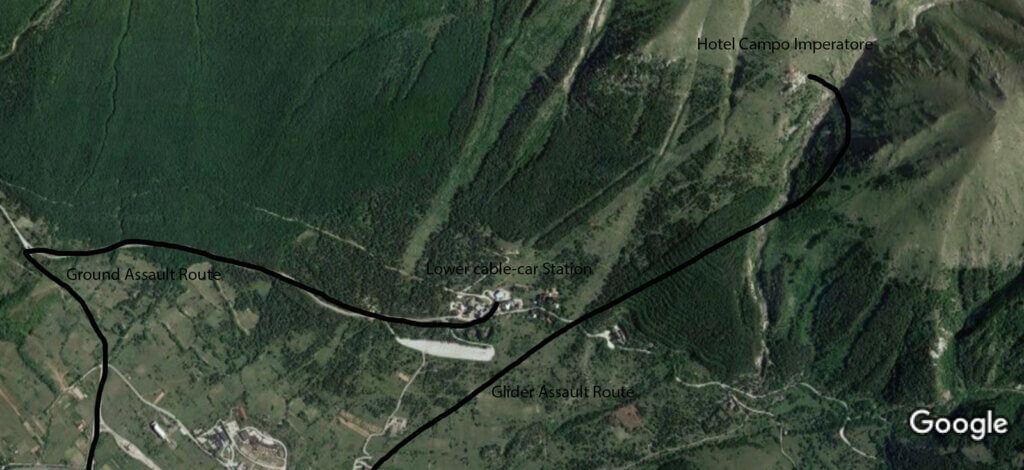
At 3:00, the ground operation of “Unternehmen Eiche” is launched. The ground column under command of Major Mors heading towards Gran Sasso takes a longer route. This due to the possibility of encountering Italian roadblocks with troops that are still resisting the German troops. This alternative route means that the large column attracts attention. Police prefect of L’Aquila, Rudolfo Biancorosso, decides to radio the Head of the Carabinieri Inspector General Giuseppe Gueli at Hotel Campo Imperatore. Gueli goes down to the lower cable car station at Fonte Cerrato to receive the warning from Biancorosso.
Upon returning to the upper station, Gueli increases the station guard to forty men. However, he does not warn his officers to raise the alarm, except for asking some of the guards to prepare mules in case they need to use them to bring Mussolini down the side of the mountain if the Germans captured the lower cable car stations.
At approximately 14:00 hours, the ground column of Fallschirmjäger reaches the lower cable car station. A brief firefight breaks out. However, the Italian Carabinieri personnel, who are outgunned, are quickly scattered. By 14:17 hours, the Germans radio the mission completion signal back to the operation headquarters. With it indicating that they have successfully completed their mission in Unternehmen Eiche.
| The Glider Assault |

The glider team has a delayed take-off from Pratica di Mare airfield, south of Rome, due to the late arrival of the gliders. Additionally, only ten out of the expected twelve gliders arrive, forcing Student to reduce the team size further.
The Glider Assault of Unternehmen Eiche starts between 13:05 and 13:11. Between that time period, three waves of three gliders and one of one glider take off from the military airfield Pratica di Mare. This airfield is situated thirty kilometres south of Rome. Each glider is towed by a towed by Henschel Hs 126. Oberleutnant Von Berlepsch, the commander of the airborne operation, is in the first glider of the first wave of three gliders. Skorzeny and his men from the Sonderverband z.b.V. Friedenthal are located in the fourth and fifth gliders of the second wave.
To attain extra height before crossing the nearby Albanian mountains, the leader of the formation in the leading aircraft, Captain Langguth (with von Berlepsch in tow), executes an extra loop before the mountains. However, the pilots of the second chain do not execute this additional loop perform by the first chain. They do not view it as necessary and do not want to risk jeopardising the predetermined arrival time at the destination. As a result, Skorzeny ends up leading the formation.
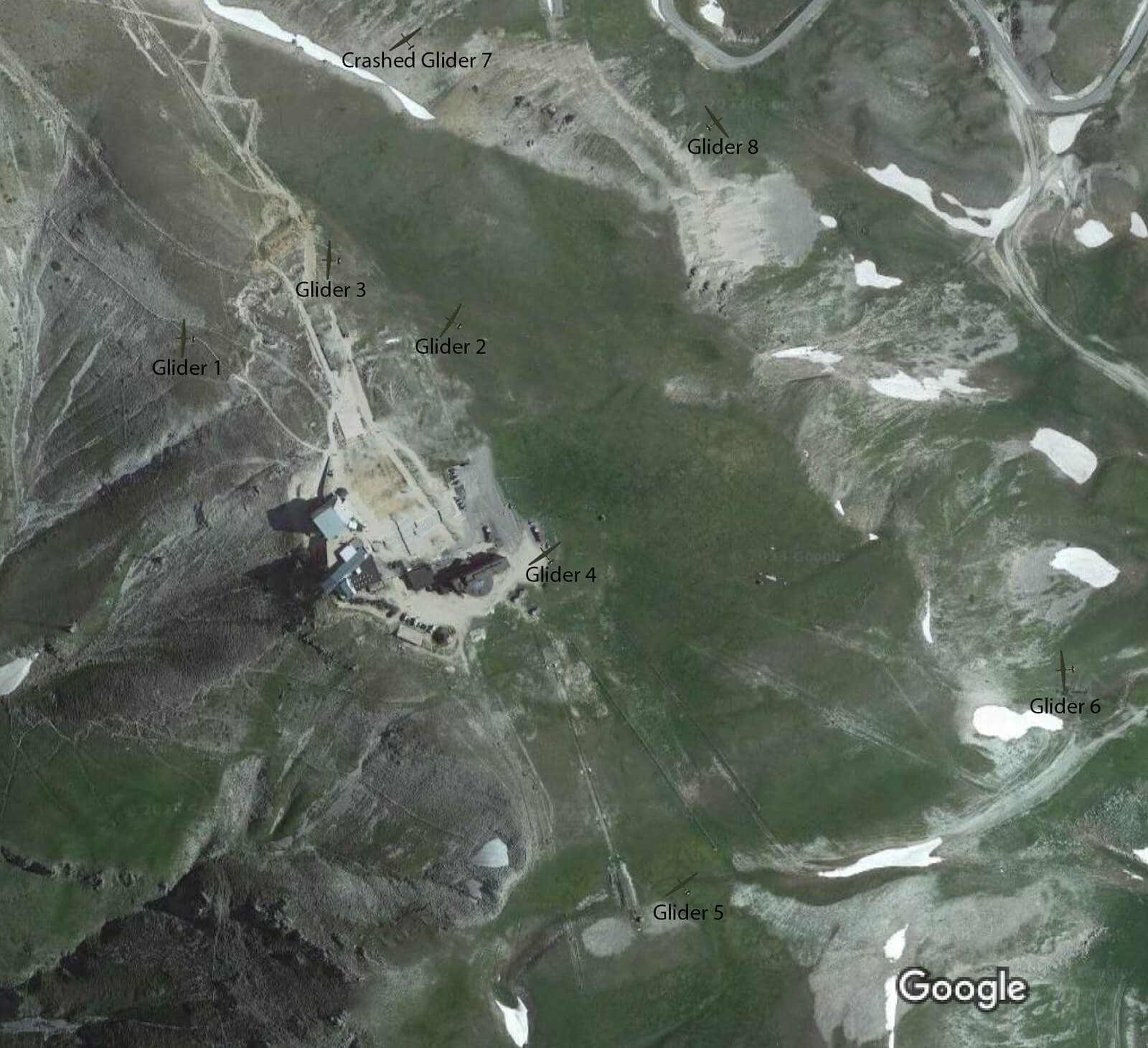
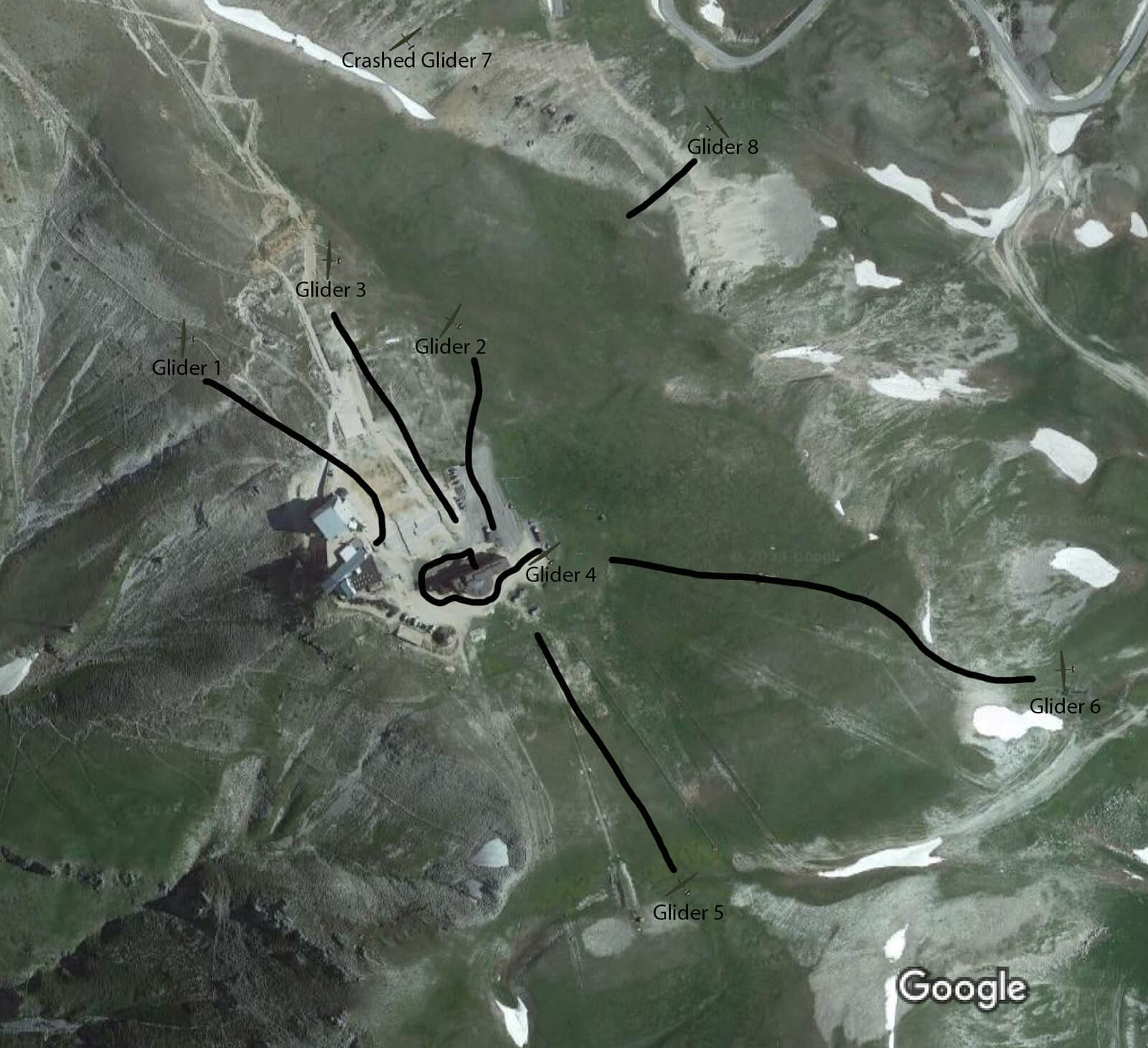
Skorzeny claims in his memoires that he deviated from the plan. He claims he convinces the pilot of his cargo glider to break away from the formation because he wants to be the first to reach Mussolini. Around 14:05 hours, the first glider lands outside the hotel carrying Skorzeny. As he himself recounts, his glider lands just fifteen meters away from the Hotel Campo Imperatore. After a rough landing, Skorzeny runs uphill towards the hotel, leaving his submarine gun in the glider and forgetting to give orders to his men.
General Soleti, also in that same glider tells the Italian Carabinieri troops in their own language to stand down and not fire their weapons, under penalty of death for committing treason. This confused the Italian Guards who were already confused by the recent armistice, and now being under attack by their former allies.
Hoping to gain entrance into the building, Skorzeny opens the first door, he comes across, thinking that it would lead him into the hotel. However, it turns out to be a dead-end room that housed the telephone switching equipment and a surprised operator. In frustration, Skorzeny kicks the chair, smashes the radio with the butt of his MP28, and runs back outside.
He is then joined by two SS Non-Commissioned Officers armed with MP-28 submarine guns and starts searching for the entrance to the hotel around the rear of the building. At this point, another glider arrives, but it crash-lands about one hundred meters in front of the hotel. Although the arrival of the Fallschirmjäger in this second glider is beneficial for the German operation, Skorzeny and his team have already caused the element of surprise to be lost.
When the raid begins, Gueli, is taking a nap. He is awakened by his men who report the attack. When he looks out of the window and sees the German airborne troops running towards the hotel. He yells “Don’t shoot!” to the Carabinieri guards below his window, which causes confusion since the guards are about to set up a defense.
Italian second-in-command Tenente Faiola takes charge and rushes up to Mussolini’s room to personally guard him. He contemplates whether Mussolini should be shot if the German troops enter the building. However, sensing the danger, Mussolini tells Faiola that if he kills the former Prime Minister, the German troops will likely execute the entire Carabinieri force in retaliation. This seems to convince Faiola to spare Mussolini’s life.
Shortly after, the remaining gliders arrive. The Fallschirmjäger follow their instructions and surround the hotel, securing the area in preparation for von Berlepsch’s glider to land. Despite the initial setbacks caused by Skorzeny’s team, the German soldiers are still able to mount a successful operation. Once von Berlepsch arrives with his platoon, he confirms that his troops have taken their positions and proceeds with some of his men towards the hotel. Oberleutnant von Berlepsch reports to Major Mors and Mors takes the cable cart to the Hotel. By that time, Skorzeny has already located Mussolini inside the hotel.
Around this time, according to Skorzeny’s memoires, Mussolini shows his face through the front window of the building. Skorzeny yells at him to move away from the window, as it could draw fire from the German troops.
Meanwhile Skorzeny and his men reach the front entrance of the hotel. The main entrance is blocked from the inside with furniture, making it hard for the SS men to enter the hotel. The Italian guards outside the building are standing around confused or have lowered their weapons altogether. Skorzeny climbs up the side of the building and reaches Mussolini’s room from the outside. Skorzeny tells Mussolini, “Duce, the Führer sent me to free you”. Mussolini responds, “I knew that my friend Adolf Hitler would not have abandoned me!”. It is about 14:15 hours, approximately ten minutes since Skorzeny landed.
Skorzeny claims he and his men use rifle butts to fight their way out of the hotel. Together, they leave the hotel, with Mussolini wearing a black coat, his fedora pulled down over his face.
Other eyewitnesses and photographs describe a somewhat different scenario. They describe Mussolini coming out, being surrounded by Italian and German soldiers. Skorzeny follows the group. While walking out, the Italians are still carrying their weapons on them. The witnesses say there are no signs of any Italian combativeness.
According to photographic evidence from Gran Sasso, Skorzeny is carrying only a Walther PPK pistol, despite his claim that he used the butt of his sub-machine gun to smash the radio of the Italian guardsmen. This inconsistency suggests that Skorzeny’s account of the events may be false. Additionally, the fact that Skorzeny’s men were likely unprepared for their participation in Unternehmen Eiche further reinforces this conclusion.
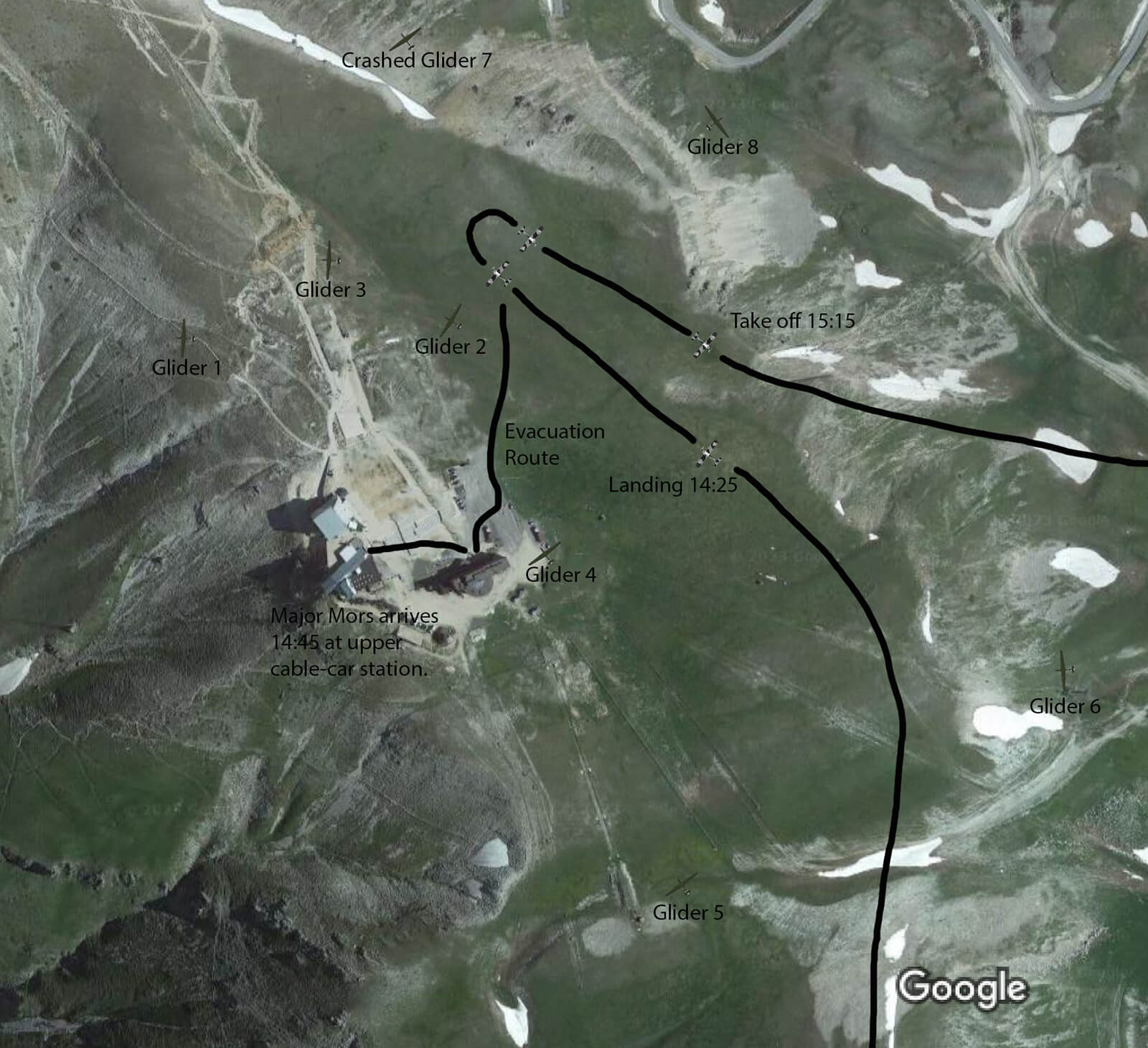
At 14:45, the commander of the operation, Major Otto-Harald Mors, arrives at the hotel by cable-car. After taking quite a few promotional photographs of the “free” Mussolini and his liberators they decide it is time to evacuate him.
The plan to land a light plane near the lower cable-car station is a no go when the light aircraft buckled a wheel on landing. So, they had to choose for most dangerous option which is to land a light plane next to the hotel itself. The
General Student’s pilot, Hauptmann Heinrich Gerlach lands his aircraft around 14:25. German troops, helped by the Italian guardsmen, prepare the field in front of the hotel for taking off by clearing it from obstacles and boulders as good as they can. Hauptmann Heinrich Gerlach is supposed to fly Mussolini out with a Fieseler 156 C-3 Storch. This type of aircraft has room for only one extra passenger. However, once again, Skorzeny changes the plans. As Mussolini is bundled toward the plane, Skorzeny argues that he must accompany the dictator, under Hitler’s orders. So, the one hundred plus kilogram man squeezes himself into the tiny aircraft, wedging himself into the luggage space behind Mussolini in the passenger seat.
At 15:15 hours, the Storch then takes off and starts rolling towards the abyss without lifting off the ground. In the next moment, the plane disappears behind the steep slopes. However, the pilot manages to raise the plane just in time and head towards. Mors then reports over the radio to Student, “Mission accomplished, Duce flown out.” Unternehmen Eiche is completed.
Mussolini and Skorzeny arrive at Pratica di Mare at 16:15. Here, they are transferred to a He 111 bomber and fly to Vienna, Austria. In Vienna, Mussolini stays overnight at the Hotel Imperial.
At Gran Sasso, Major Mors gives the order to his men to destroy the gliders by fire to prevent the enemy from capturing them. By 19:00, they have left the mountain top using the cable car.
At the Imperial Hotel, Skorzeny calls his SS boss Heinrich Himmler to tell him the news. This is followed by a phone call from an ecstatic Hitler, who promotes Skorzeny to SS-Sturmbannführer. Hitler also orders a local General Staff Colonel of the Army to decorate him that very same day. Shortly before midnight Skorzeny is decorated by the Colonel in the name of Adolf Hitler with the Ritterkreuz des Eisernen Kreuzes. This is the first time that the highly prised decoration is awarded on the day it was earned.
| September 13th, 1943 |
During the morning, the German troops leave the lower cable car station at Fonte Cerreto with the motor column that brought the ground assault force in. Effectively ending Unternehmen Eiche.
Skorzeny and Mussolini fly to Munich, Germany from Vienna, Austria. At Riem Airport in Munich, Mussolini emotionally embraces his wife Donna Rachele and their two children Annamaria, and Romano.
Mussolini and Skorzeny stay at the Reich government guest house in Munich. They remain in Munich until September 15th, 1943.
| September 15th, 1943 |
Mussolini and Skorzeny are flown to the Führer Headquarters, also known as the Wolf’s Liar at Rastenburg in East Prussia. Here they are greeted Adolf Hitler and Mussolini’s son-in-law, Count Gian Galeazzo Ciano. Skorzeny has to report to Hitler and gives a detailed account of his enterprise from beginning to end. This account is highly in his favour.
| September 17th, 1943 |
Skorzeny returns to Italy by aircraft to join his men. As a reward they are given permission to cross Italy and the beautiful southern Tyrol in a motorised march to Innsbruck. From Innsbruck they continue their journey by train to their Headquarters in Friedenthal.
| Aftermath |
Himmler uses the operation as propaganda for the SS, totally ignoring the exploits of the Fallschirmjäger in Unternehmen Eiche.
Major Otto-Harald Mors is primarily infuriated by Himmler and Skorzeny claiming all the credit for the mission, even though the mistakes made by Skorzeny at the start of the operation could even have led to its failure. Mors complains to Student, who then issues his own complaint to Field Marshal Hermann Göring, the head of the Luftwaffe. However, Göring does not take any effective action.
After Hitler attributed the operation’s success to Skorzeny and his SS commandos, there was little that could be done about it. Field Marshal Herman Goering instructs the paratroopers not to contest Skorzeny’s version and let the matter rest. General Student chooses not to argue with Göring over the credit, as he believed that history would ultimately reveal the truth. Later Mors said “Another reason why perhaps we didn’t pay much attention at the time, was that the paratroopers had been in plenty of action, so for us and General Student, the Gran Sasso operation was all in a day’s work.”
For their role in Unternehmen Eiche, the pilot of the Fieseler Storch, Hauptmann Heinrich Gerlach, as well as the aircraft commander of the first landed glider, Leutnant Elimar Meyer-Wehner, both receive the Ritterkreuz des Eisernen Kreuzes. Oberleutnant Georg Freiherr von Berlepsch, Major Otto-Harald Mors, Hauptmann Langguth, and three other glider pilots, Feldwebel Heiner Lohrmann, Oberfeldwebel Hans-Gustav Neelmeyer and Unteroffizier Gustav Thielmann are awarded the Deutsche Kreuz in Gold.
| Multimedia |
| Unternehmen Eiche, preperations |
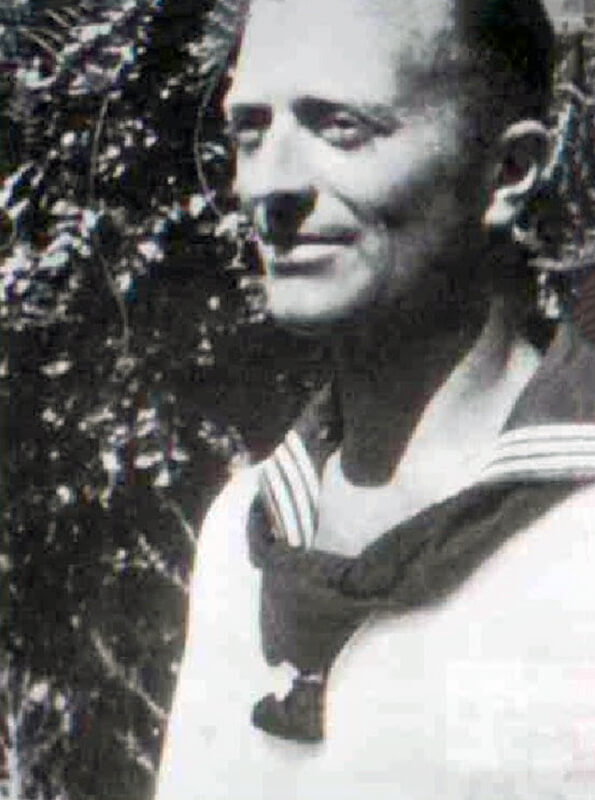
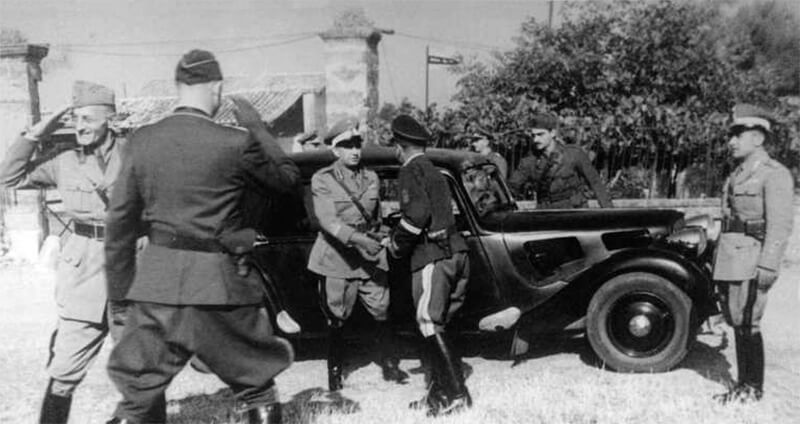
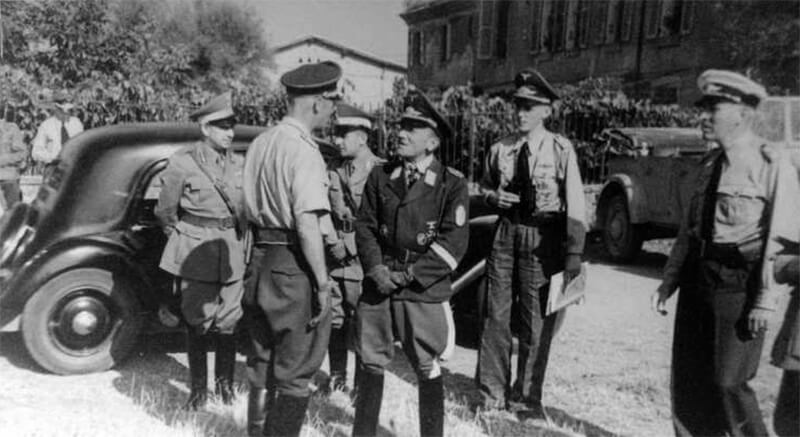
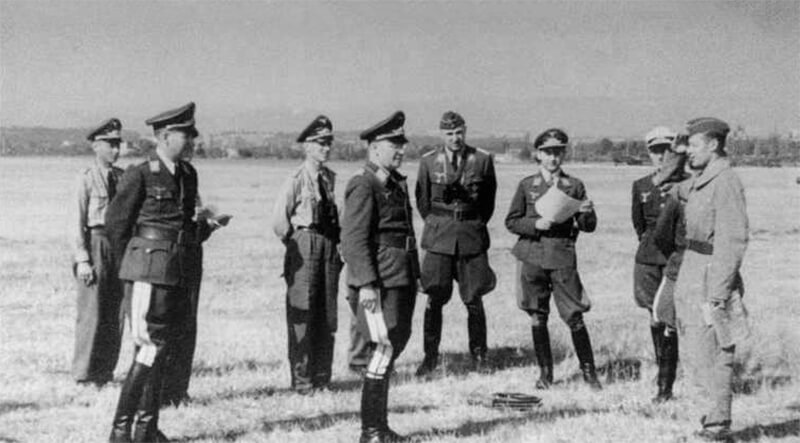
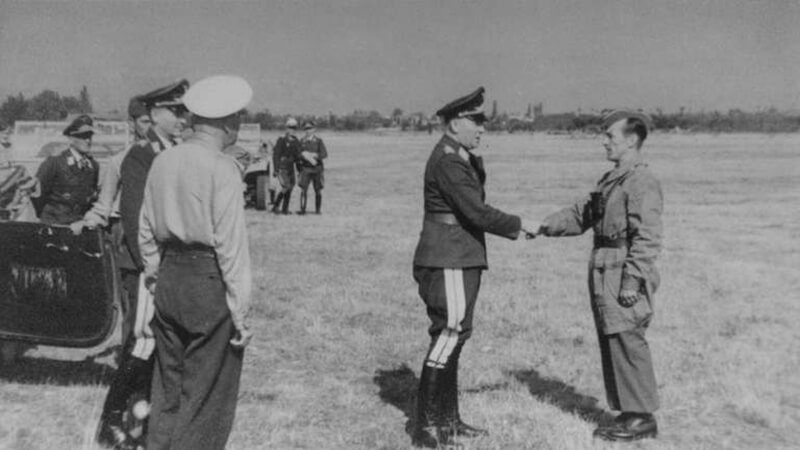
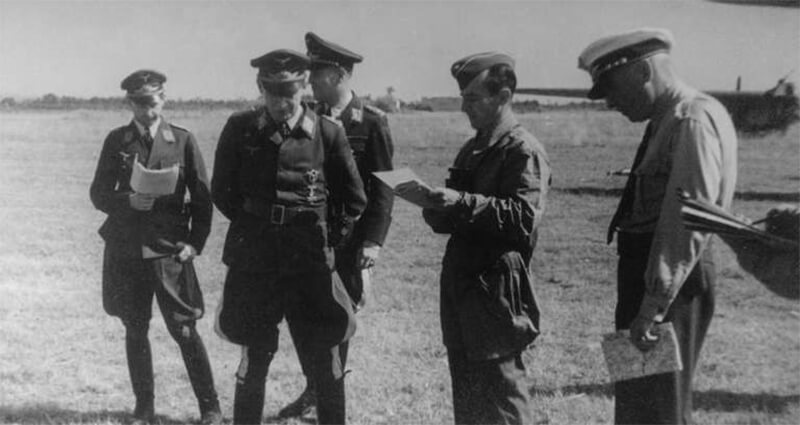
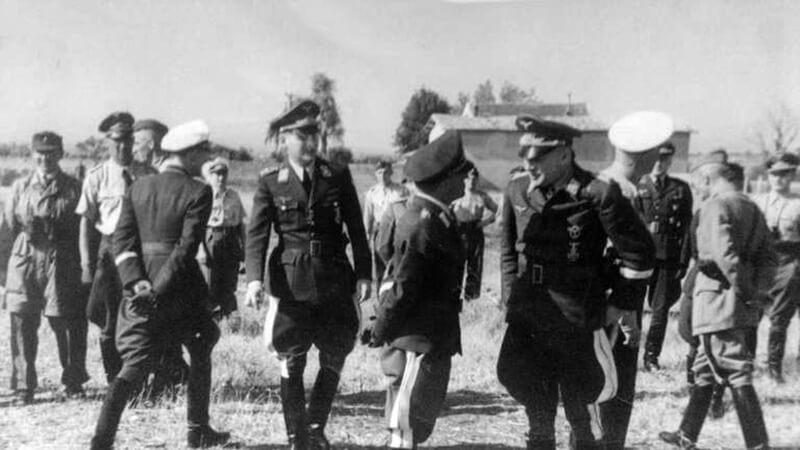
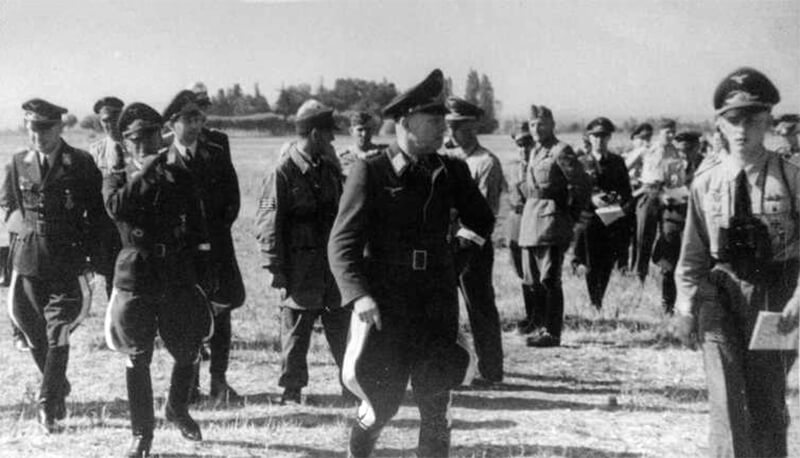
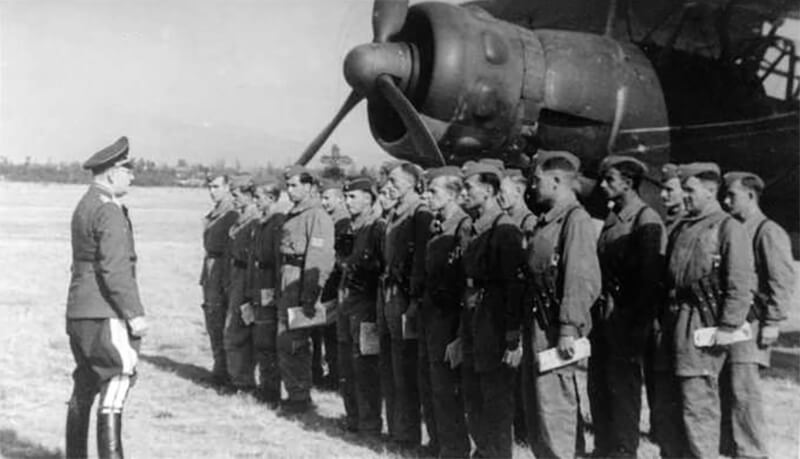
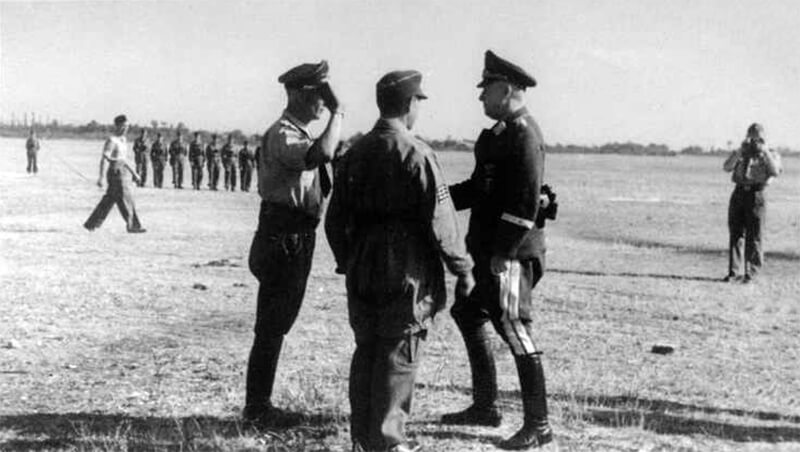
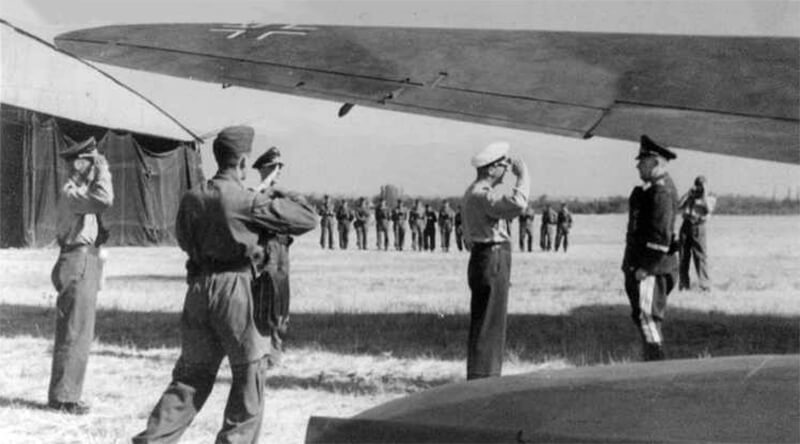
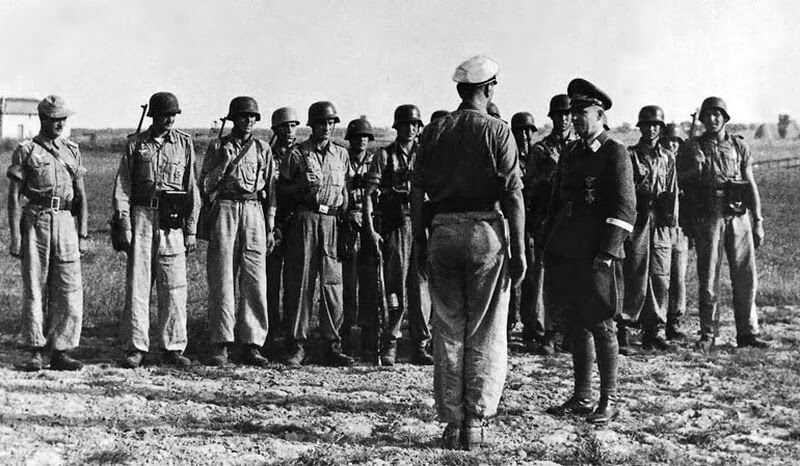
| Unternehmen Eiche, September 12th, 1943 |

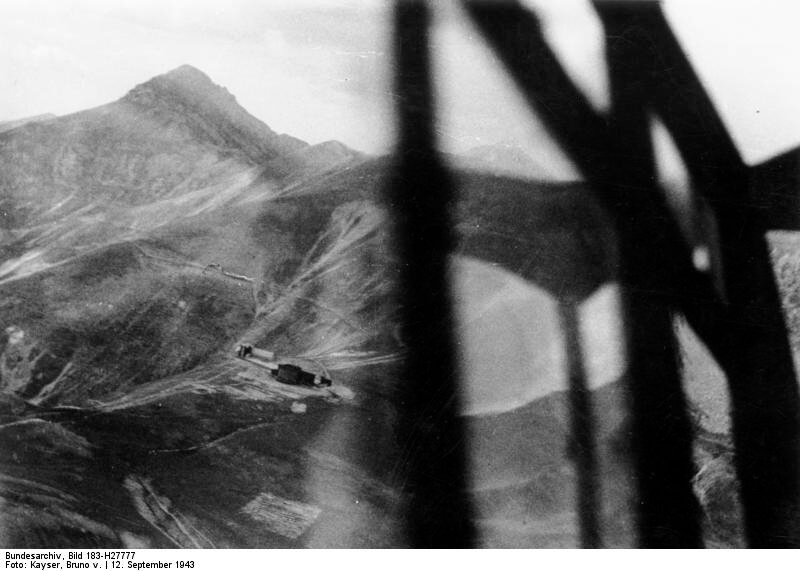
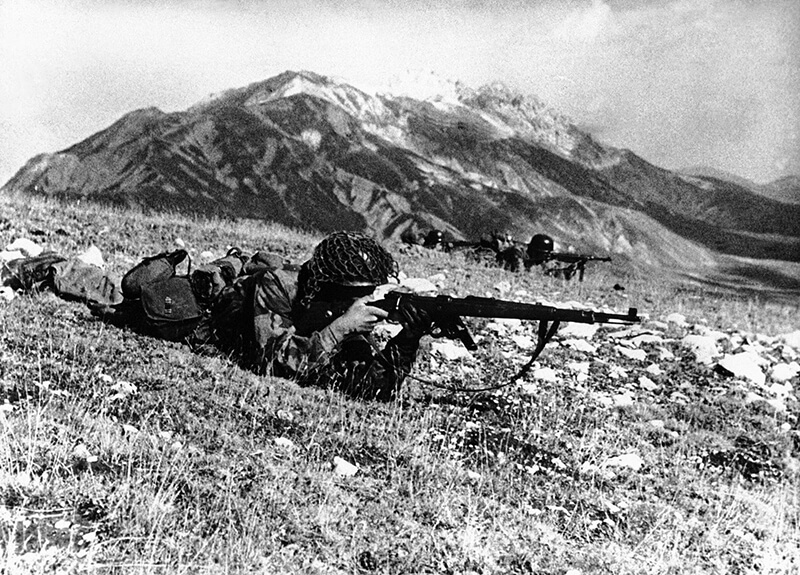
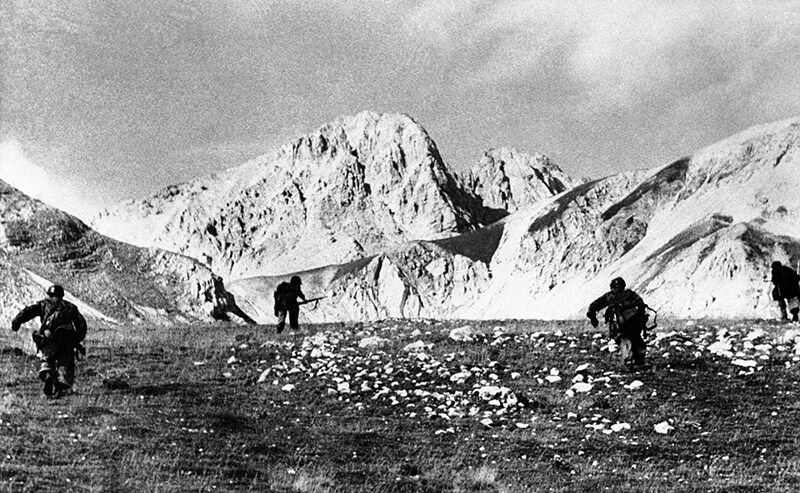

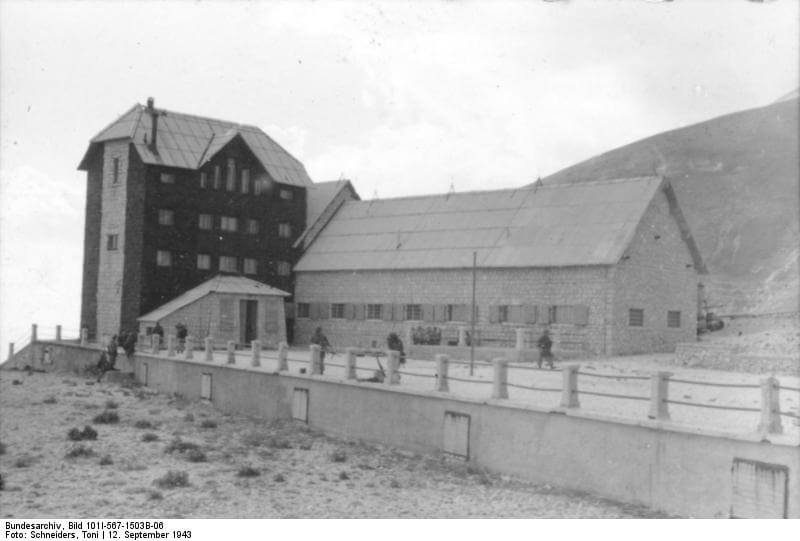
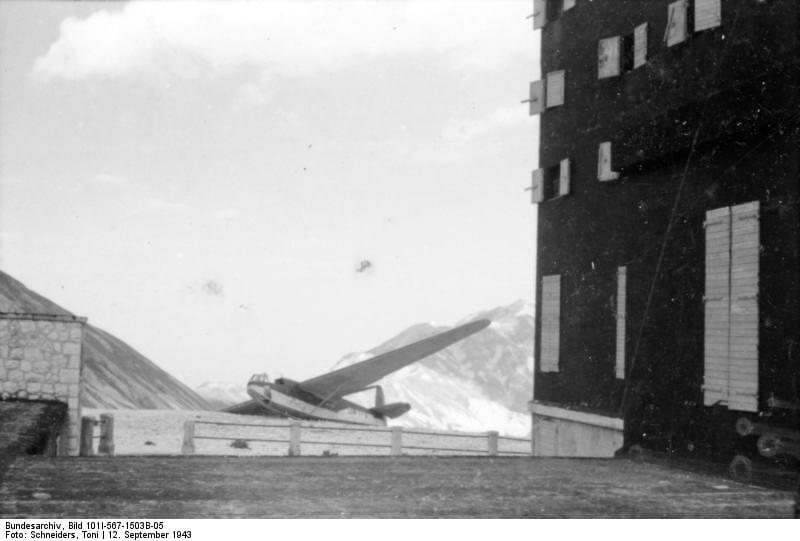
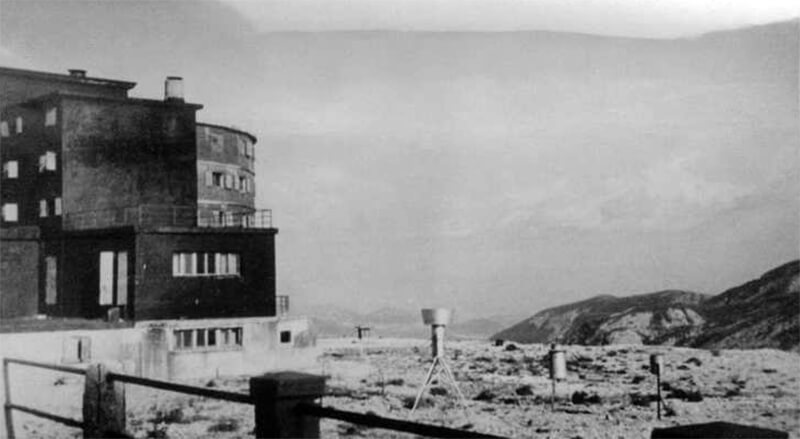
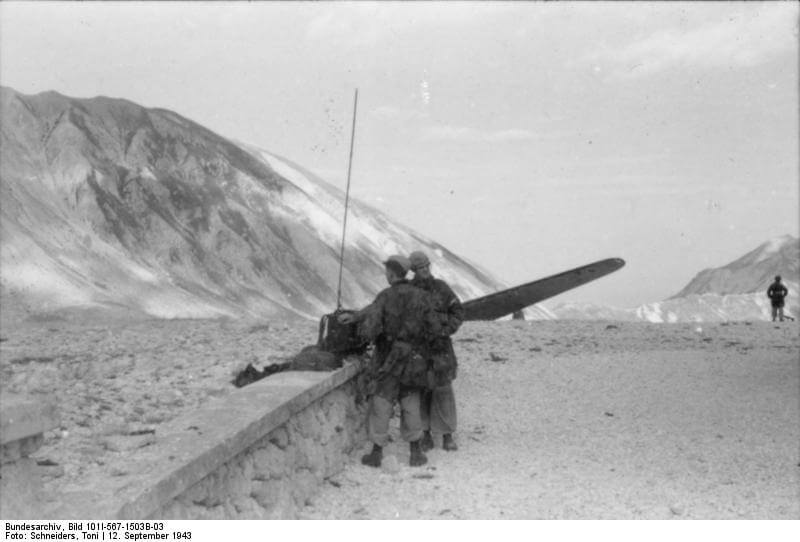
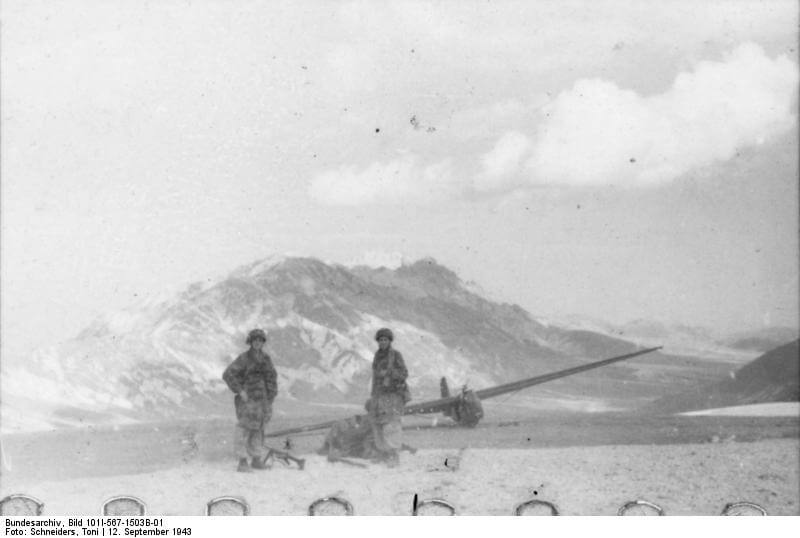
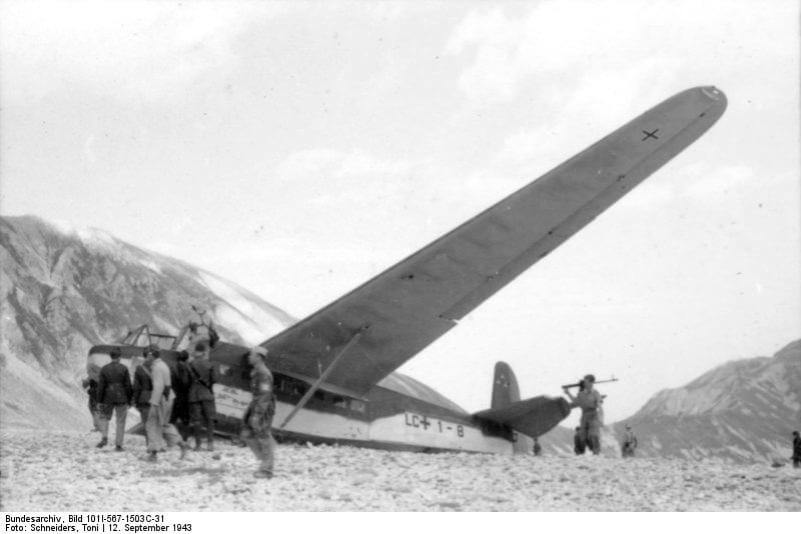
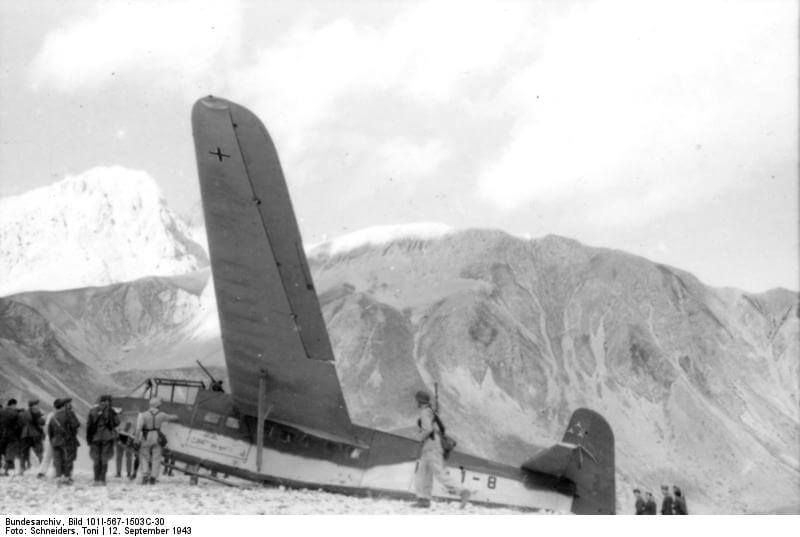
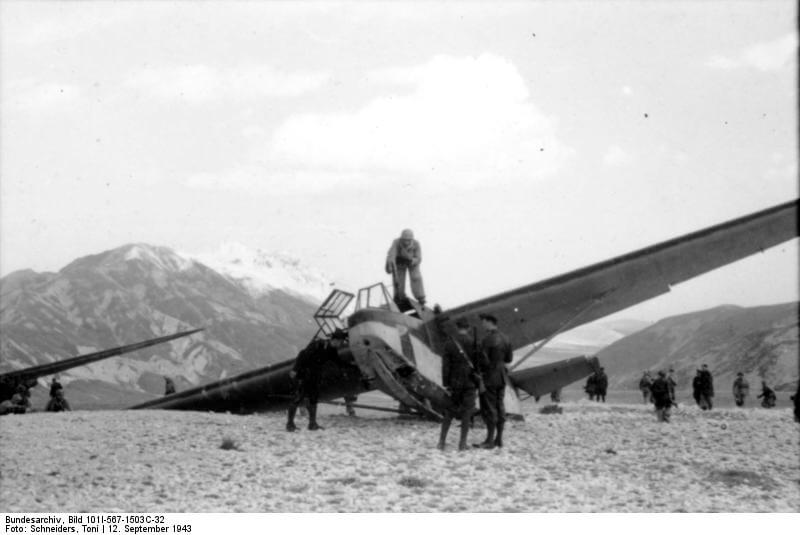
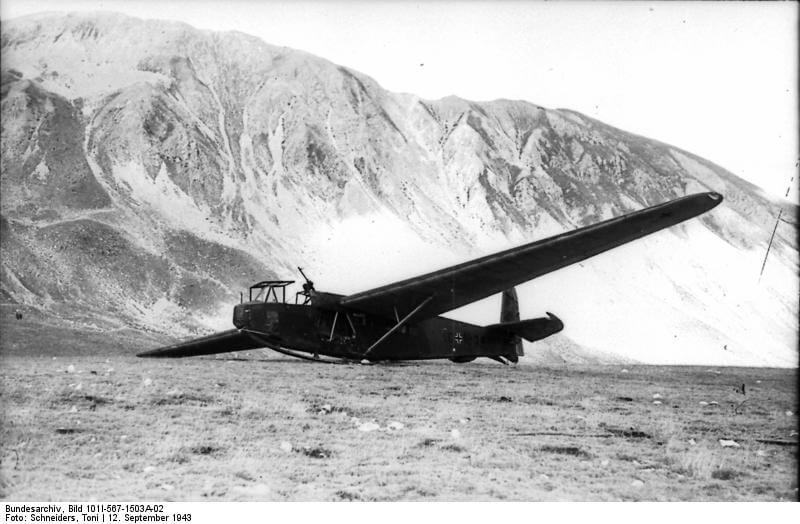
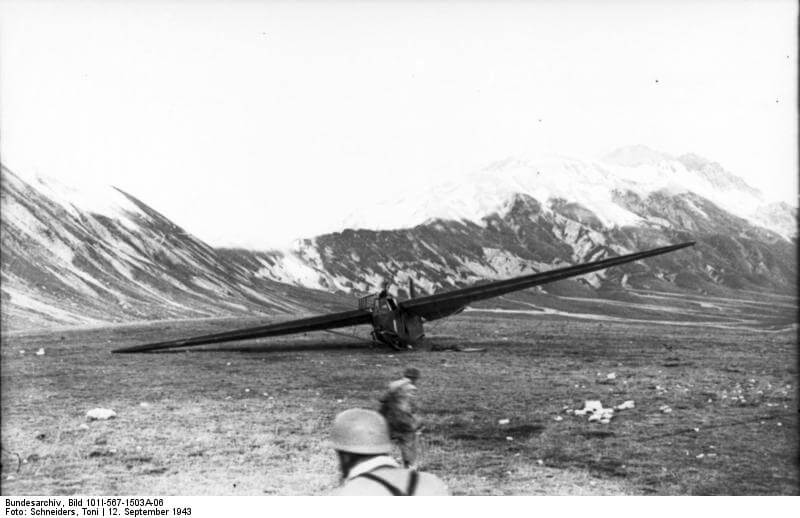
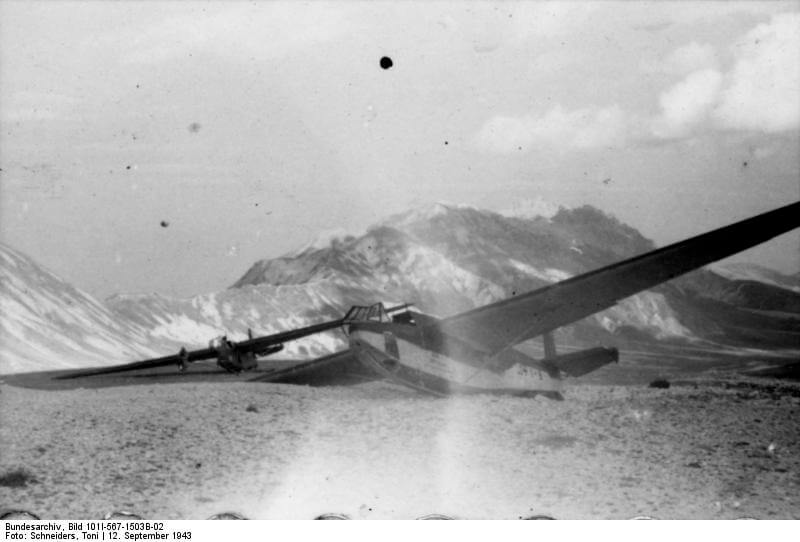
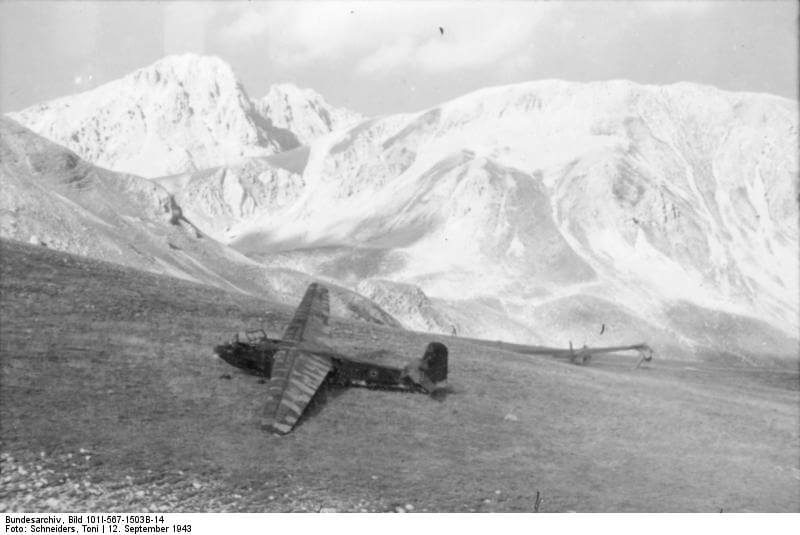
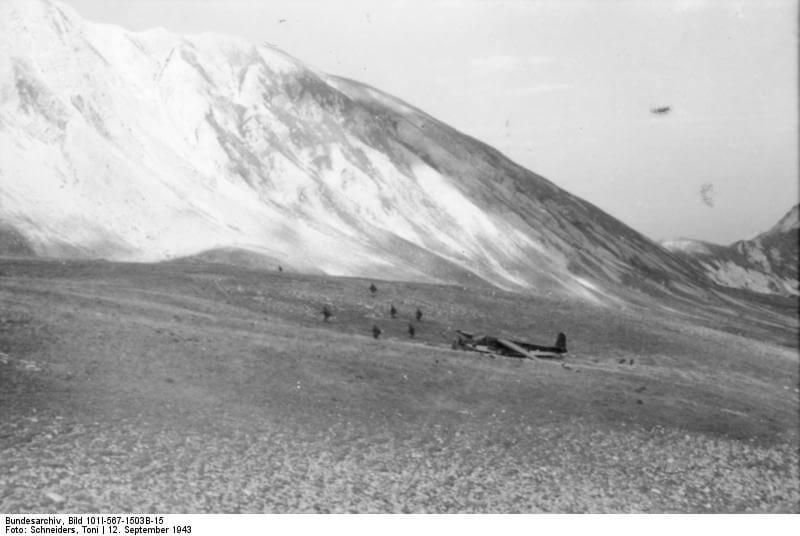
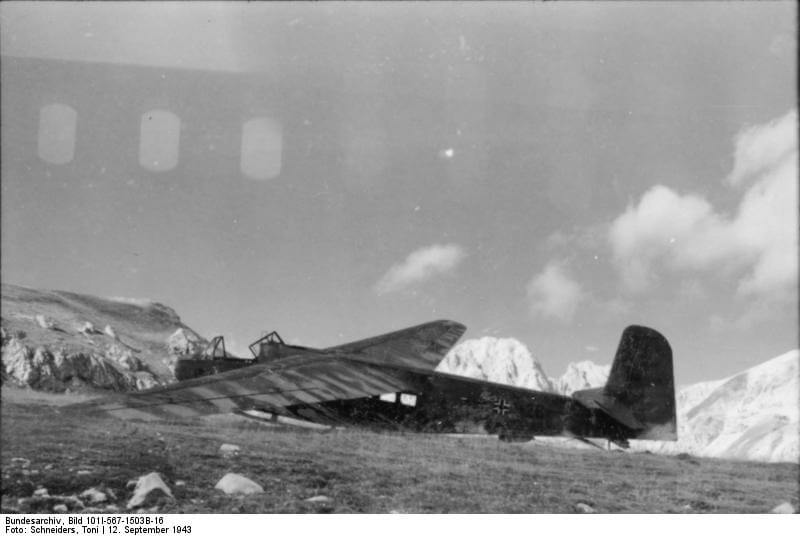
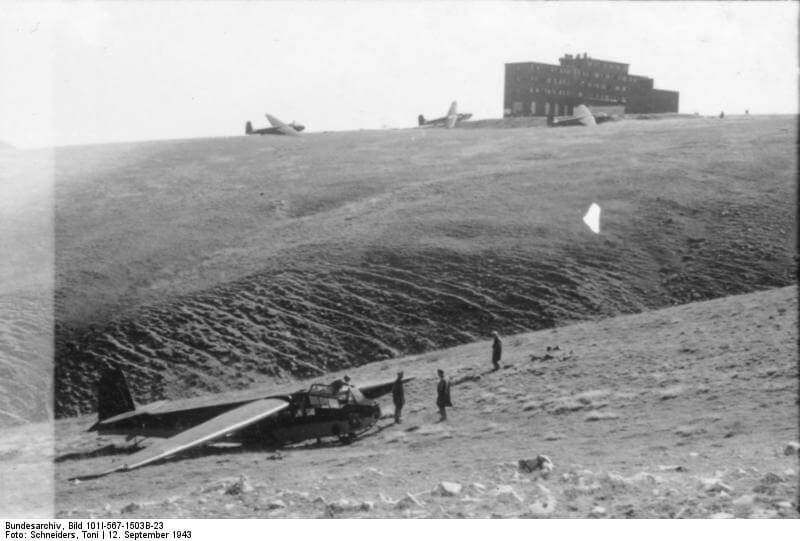
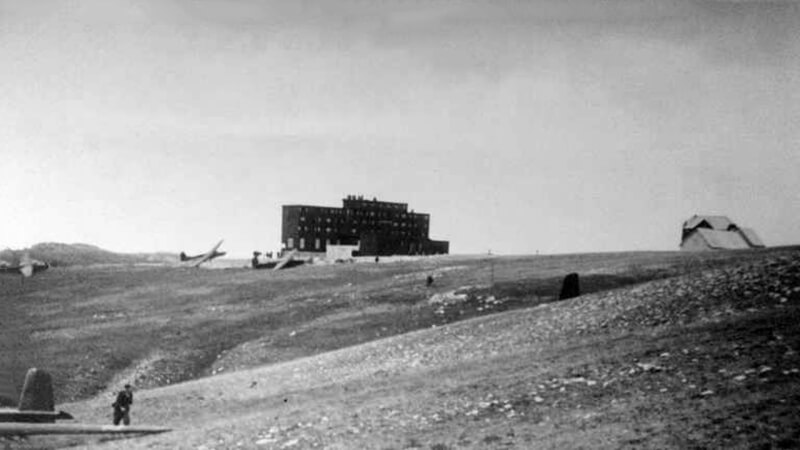
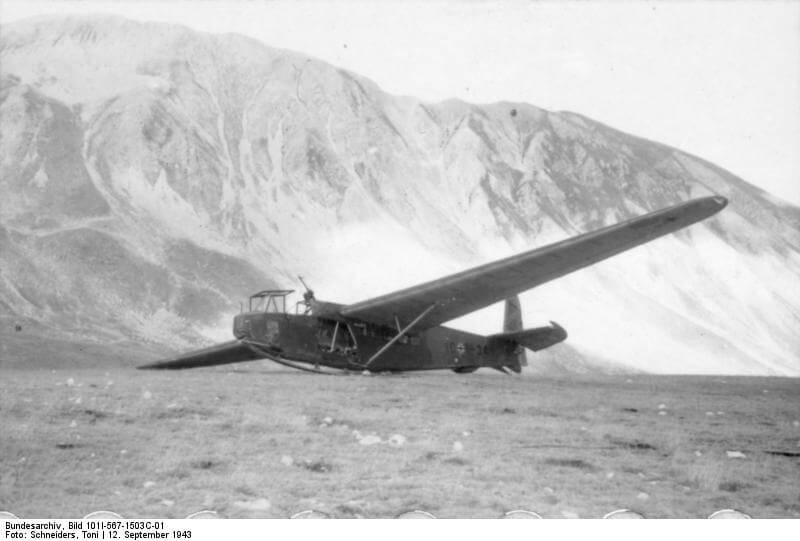
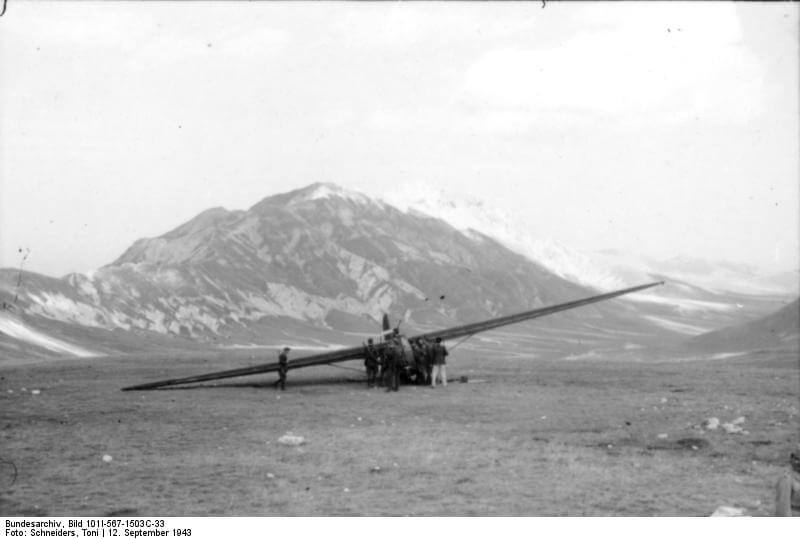
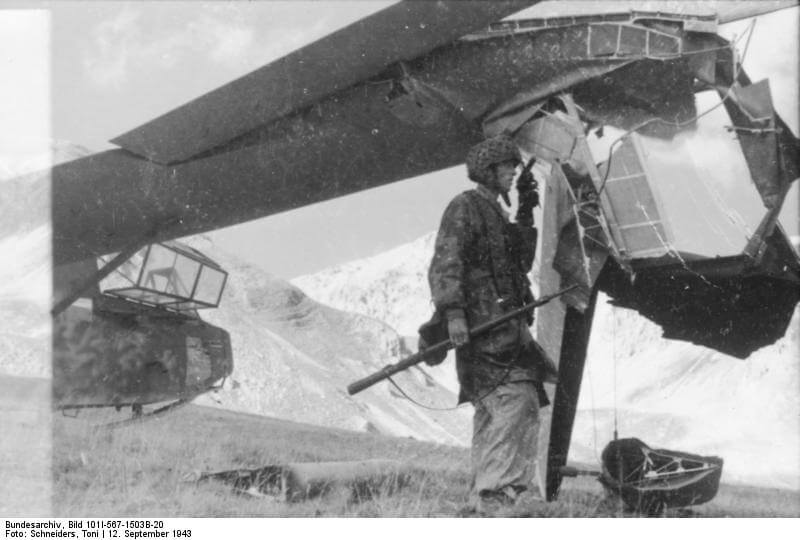
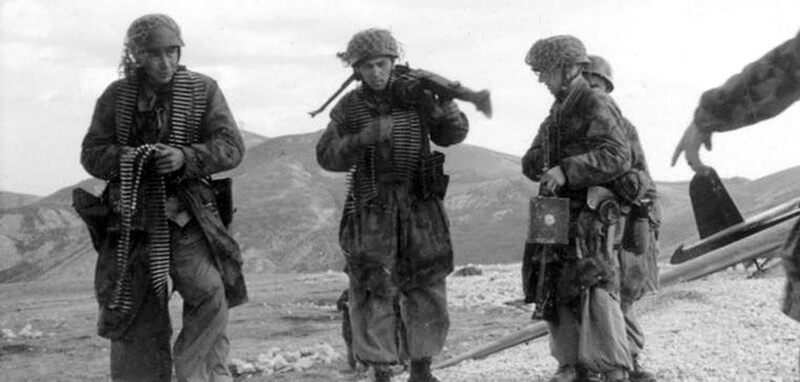
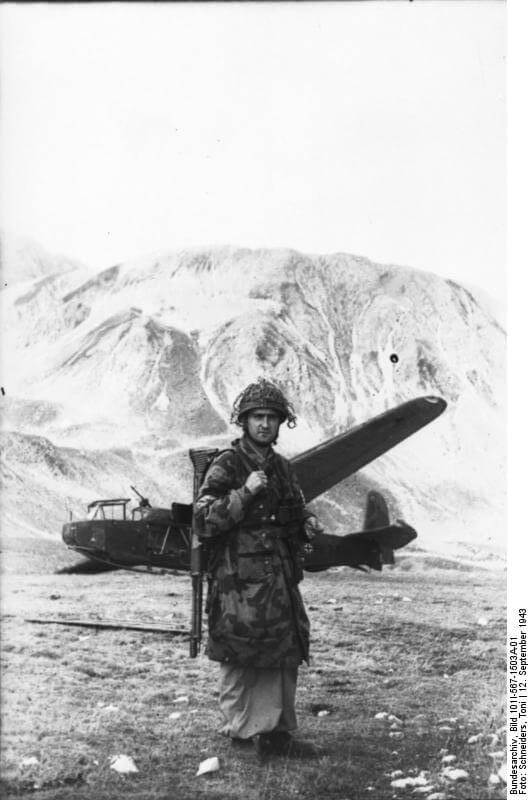
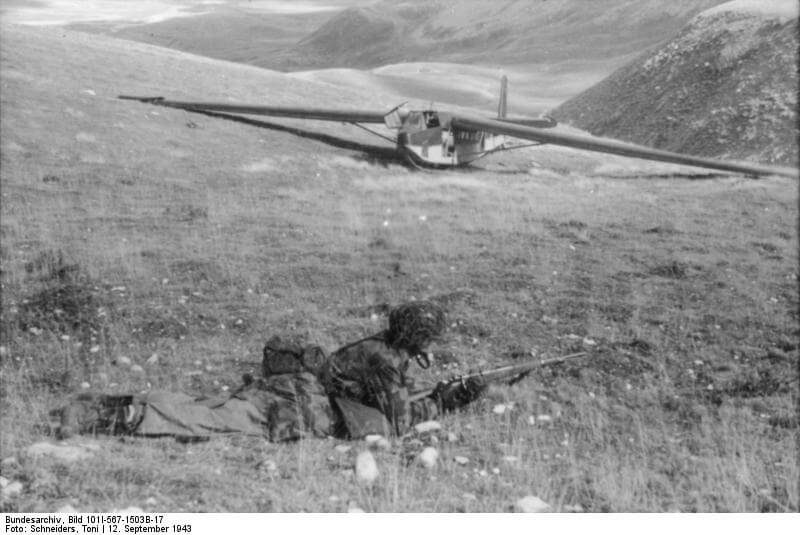
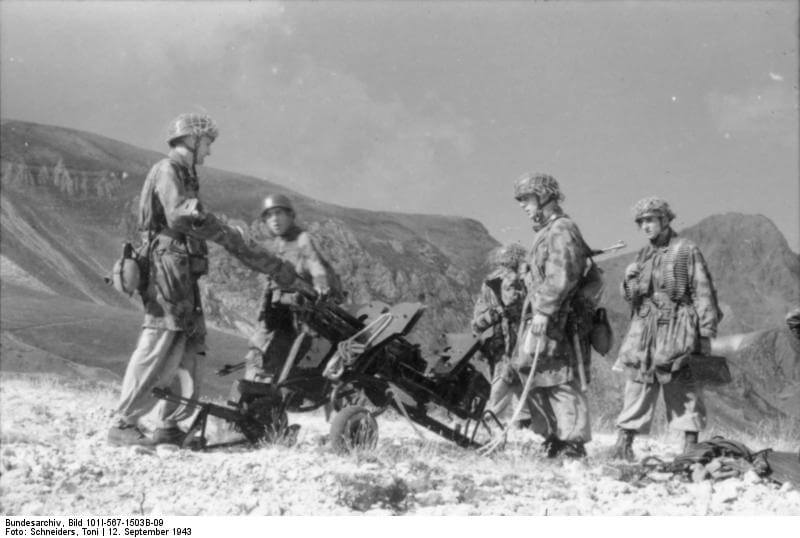
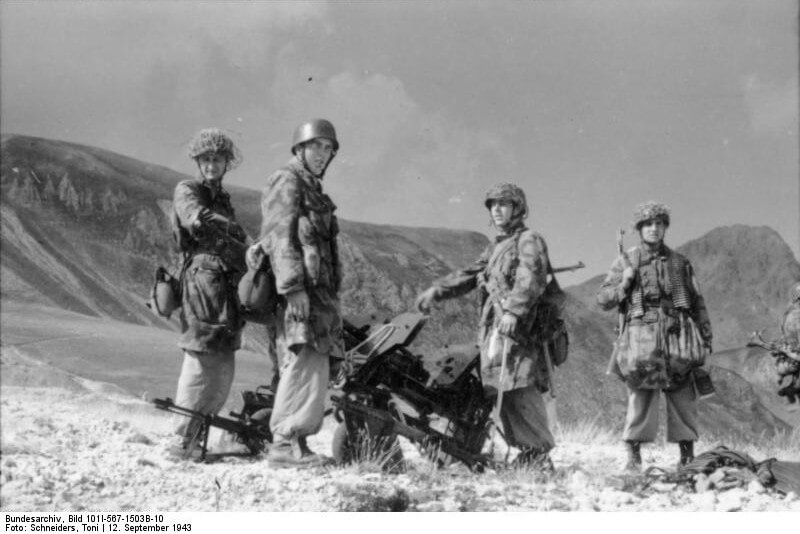
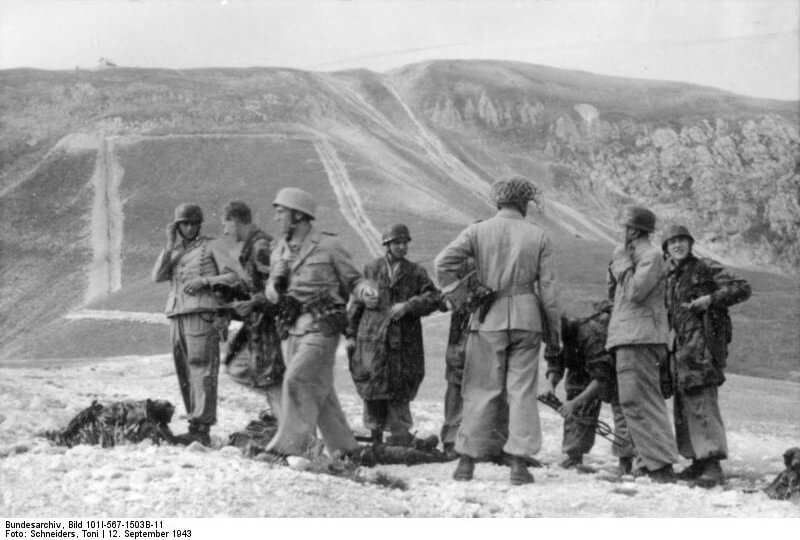
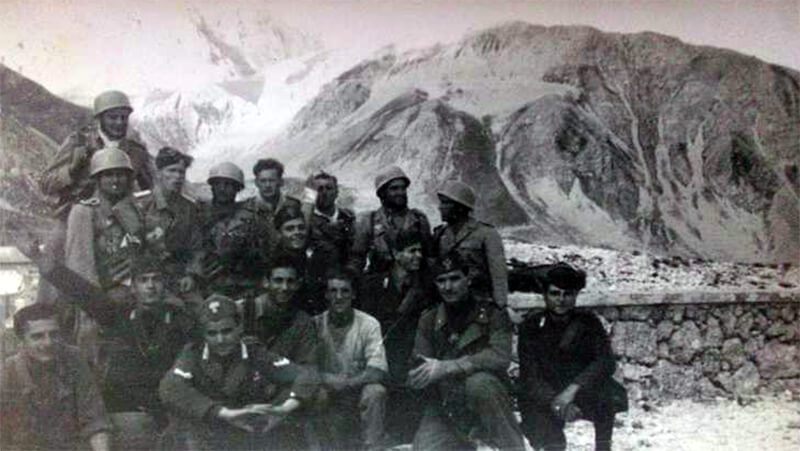
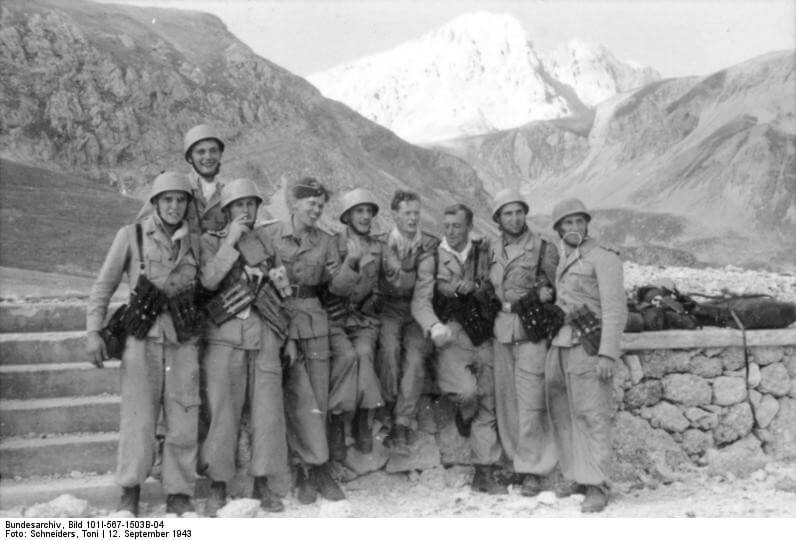
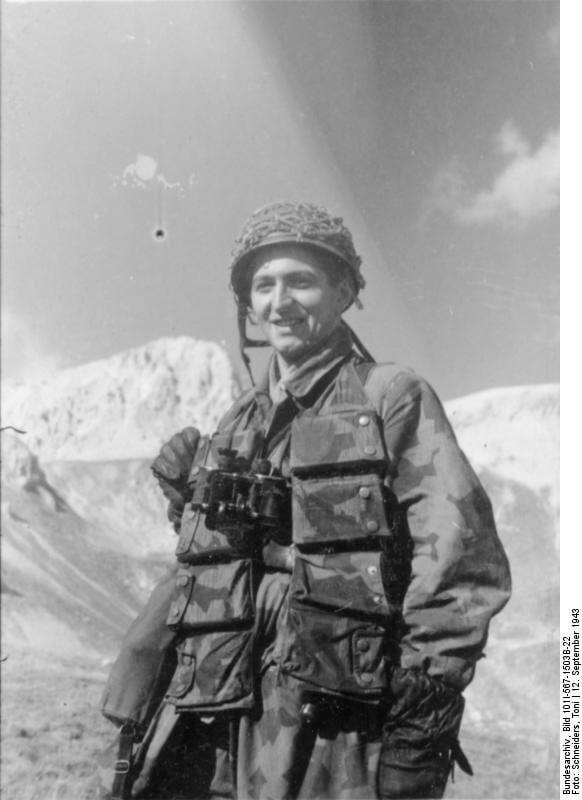
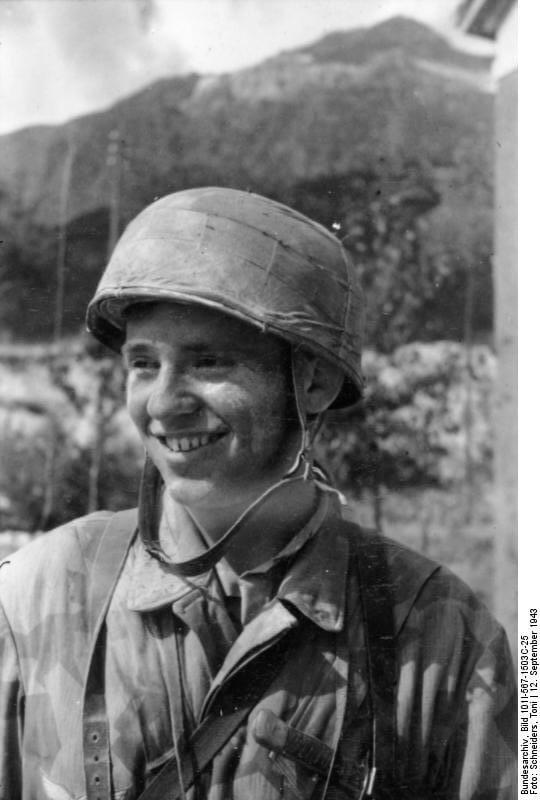
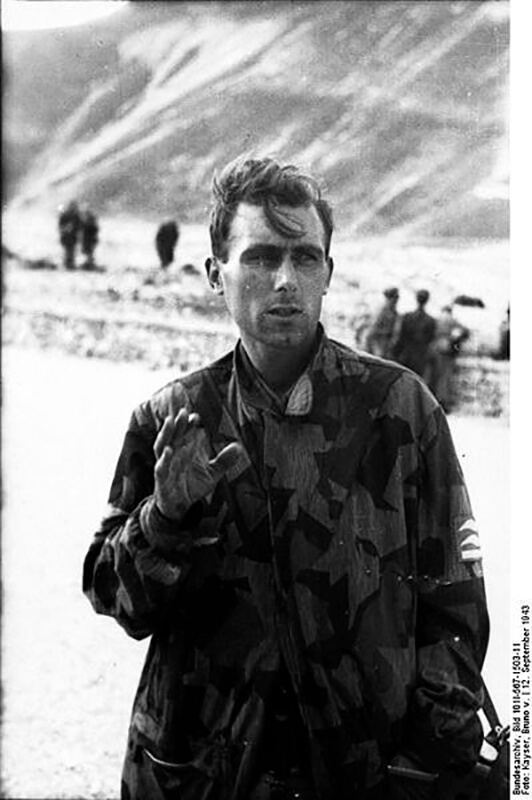
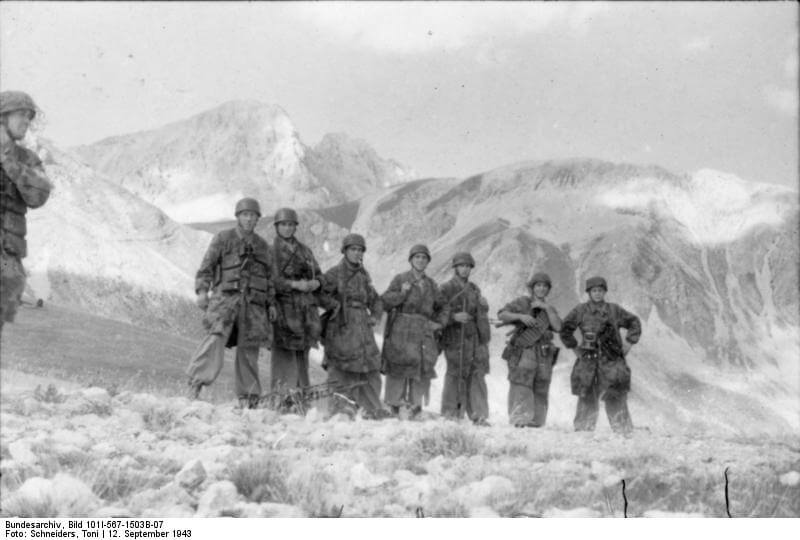
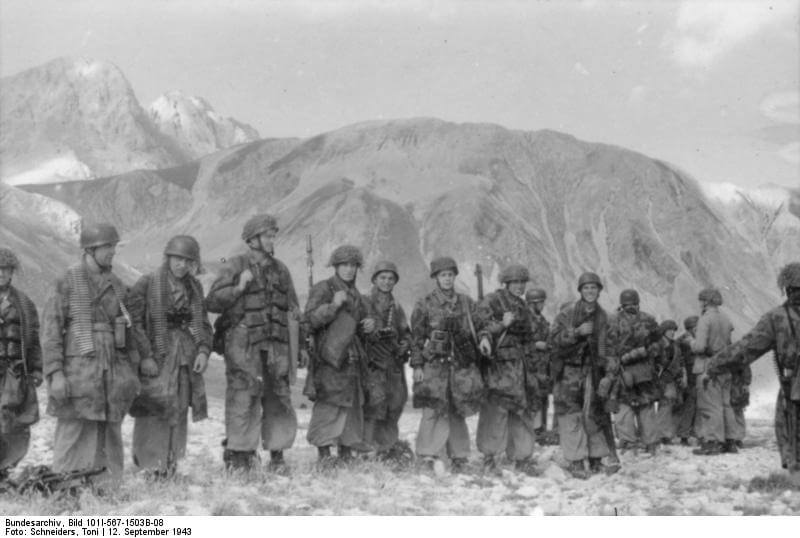
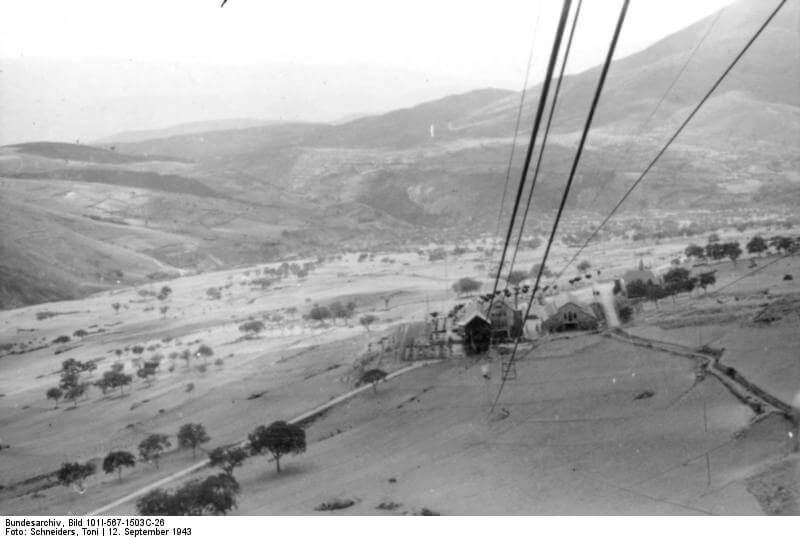
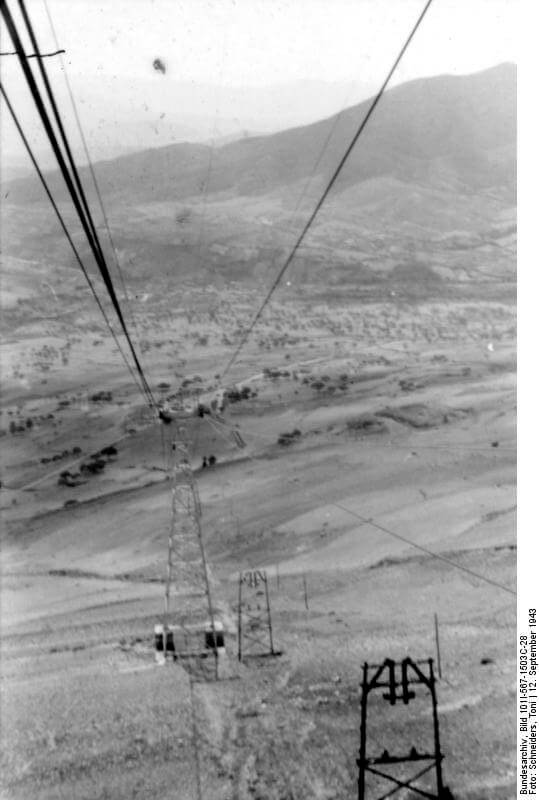
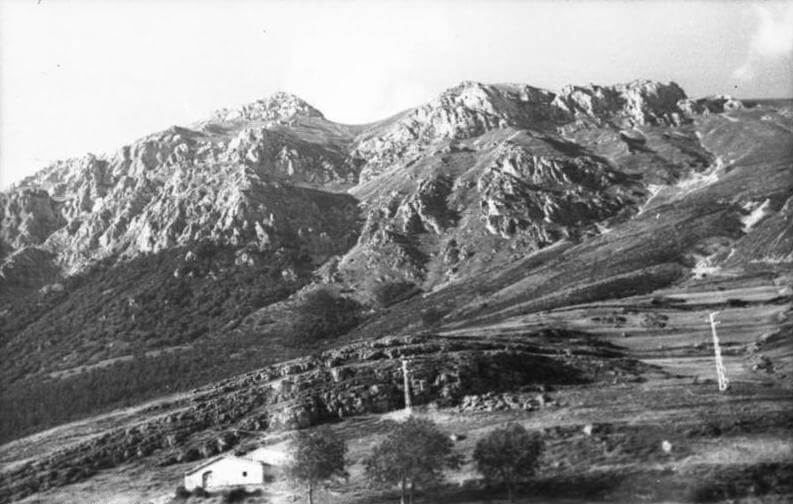
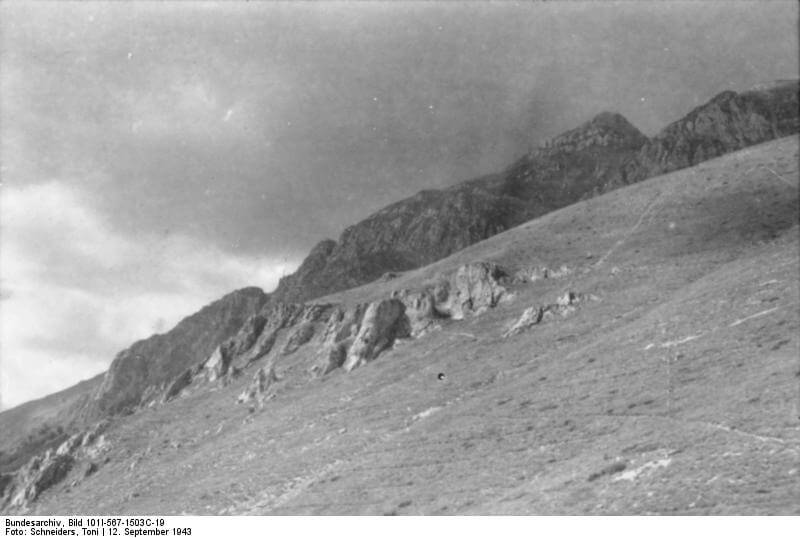
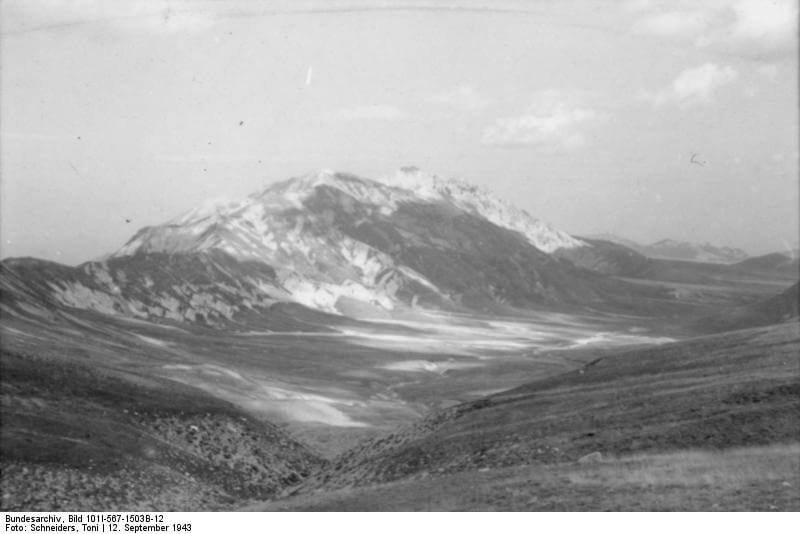
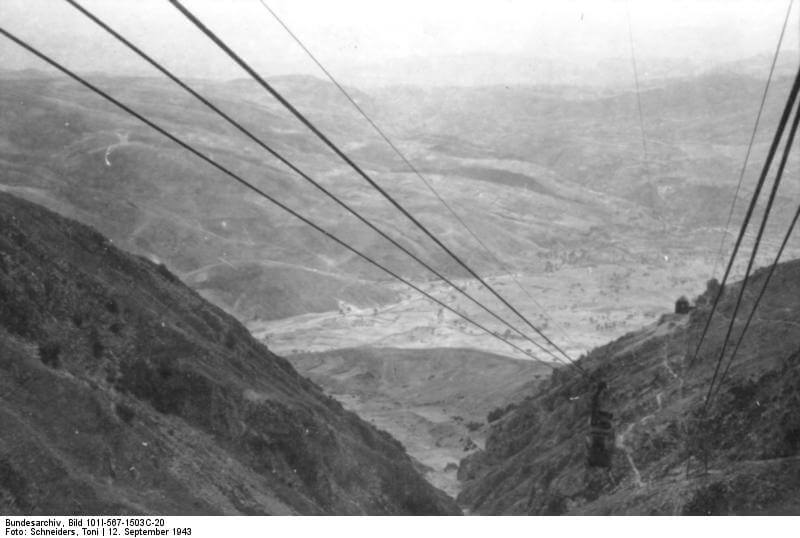
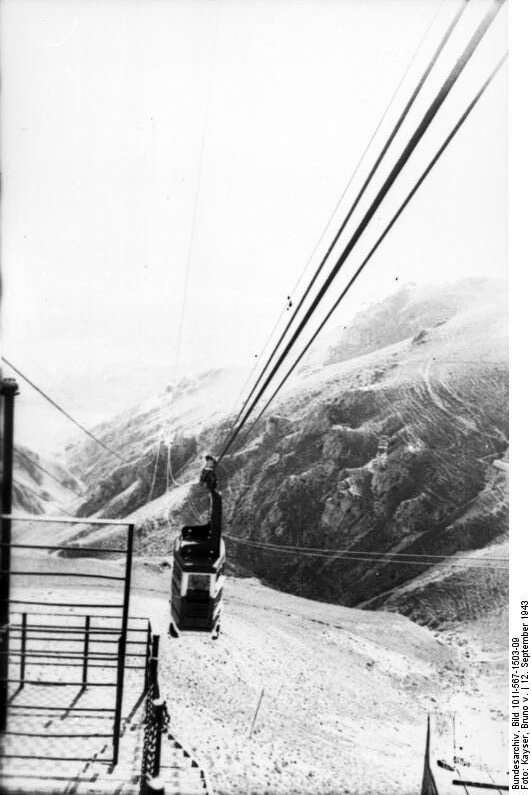
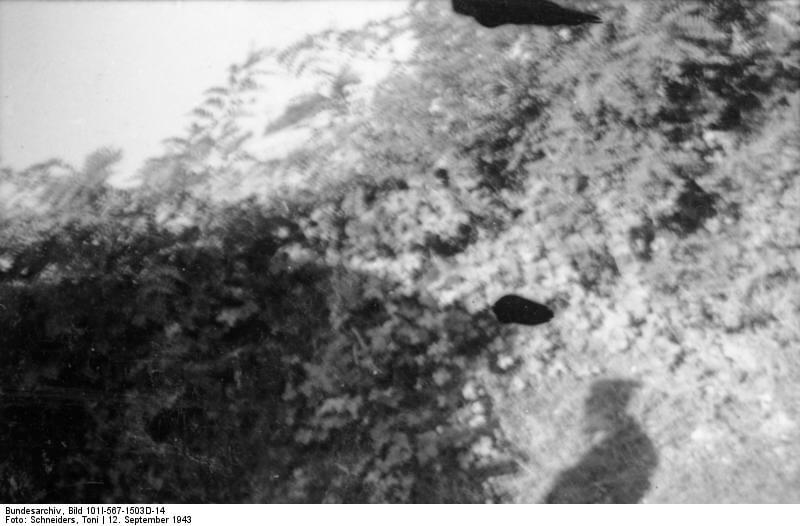
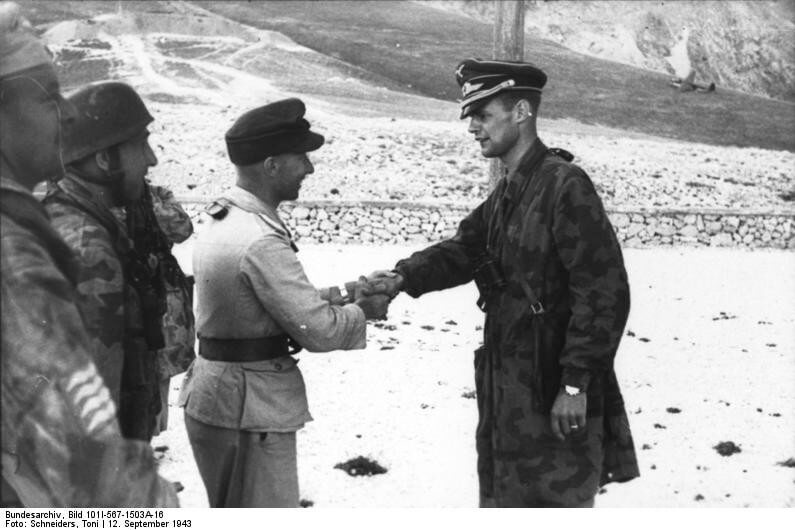
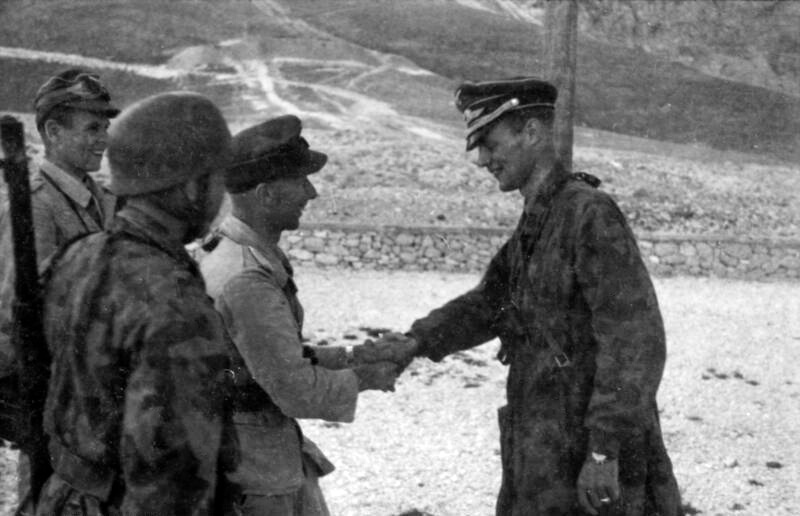
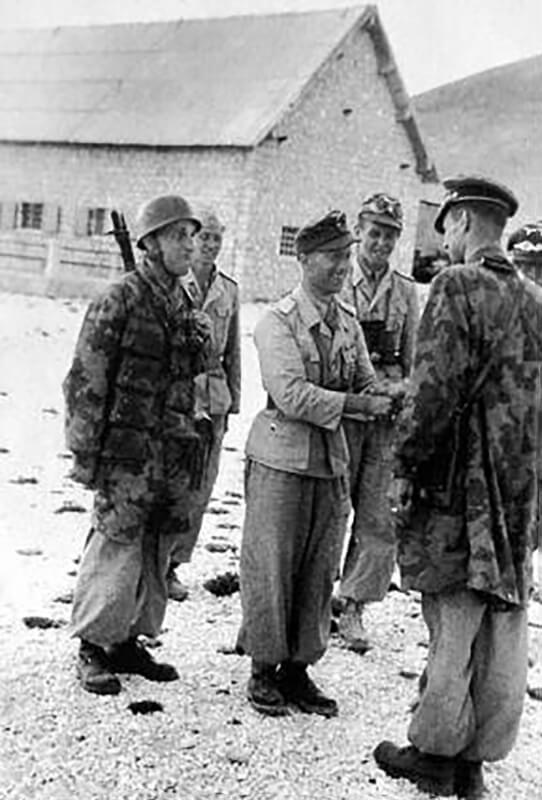
| Unternehmen Eiche, September 12th, 1943, Mussolini’s Liberation |
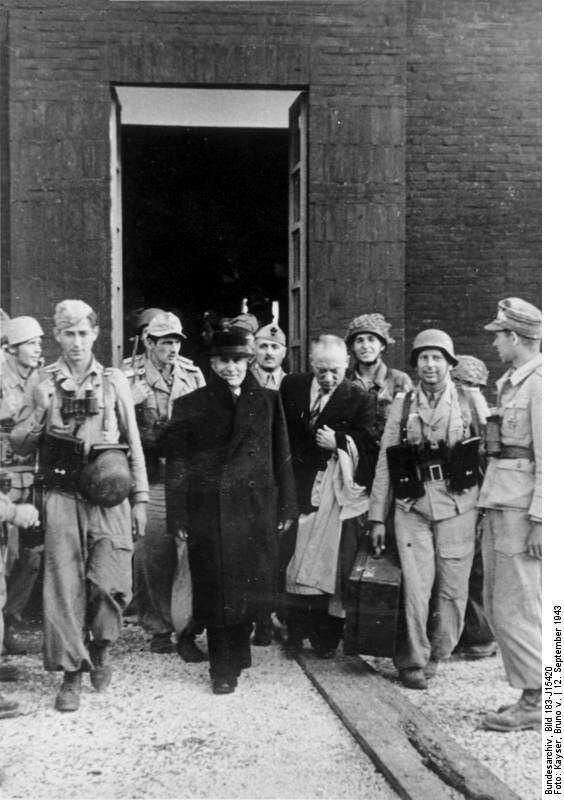
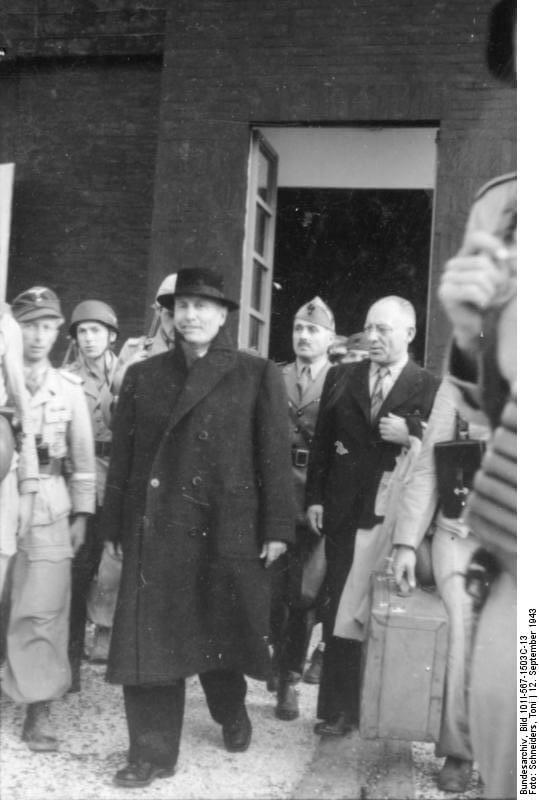
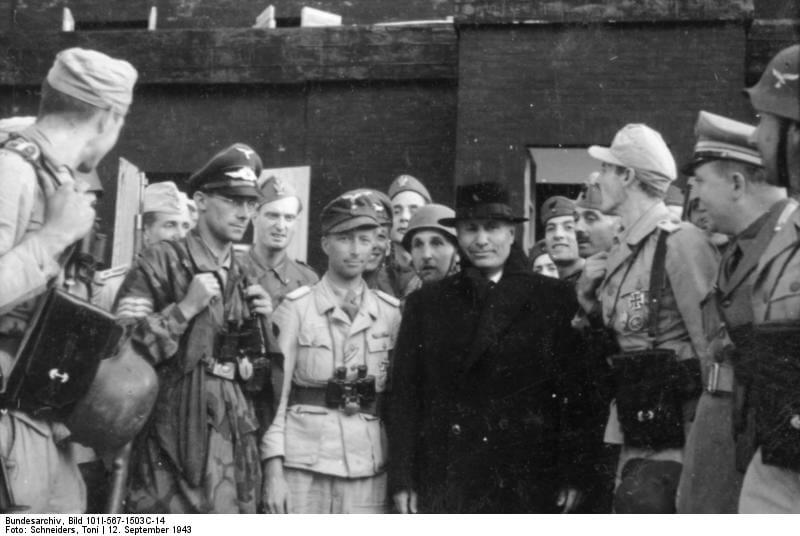
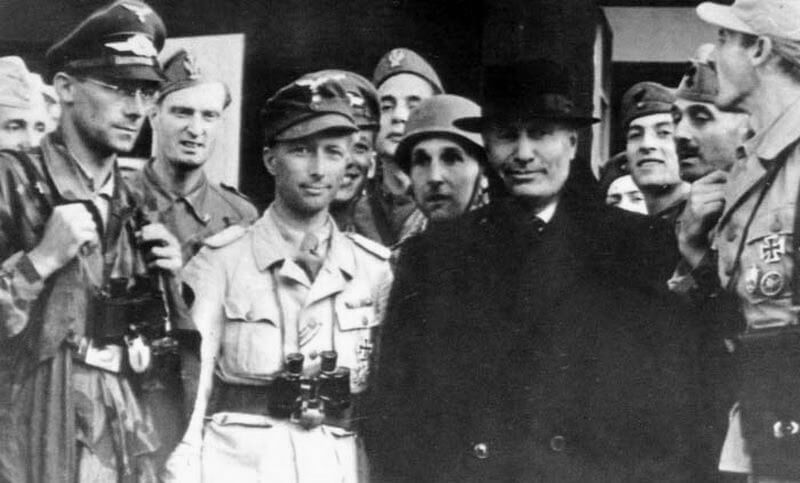
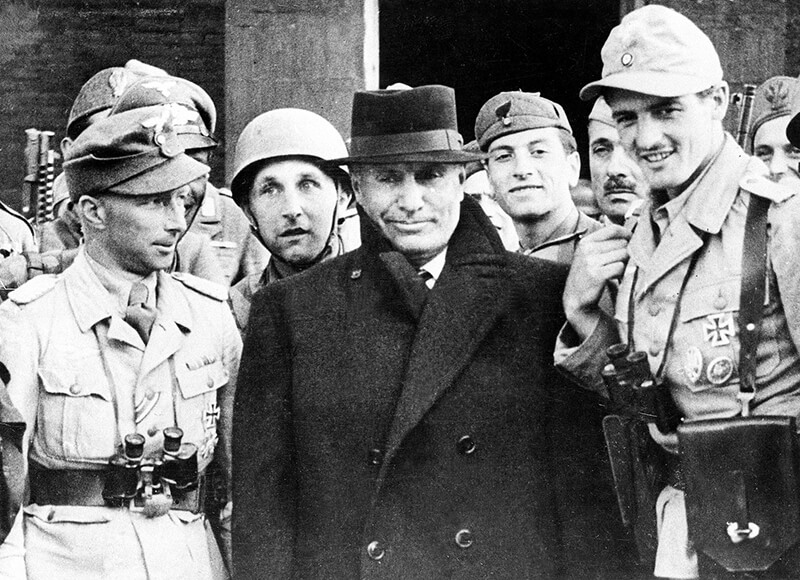
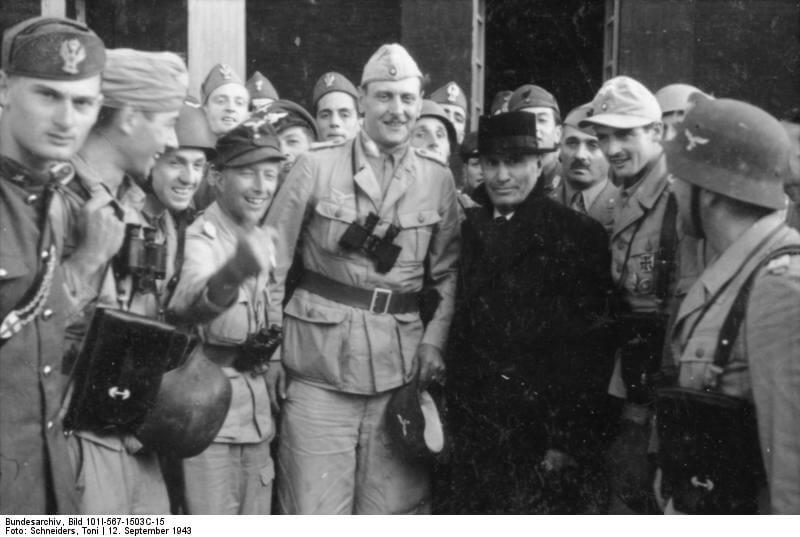
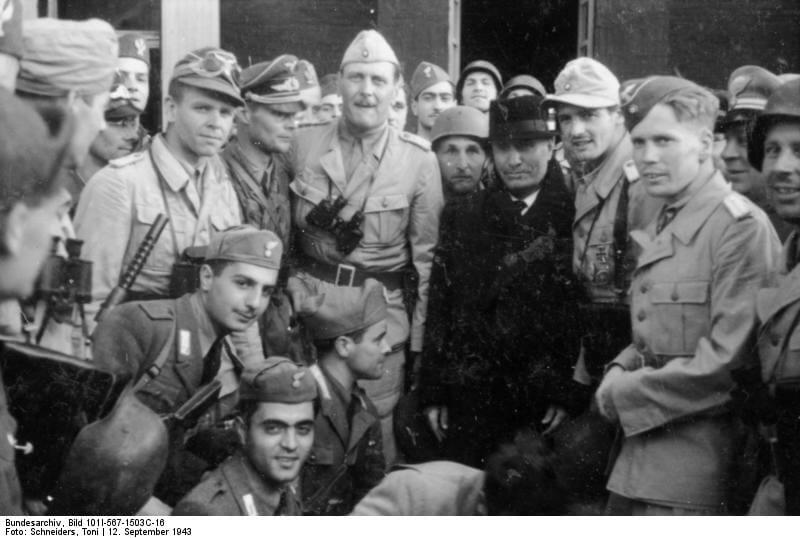
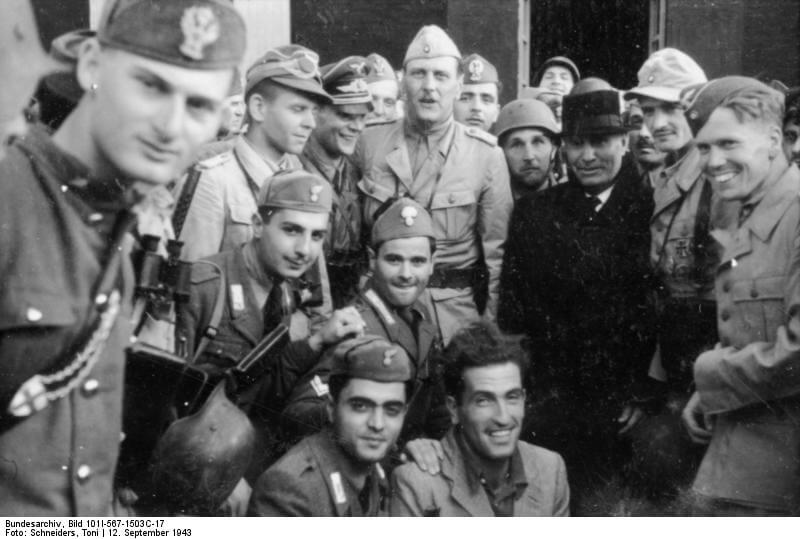
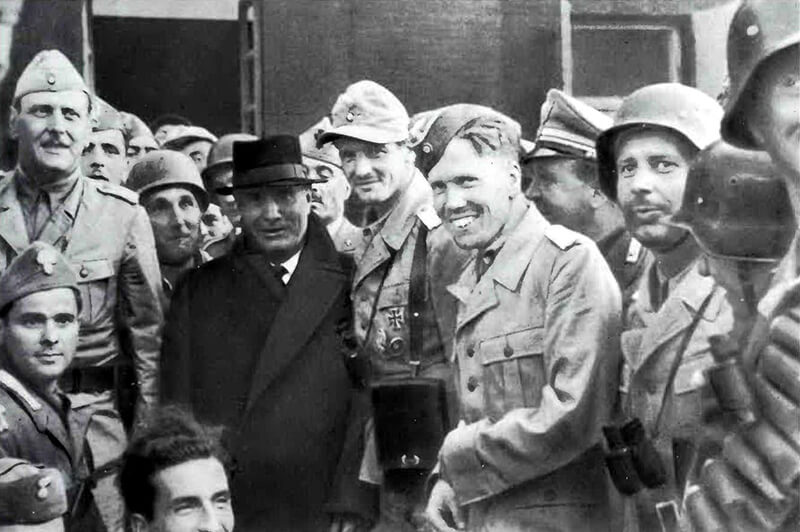
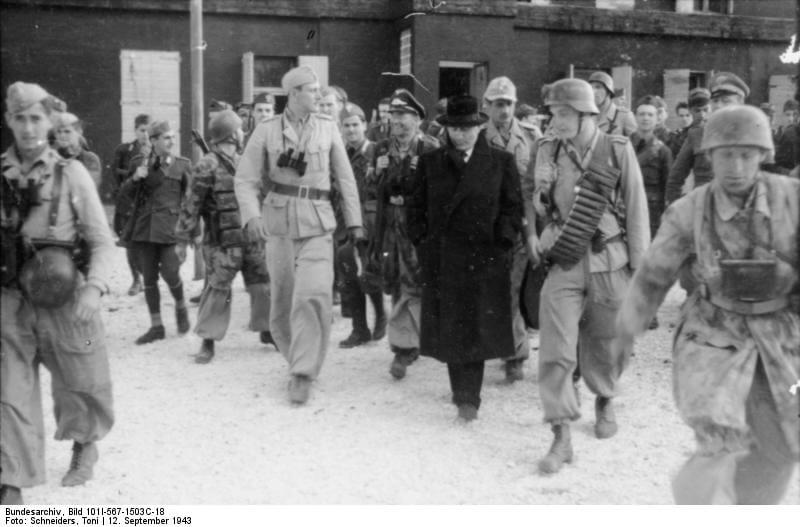
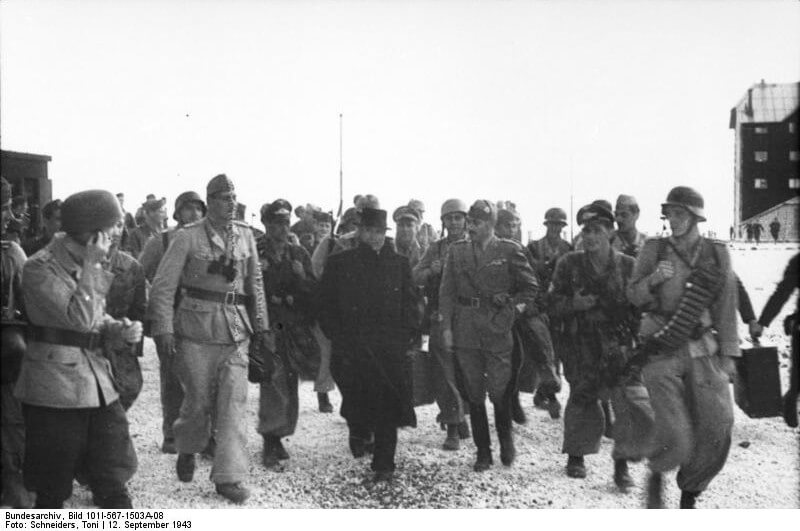
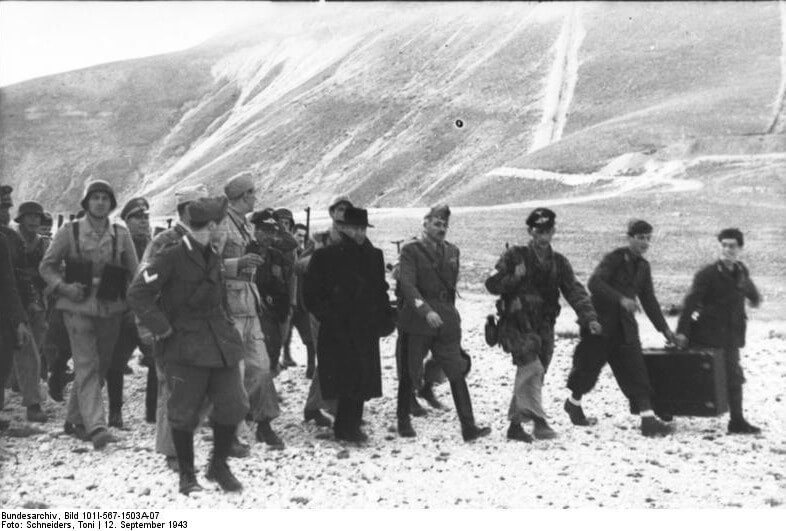
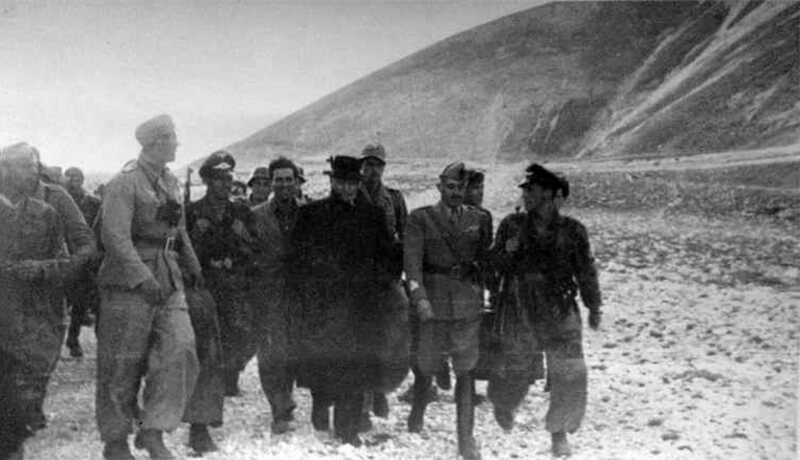
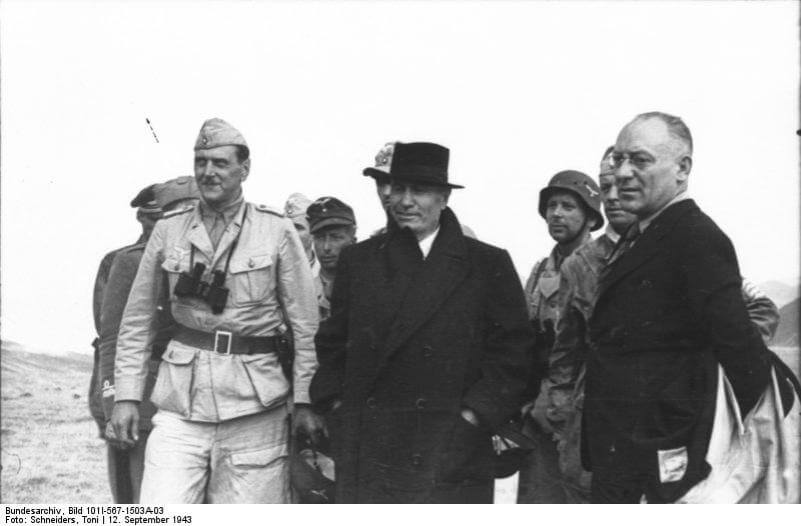
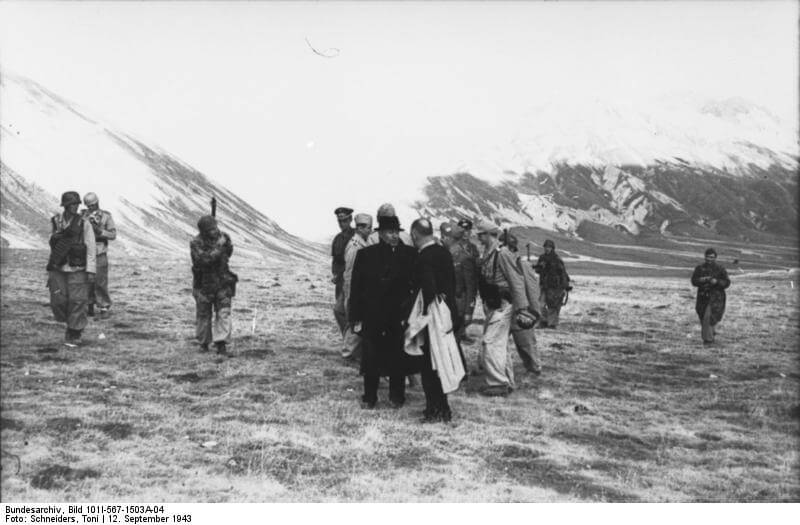
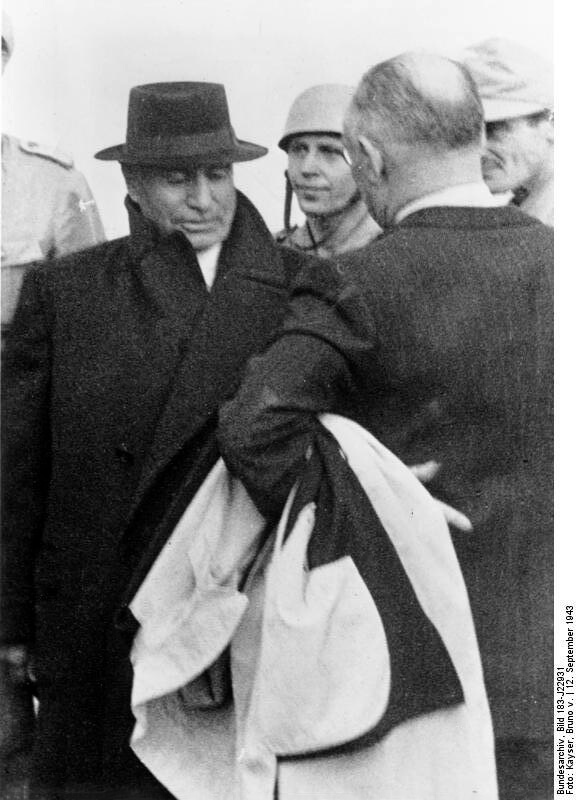
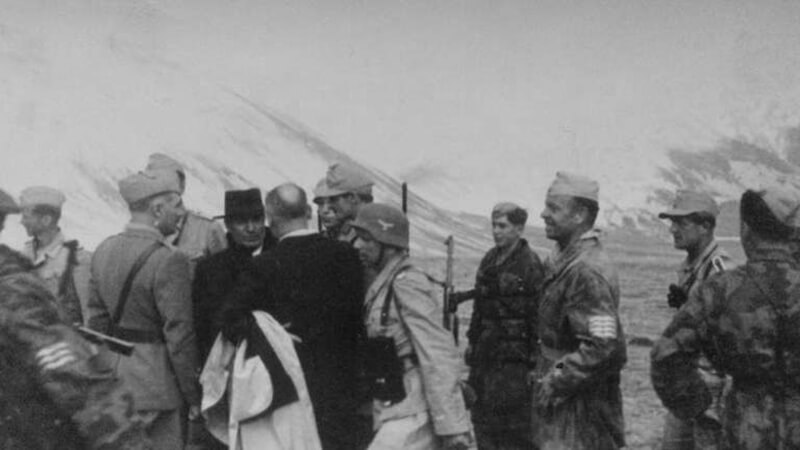
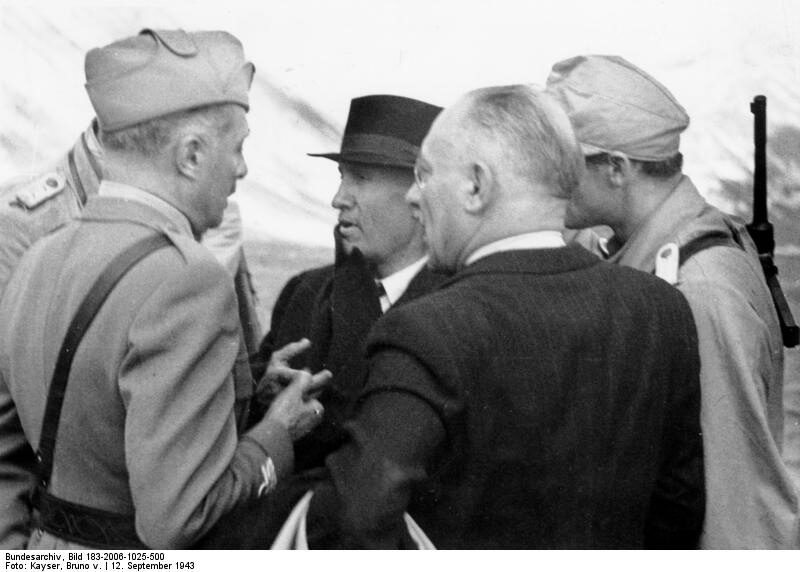
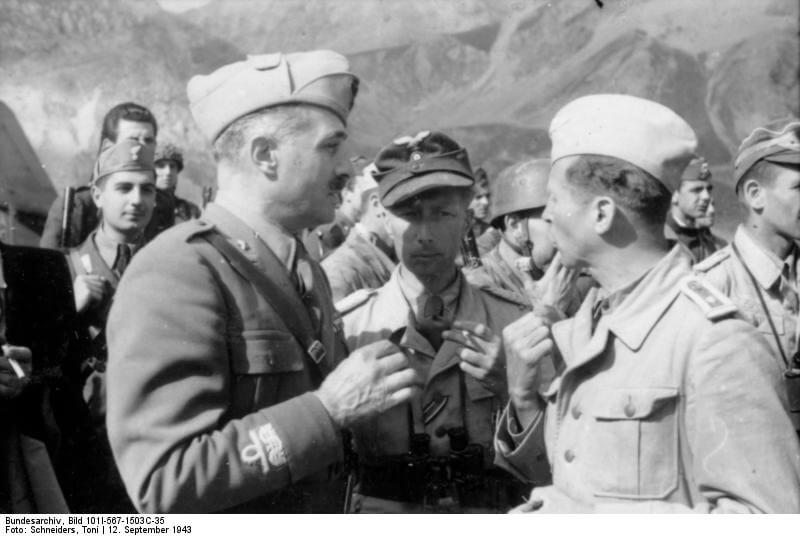
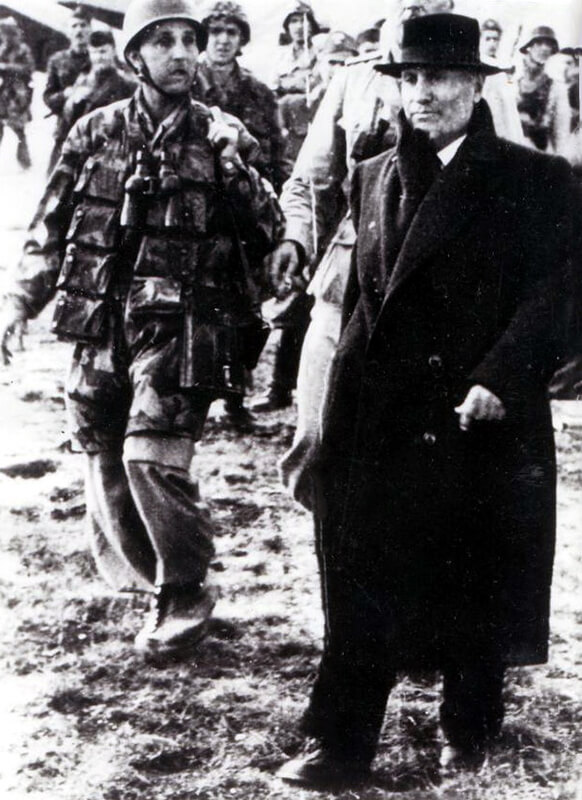

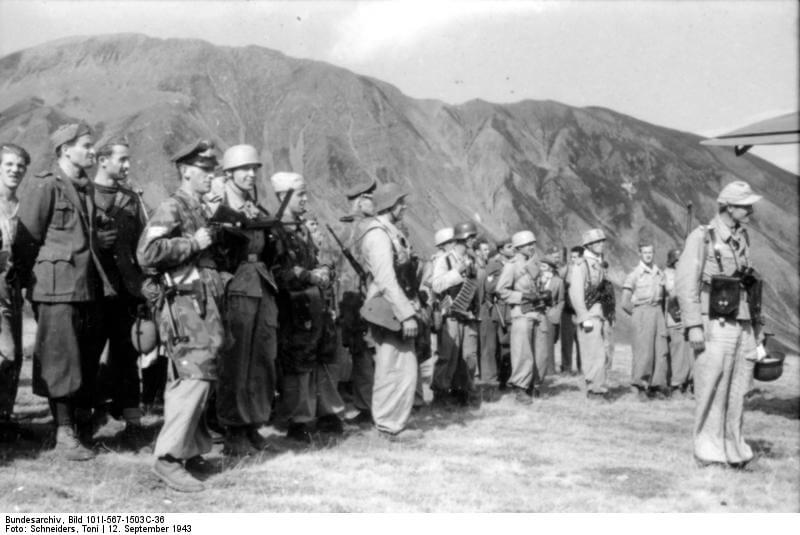
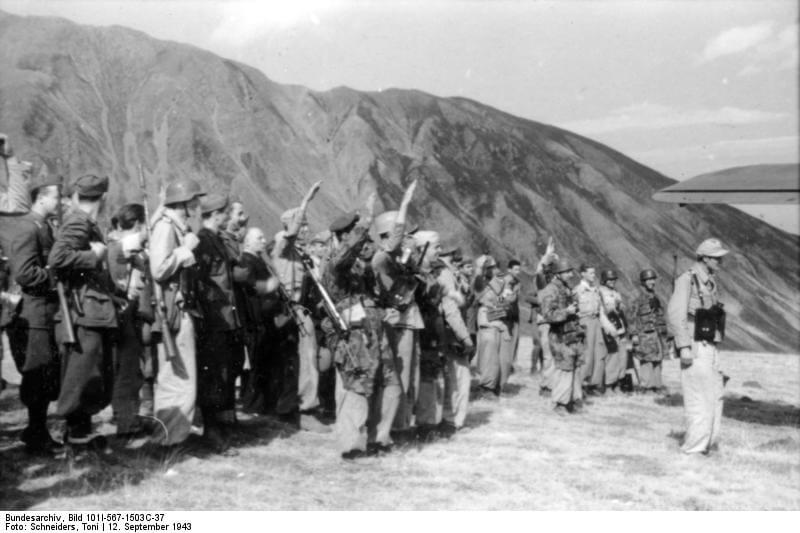
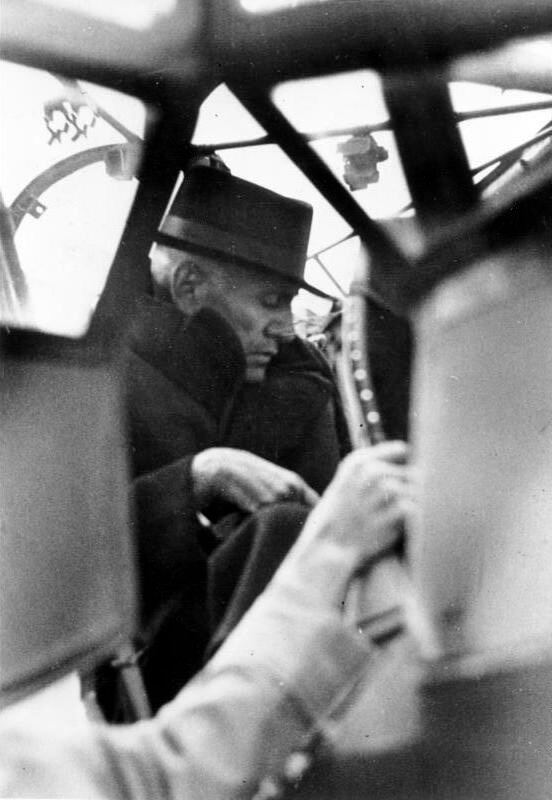
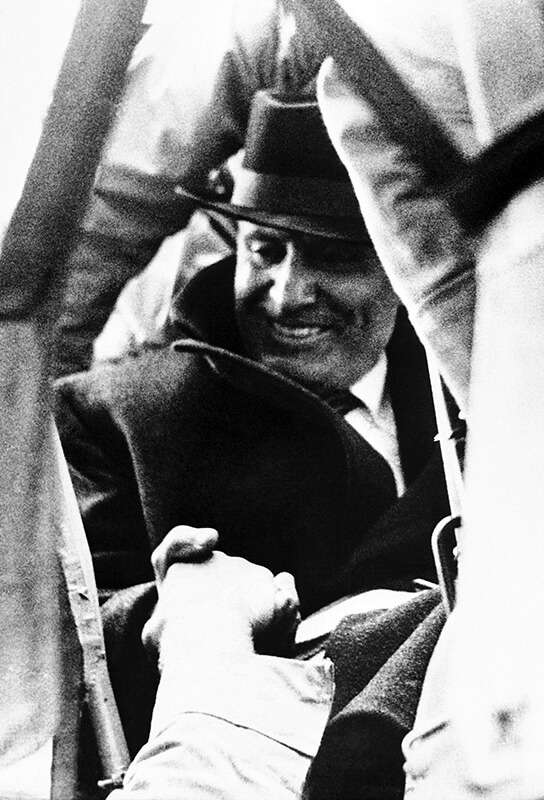
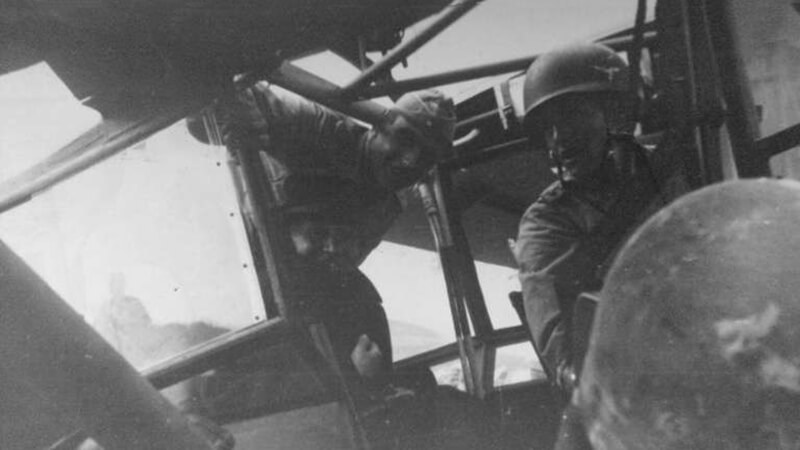
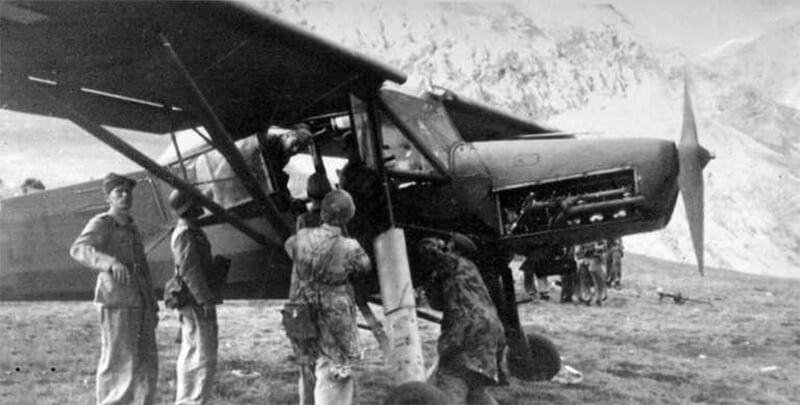
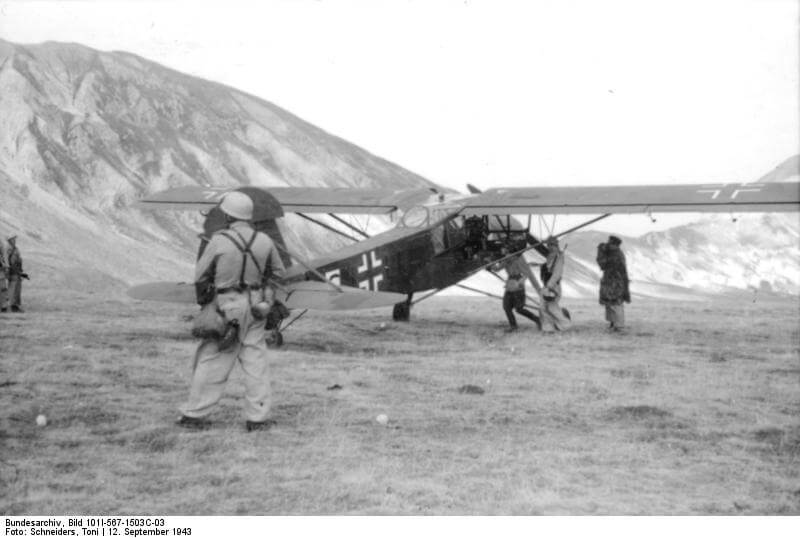
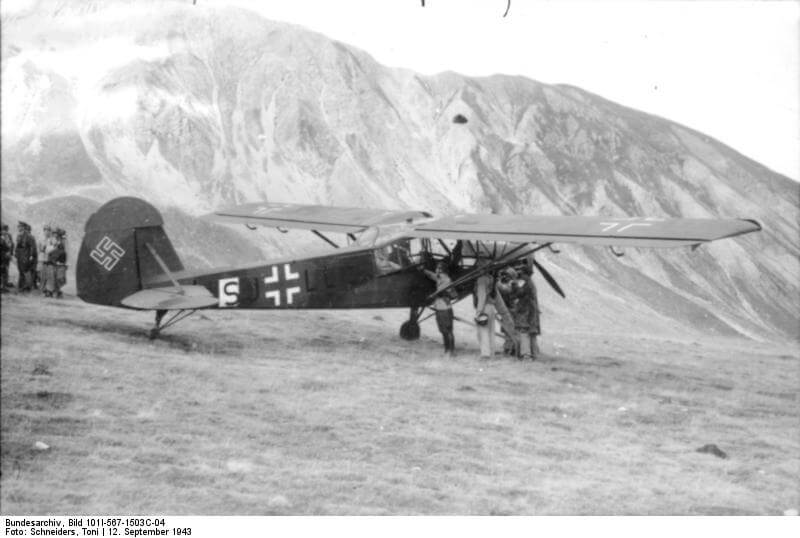
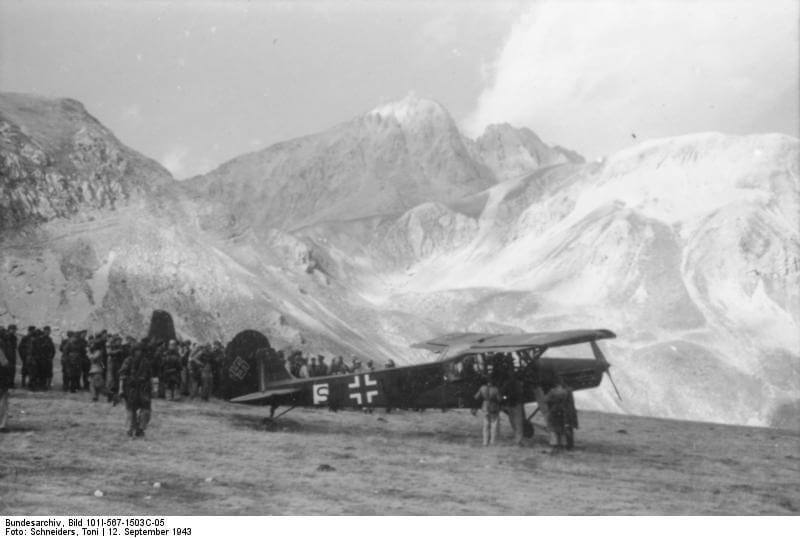
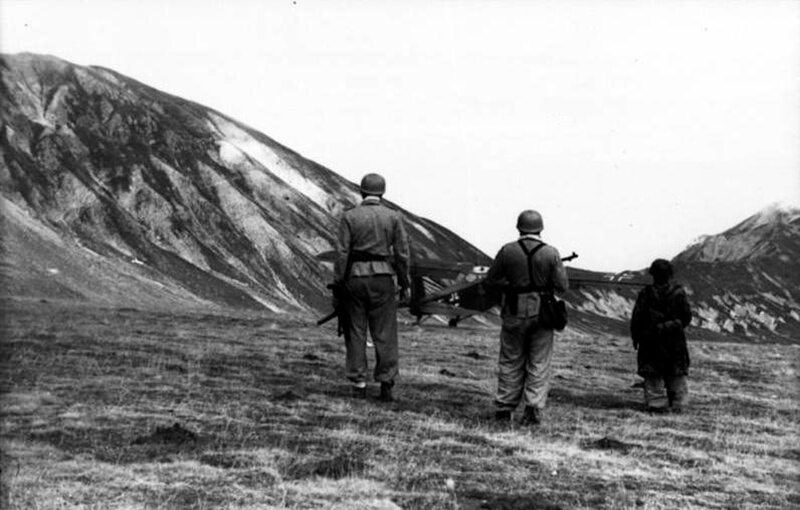
| Unternehmen Eiche, September 12th, 1943, Extraction Phase |
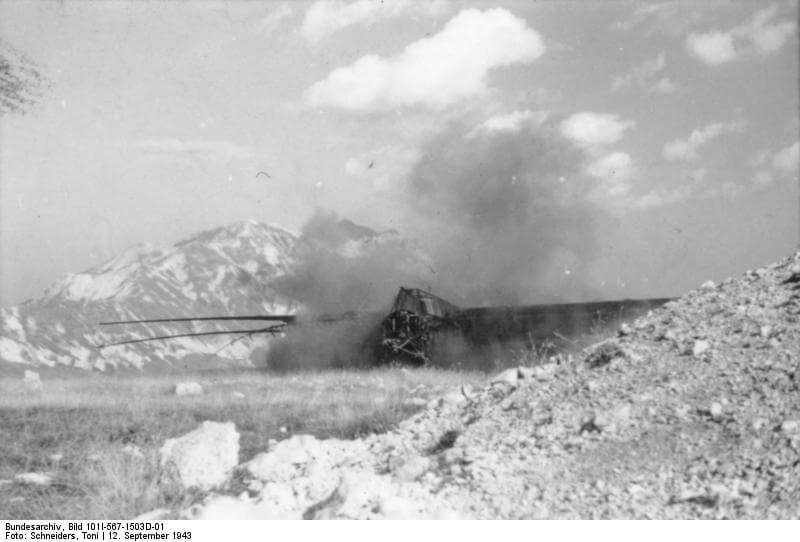
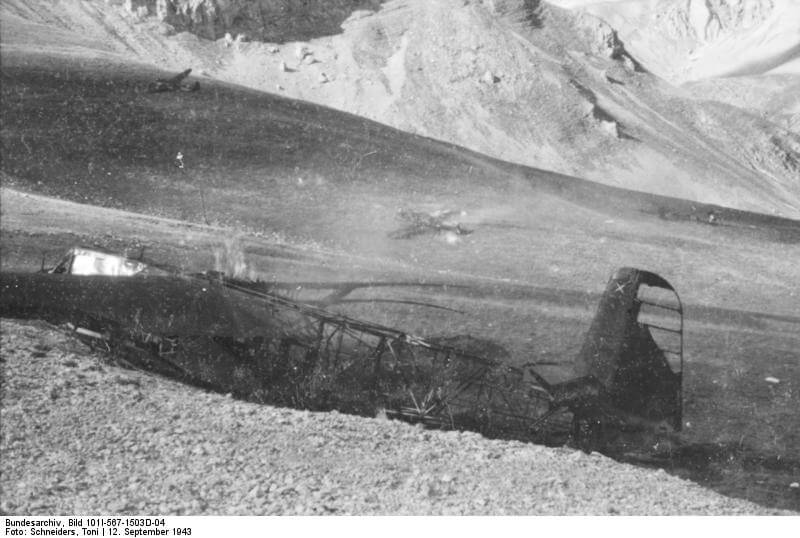
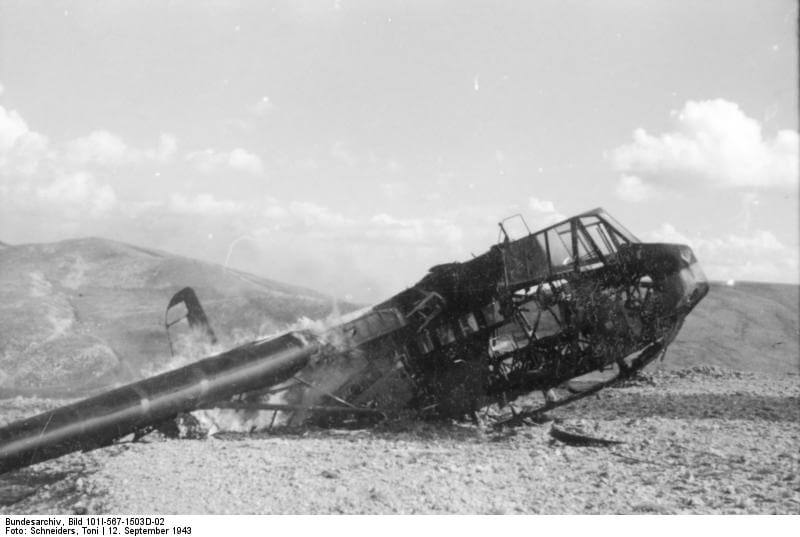
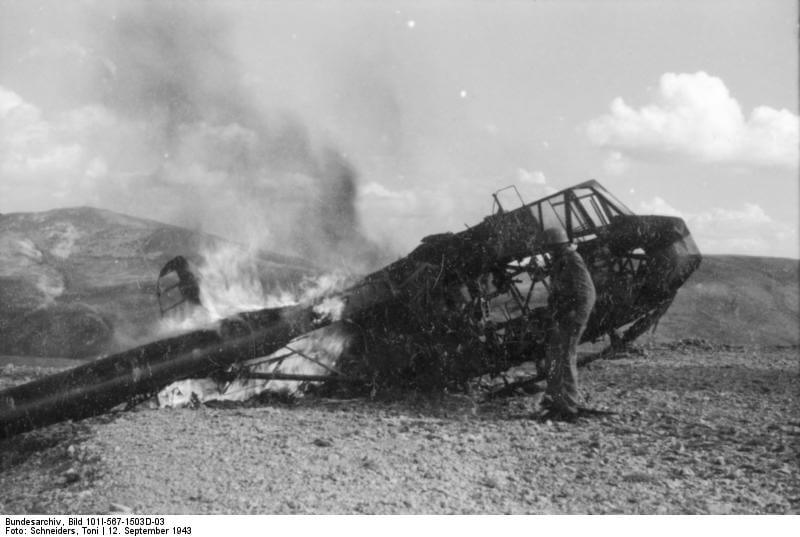
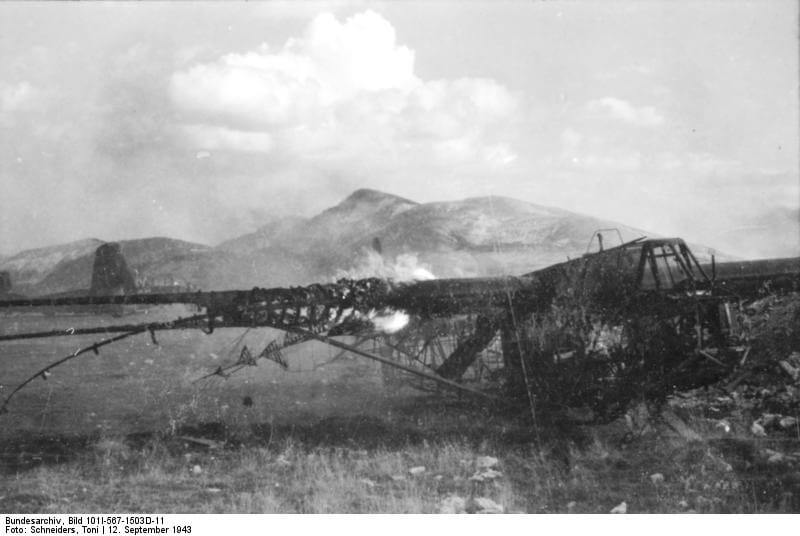
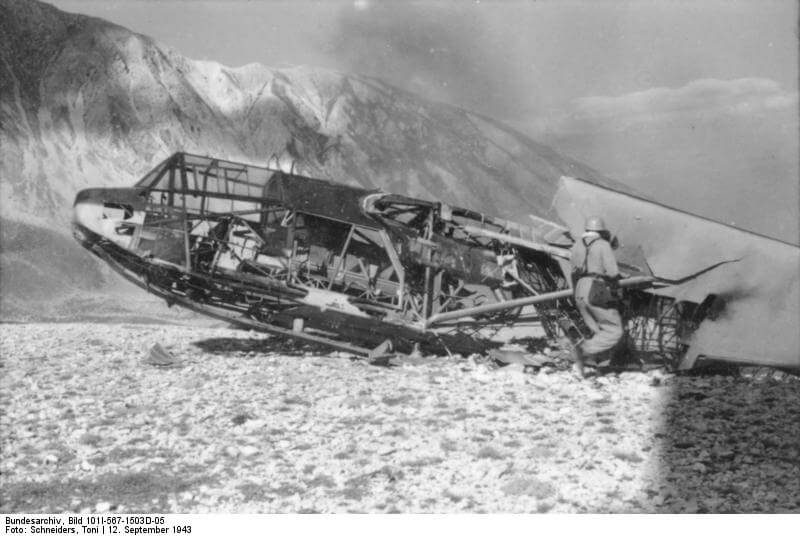
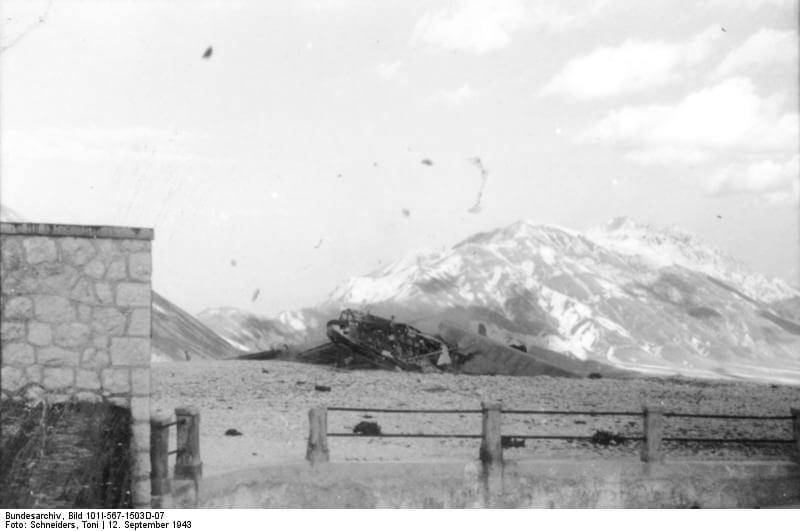
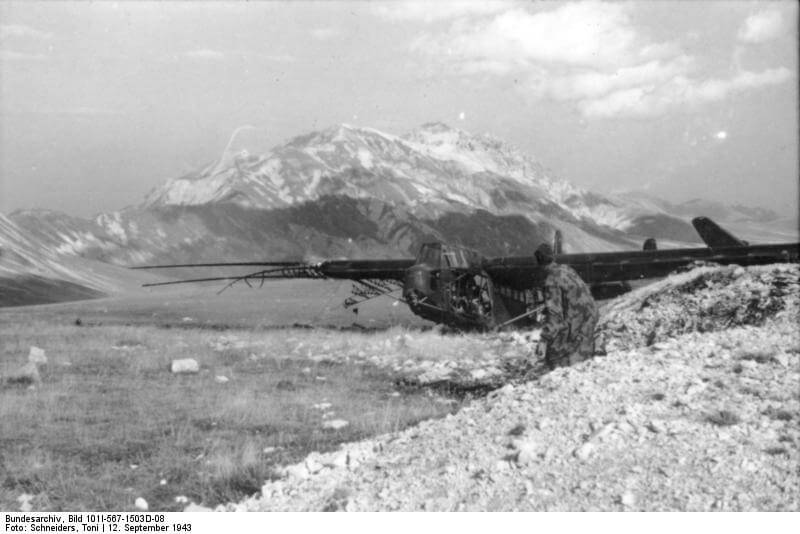
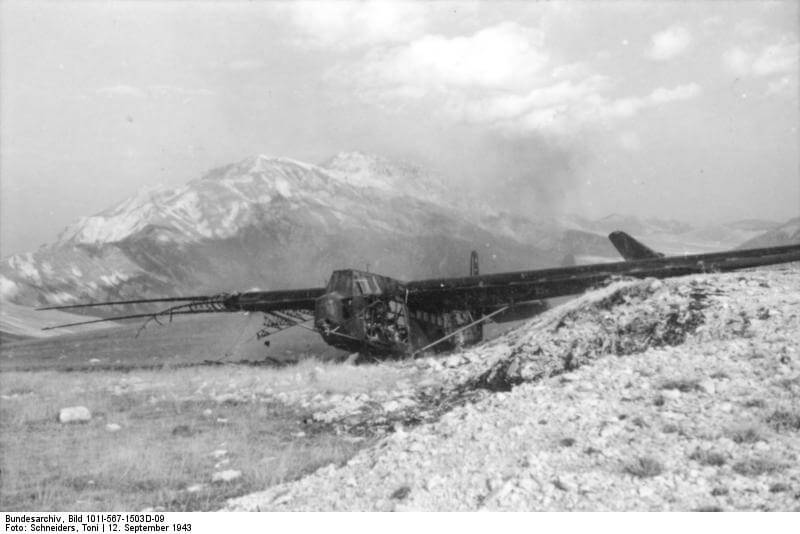
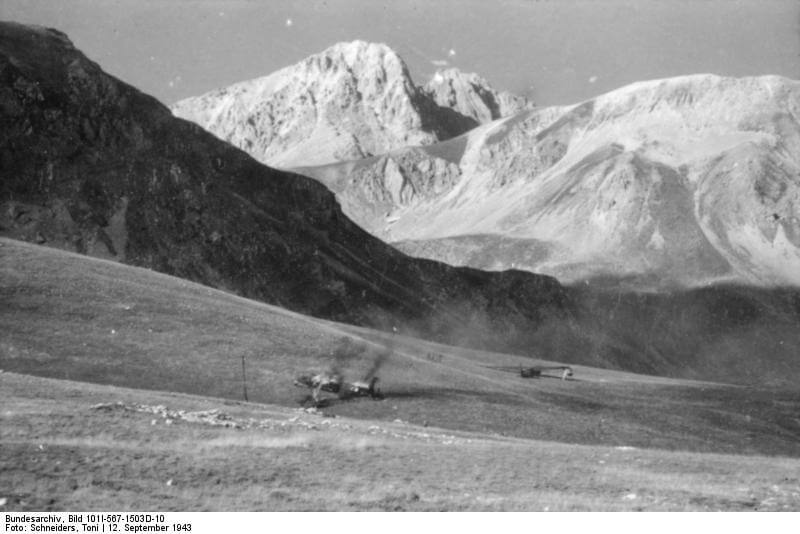
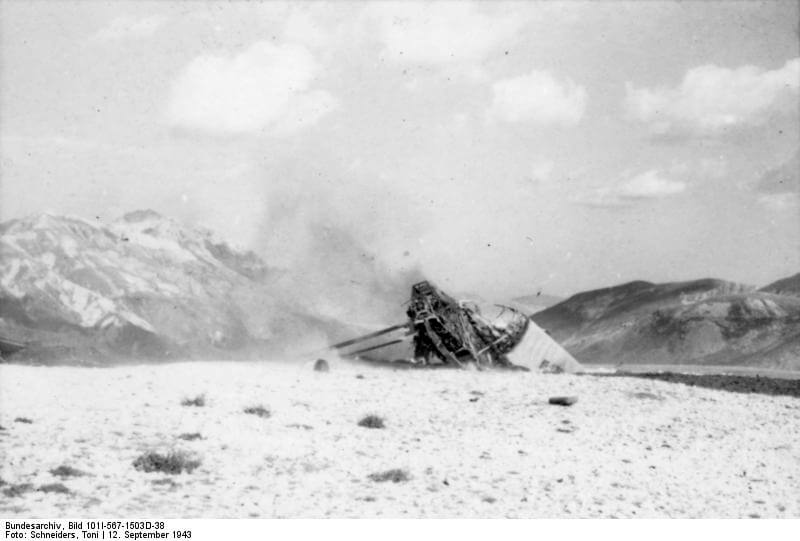
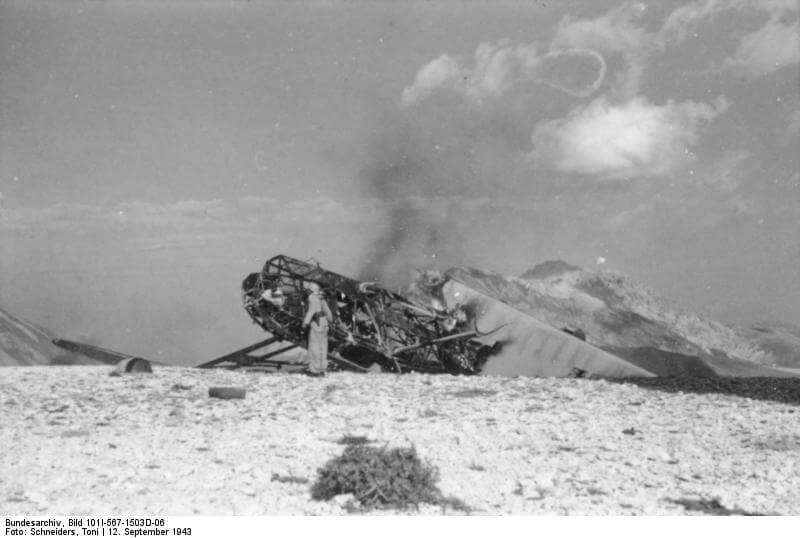
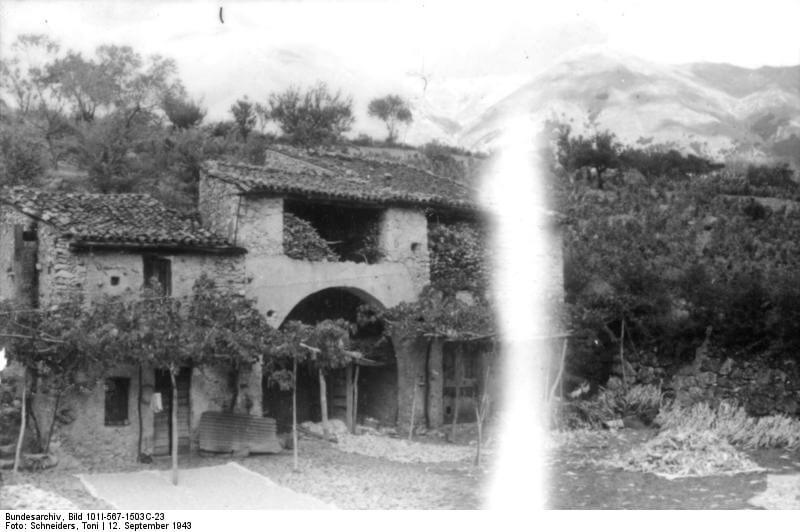
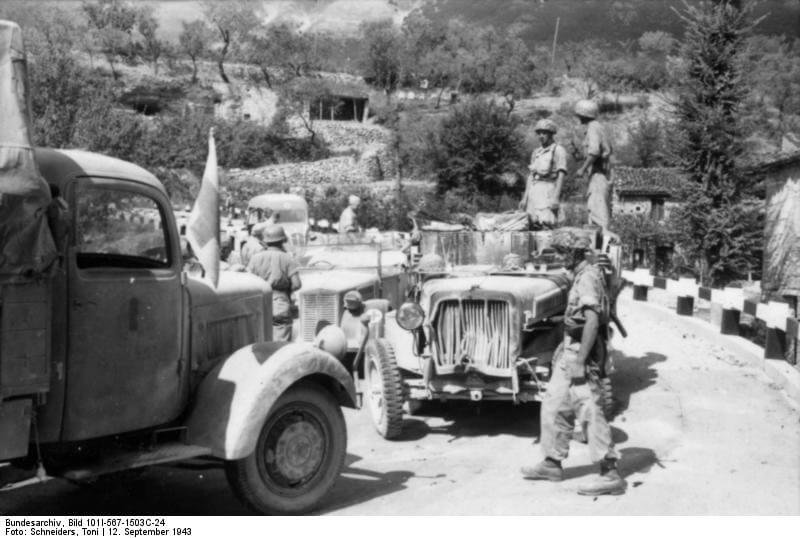
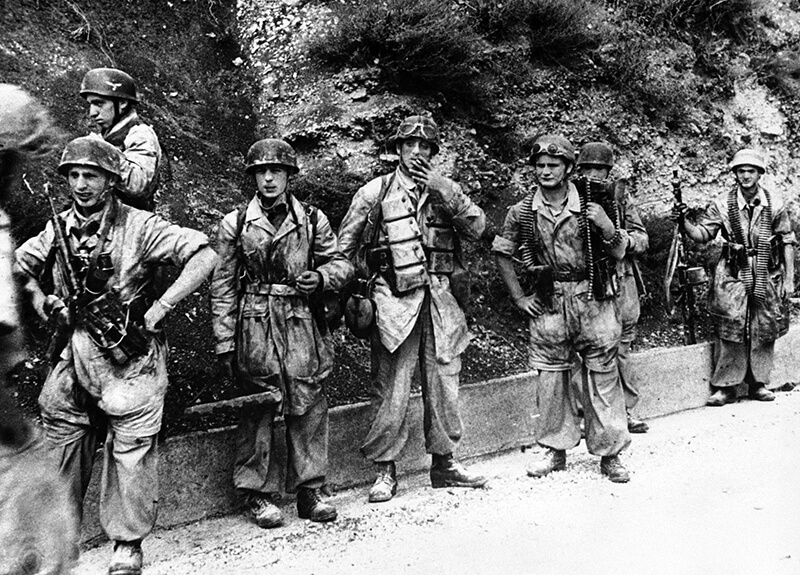
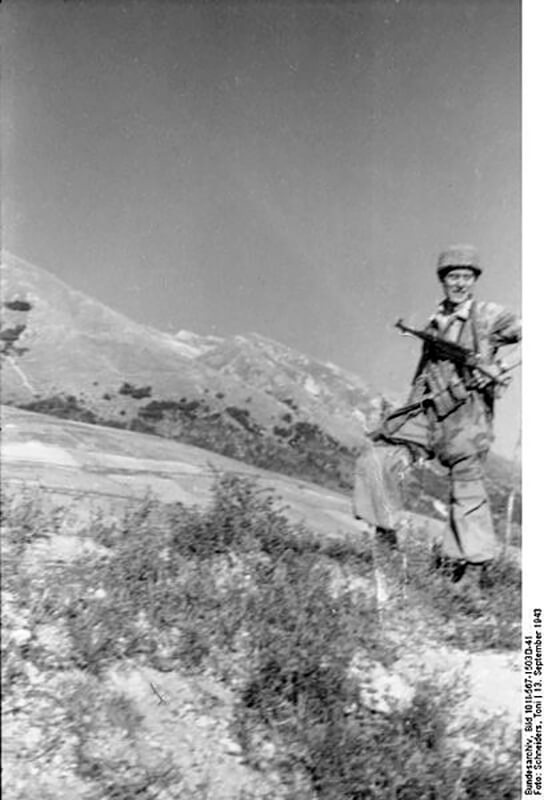
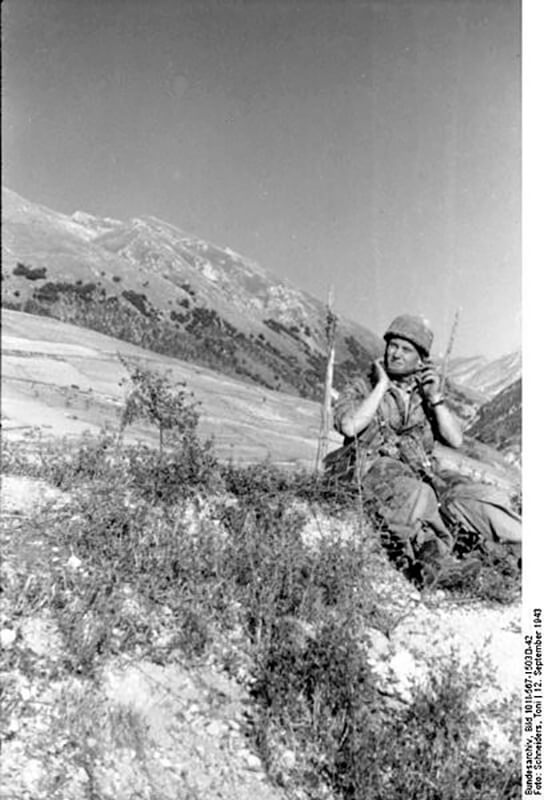
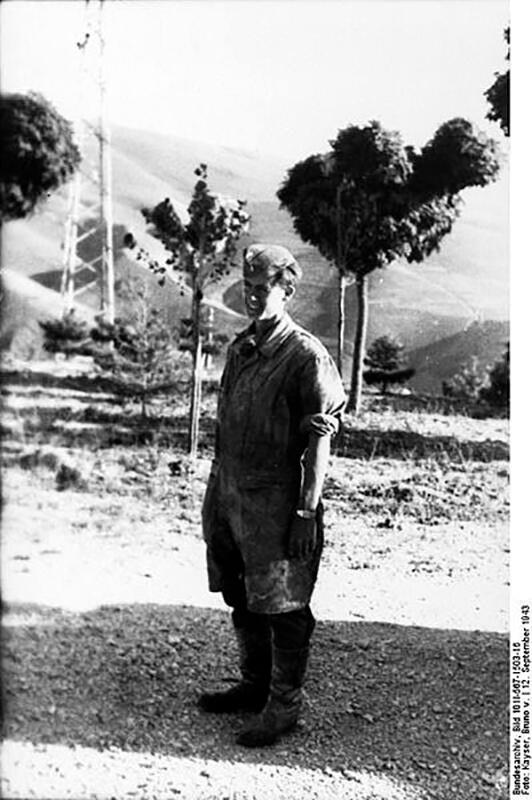
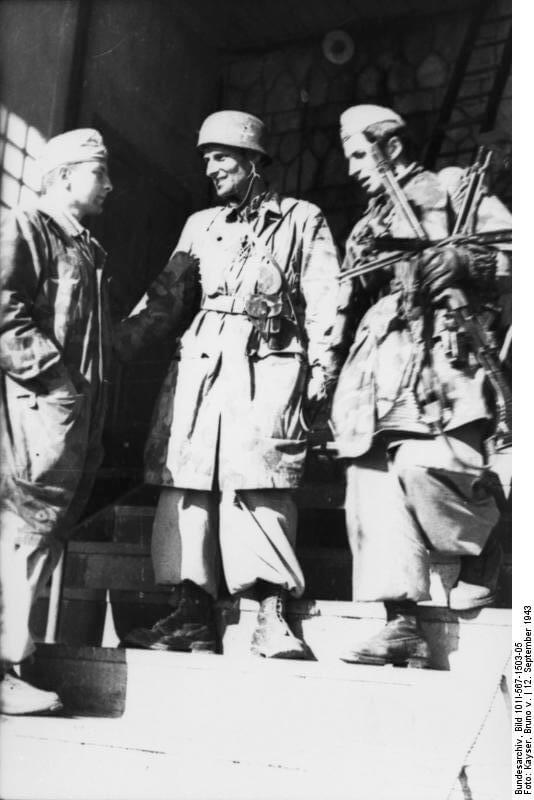
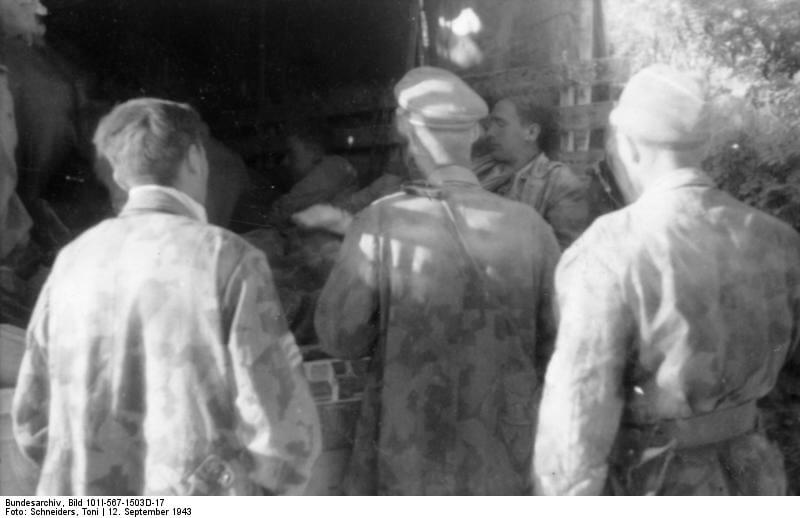
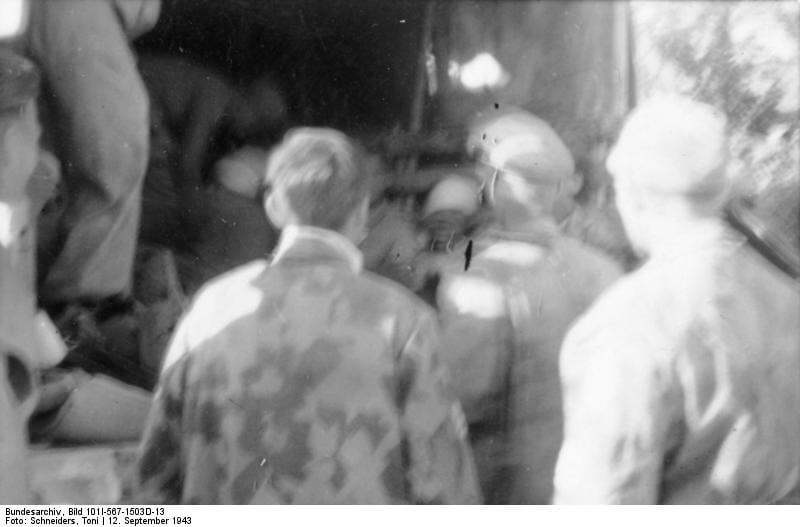
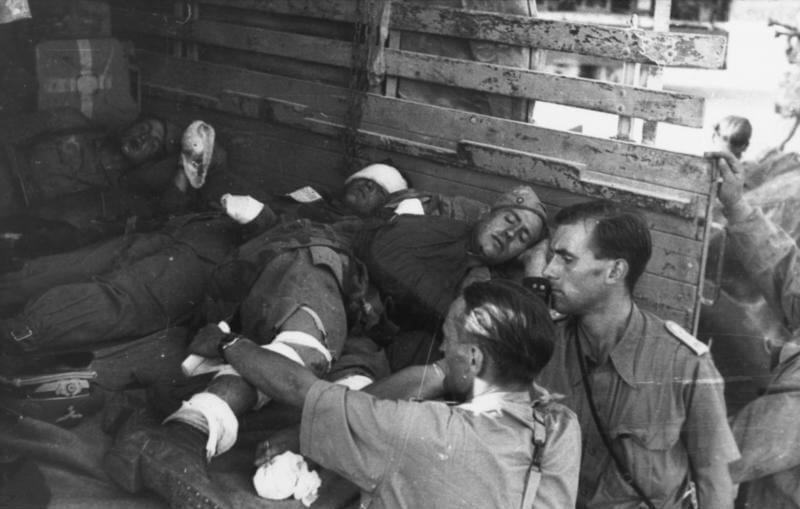
| Unternehmen Eiche, September 13th, 1943 |
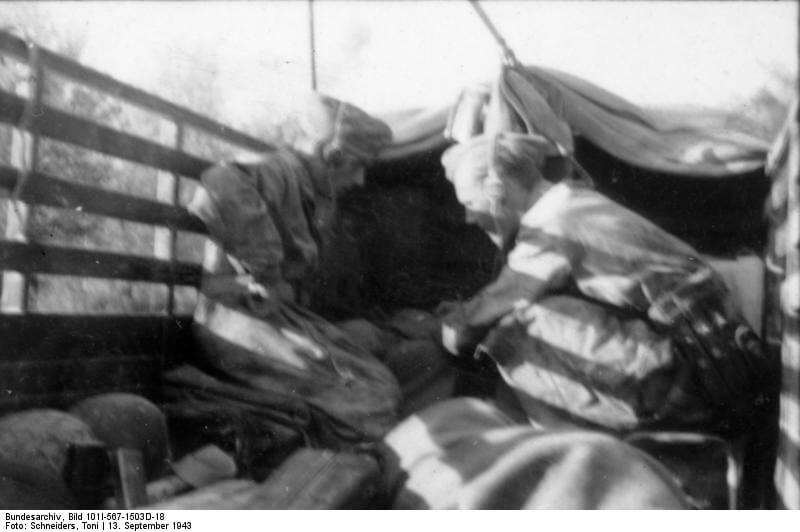
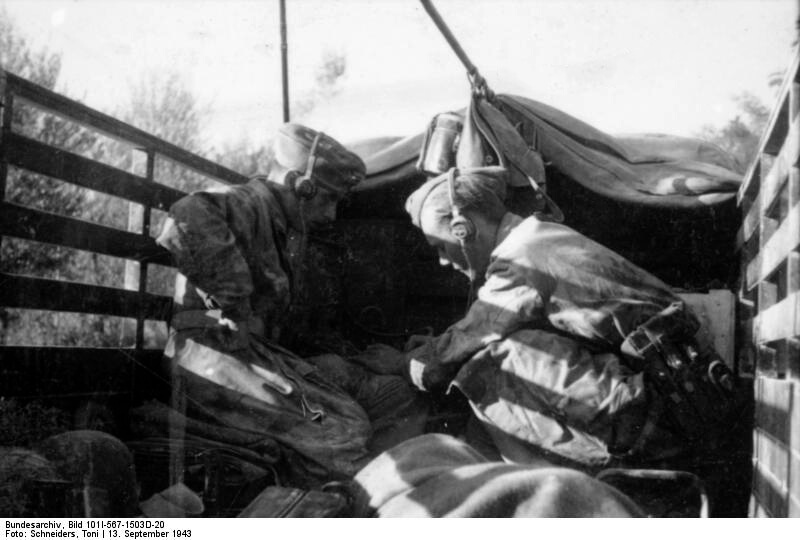
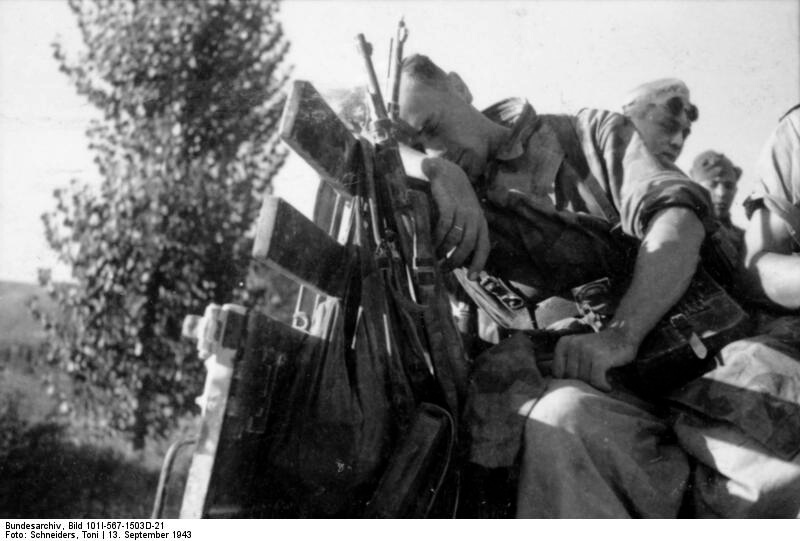
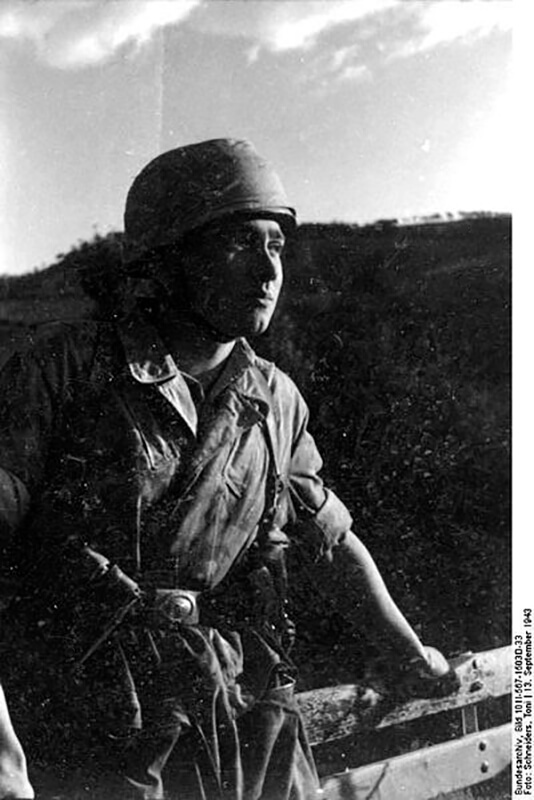
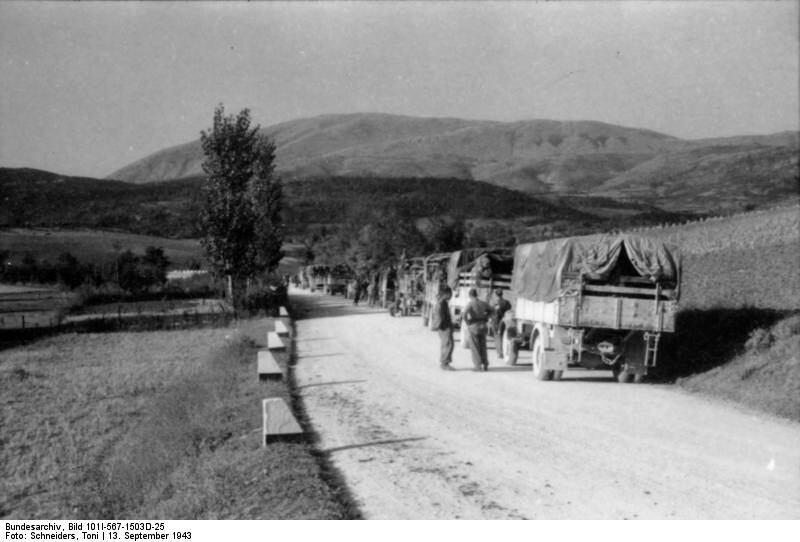
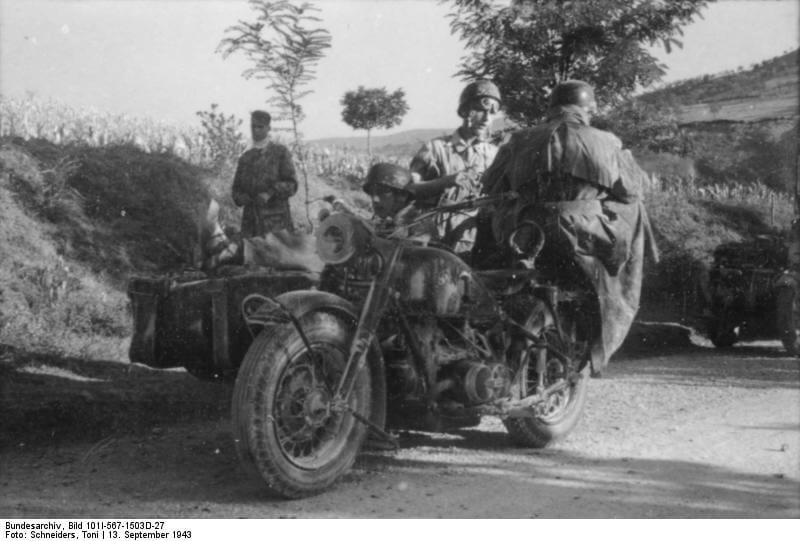
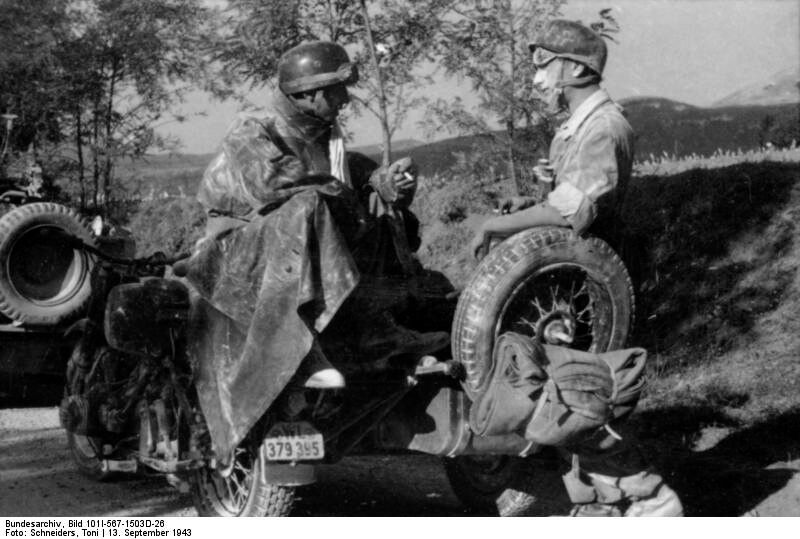
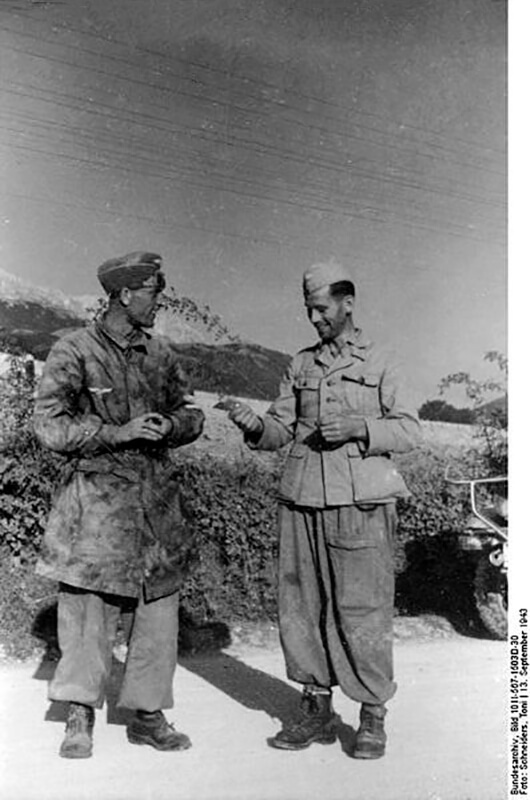
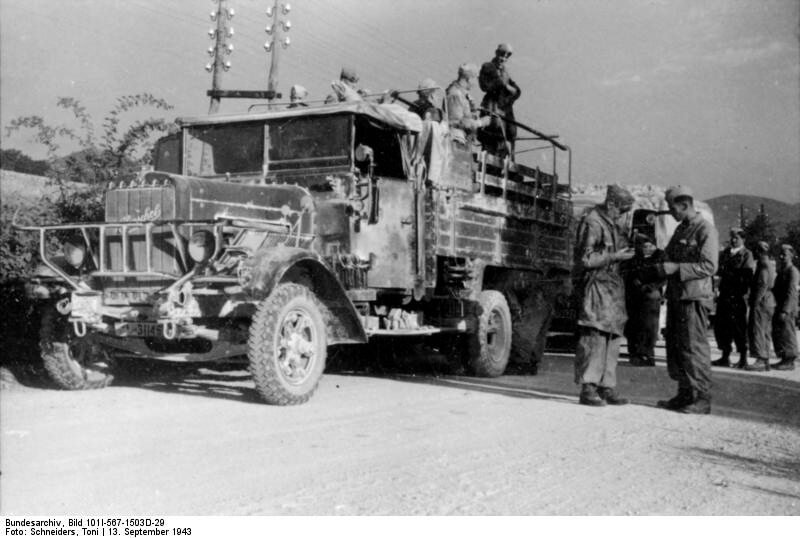
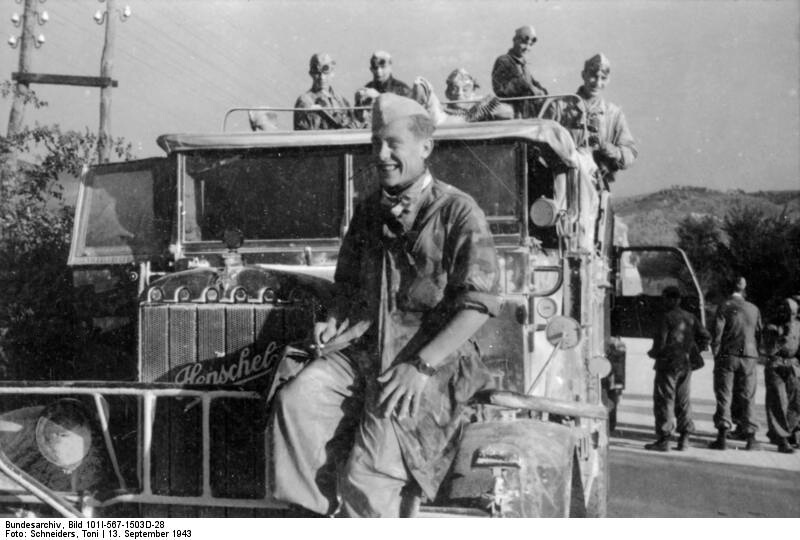
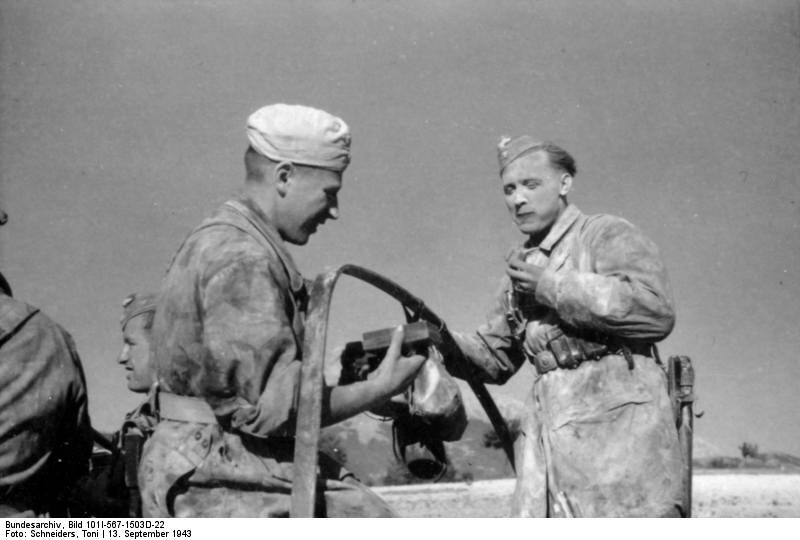
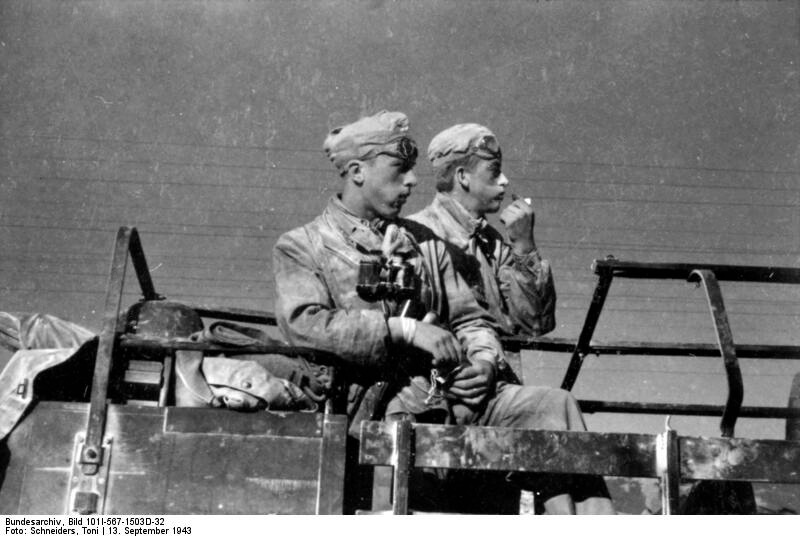
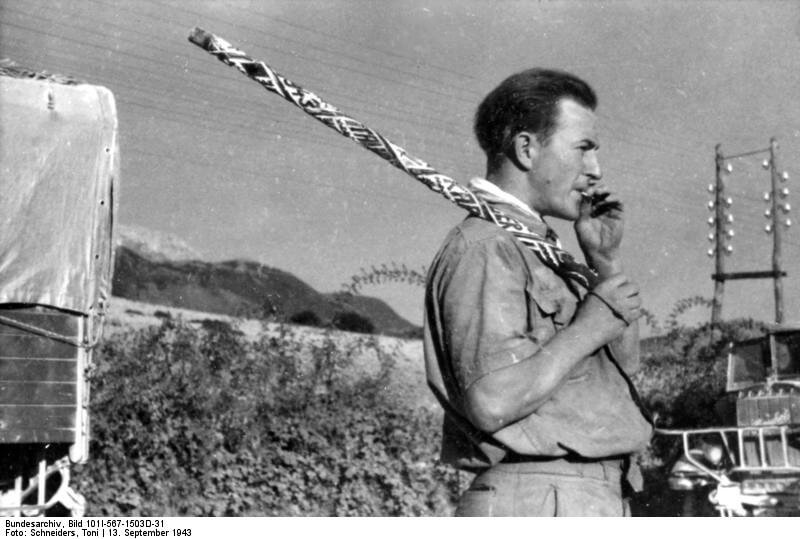
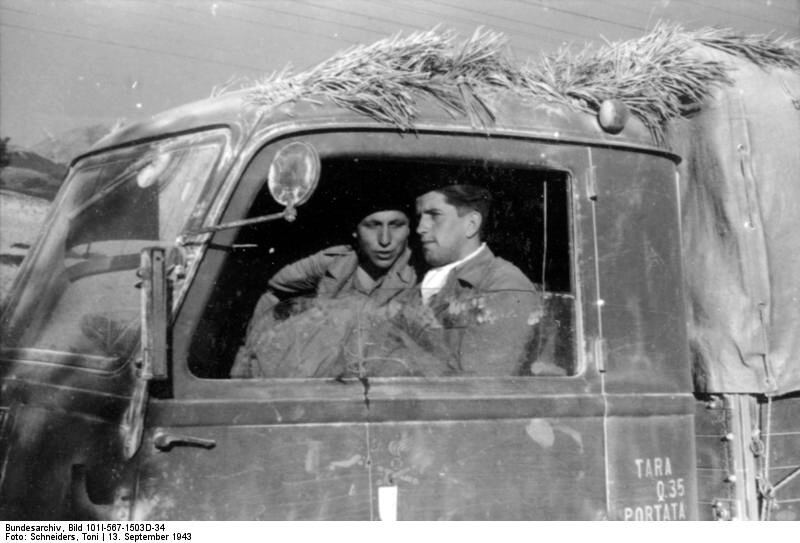
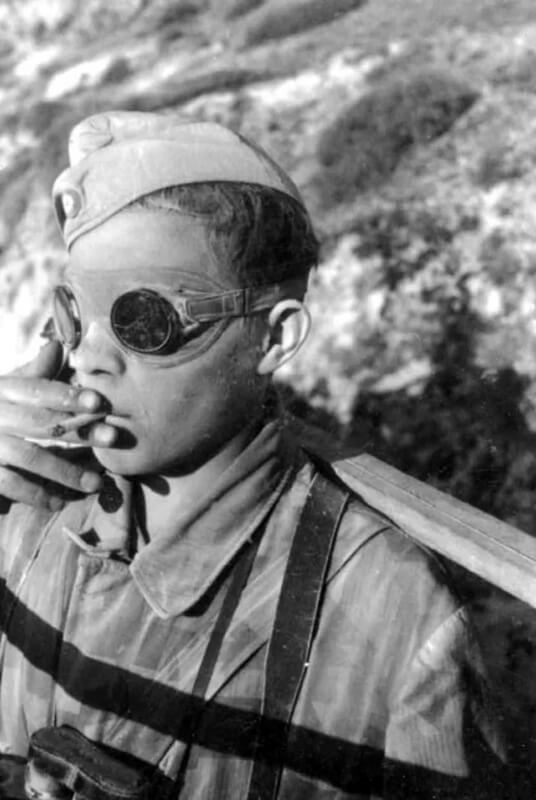
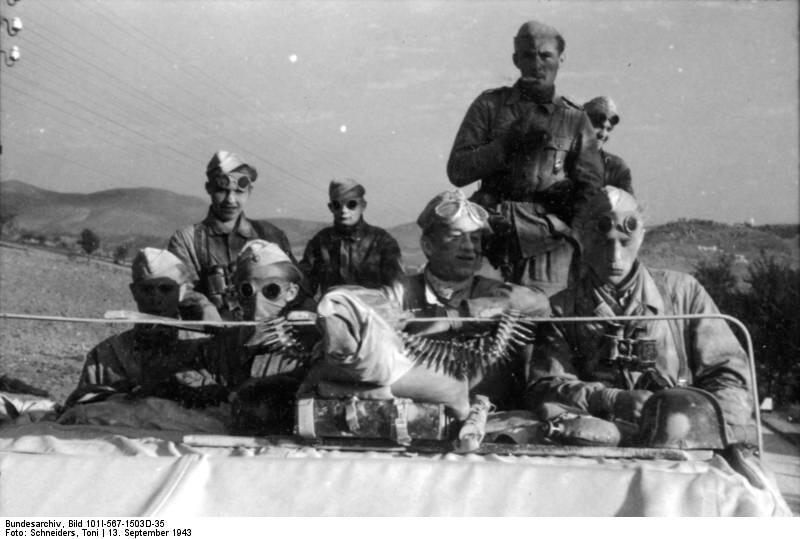
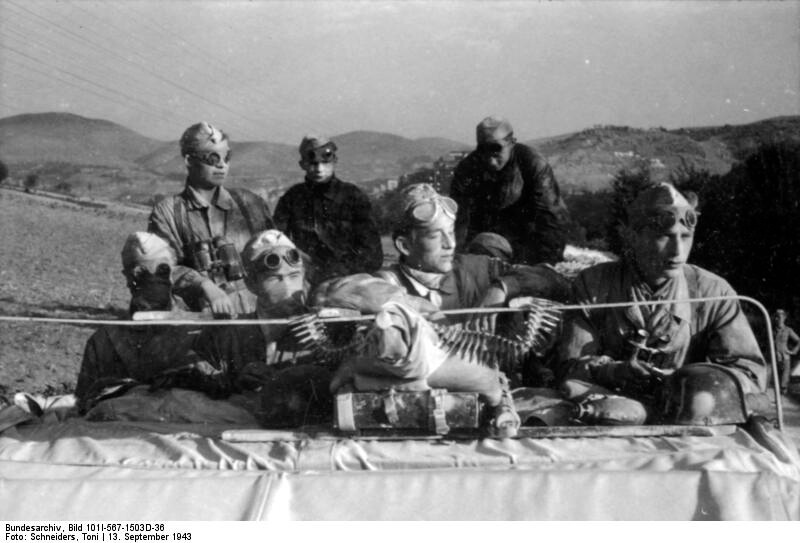
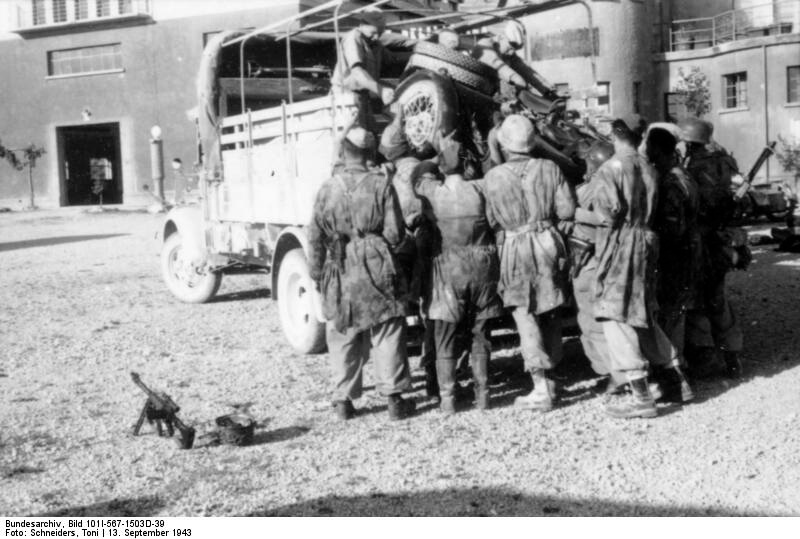
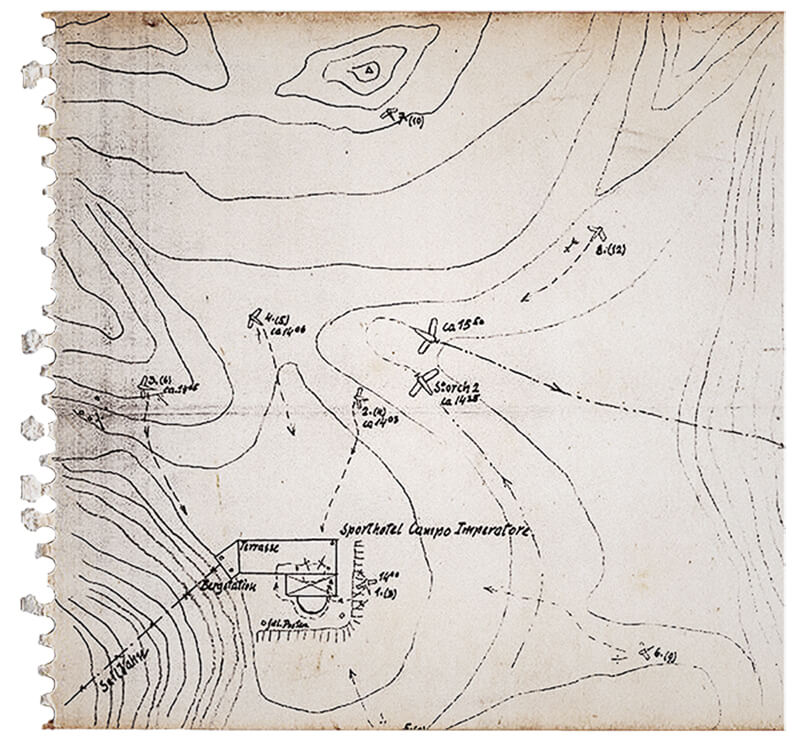
| Unternehmen Eiche in Colour. |
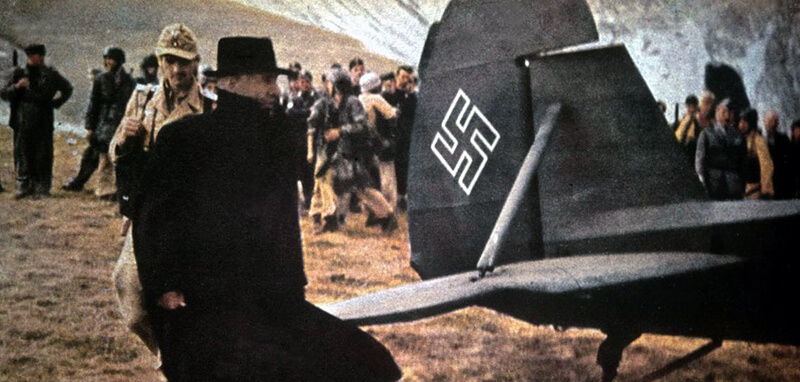
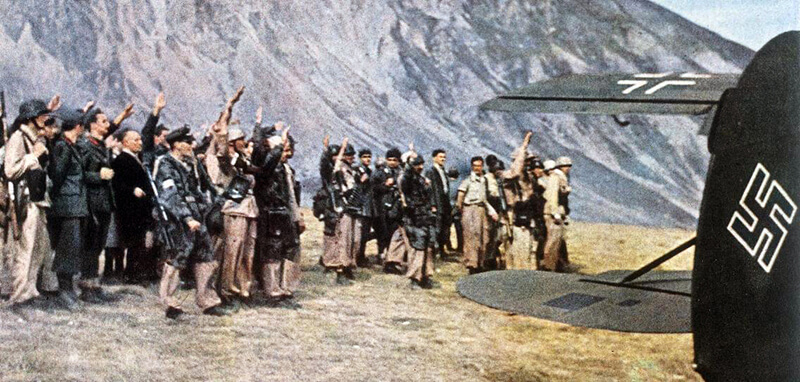
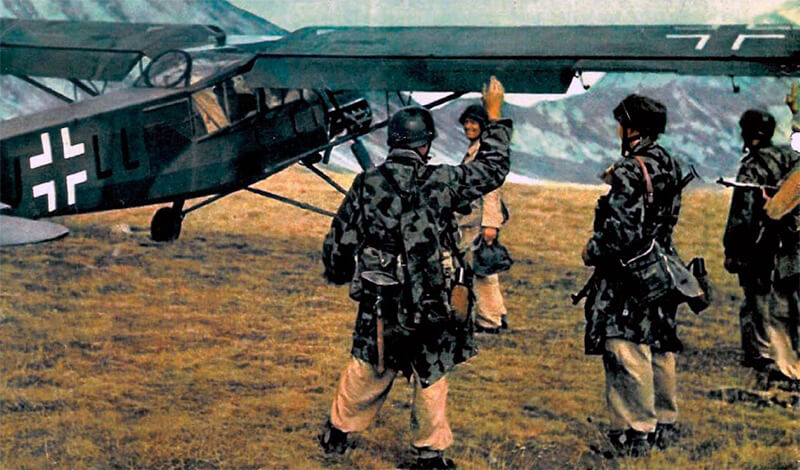
| Aftermath |
